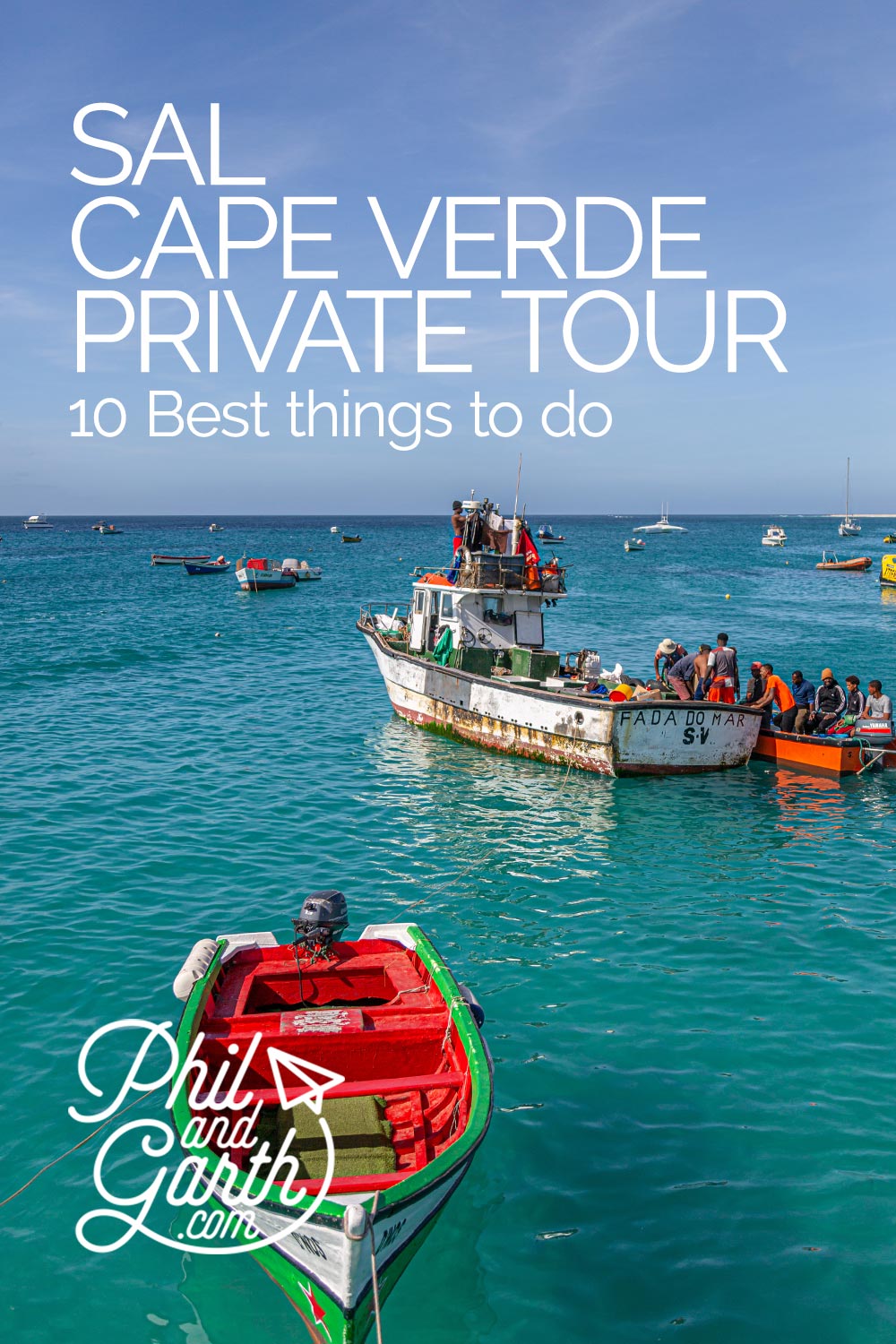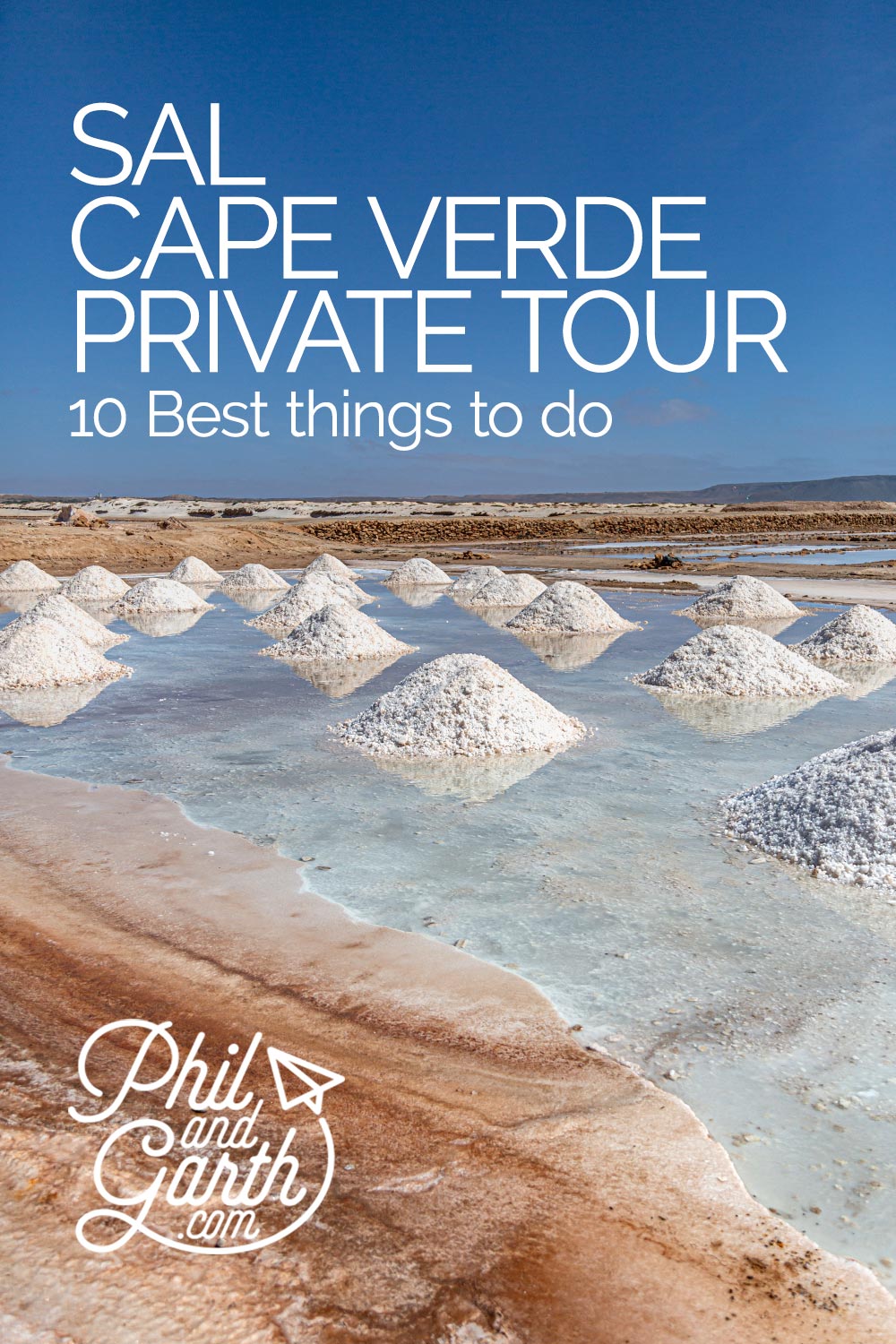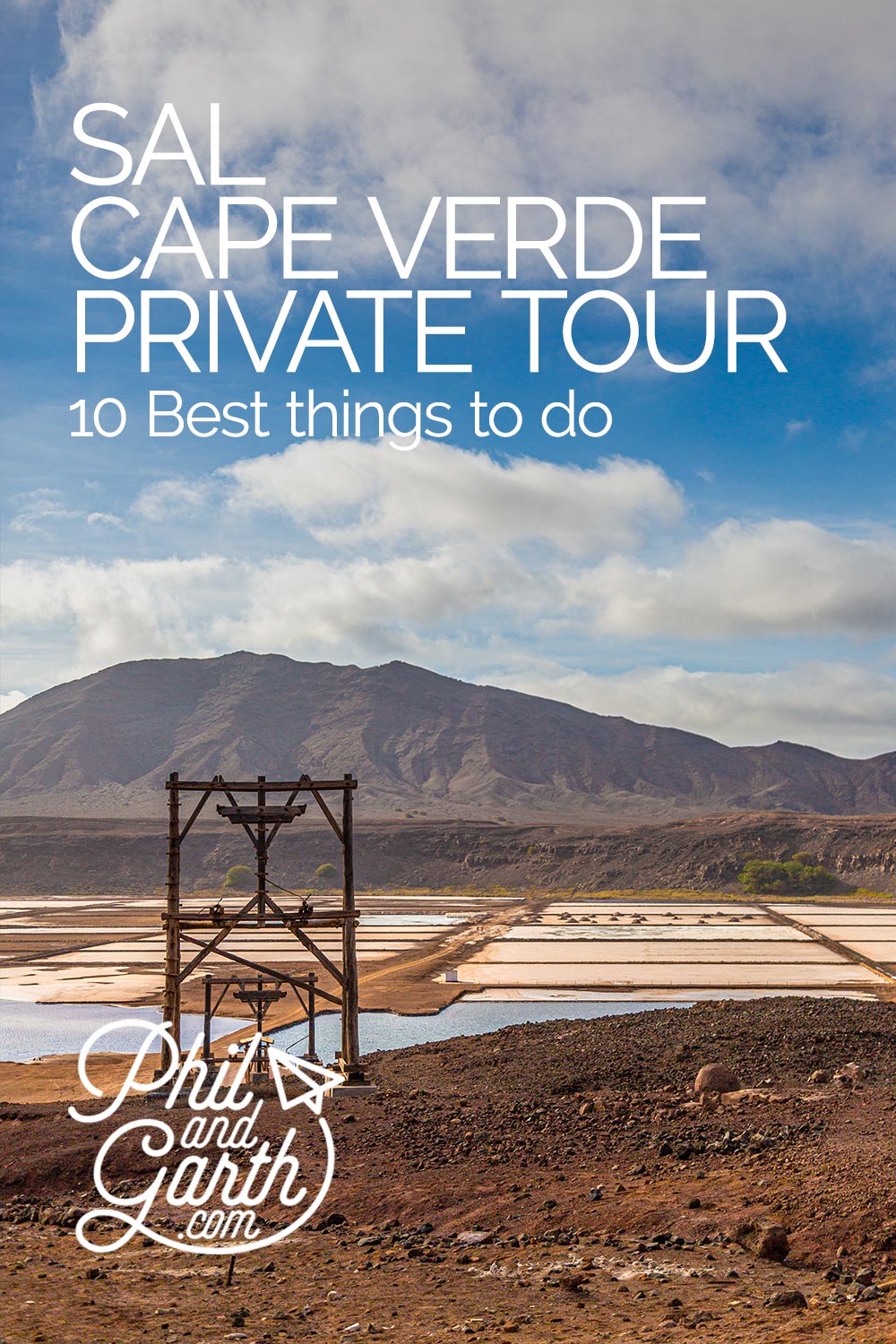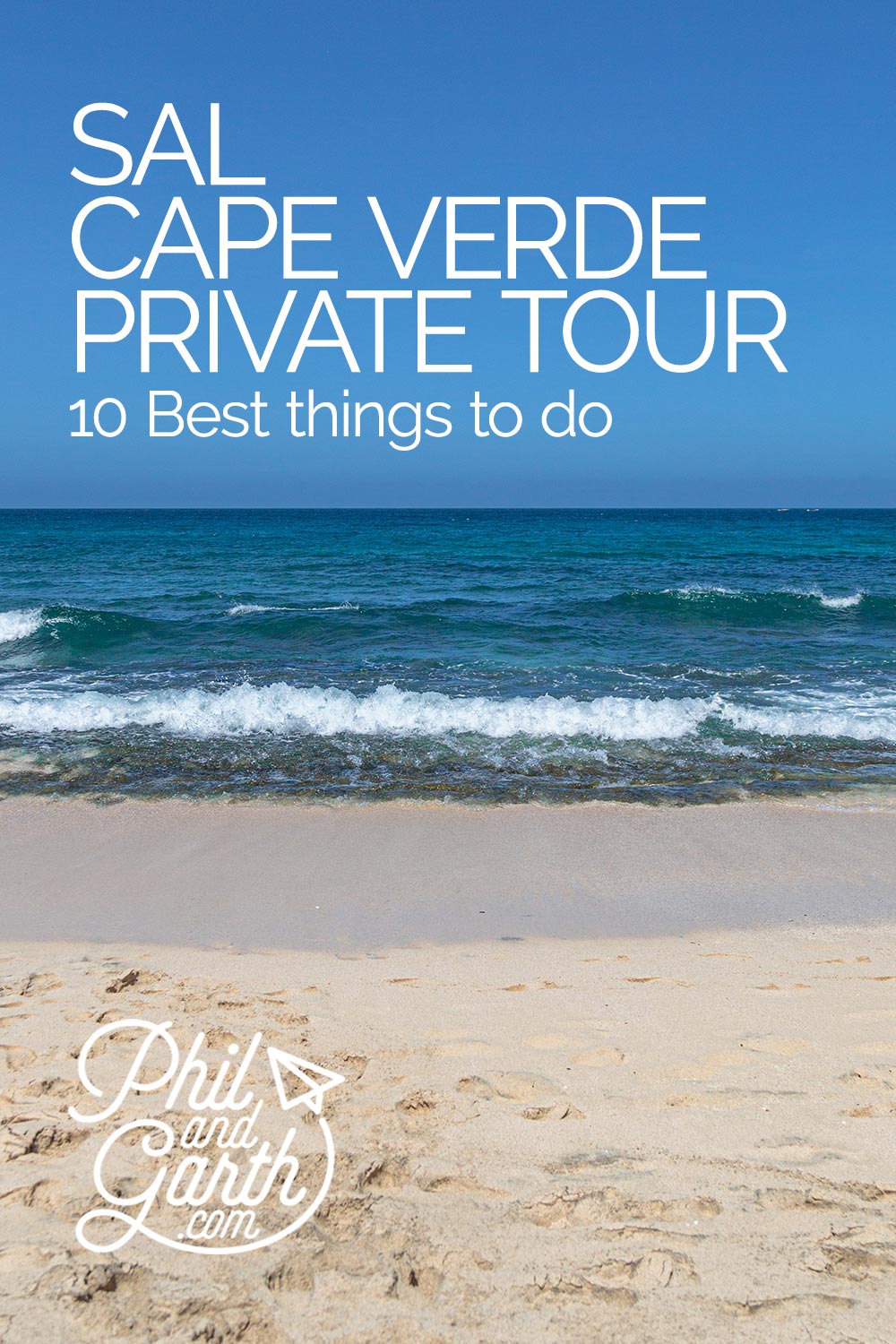Last updated: 28th April 2024
We wanted a winter sun fly and flop holiday to switch off and relax from work for 5 days. So we chose our first time trip to the lesser known island of Sal, Cape Verde in West Africa. In this blog post we’ll share our Sal island travel guide plus our review of a private Sal island tour we took to see the 10 best things to do on Sal, Cape Verde. 🇨🇻😎
Table of Contents
About Cape Verde
Cape Verde is a small archipelago country of 10 volcanic islands in the middle of the Atlantic Ocean. Located 300 miles off the Senegal coast in West Africa and 2 hours flying hours south of the popular Canary Islands. Each Cape Verde island has its own identity and micro-climate – some are mountainous and green like Santiago and São Nicolau whilst others are flat with desert landscapes like Sal and Boa Vista.
Cape Verde is famous for its year-round warm weather, turtle watching and as a relaxing beach holiday destination. Cape Verde has a tropical dry climate and very little rain. Temperatures average 26ºC – 31ºC. Some tour operators describe it as the ‘African Caribbean’ and we can see why.
A quick bit of history – the Portuguese discovered and colonised the Cape Verde islands in 1462 and ruled for 500 years. For a period it was a centre of the slave trade, where the Portuguese used the islands as a stopover to bring enslaved Africans from mainland Africa to their other colonies like Brazil and territories in India.
Cape Verde finally became an independent nation in 1975. Today Cape Verde’s 600,000 population is a mix of African, Brazilian and Portuguese cultures and most Cape Verdeans are Roman Catholics.
About Sal Island, Cape Verde
Sal is the main tourist island of Cape Verde, its name means ‘salt’ in Portuguese. It is a very small island – just 18 miles long and 7 miles wide. Sal is somewhat barren and very flat and receives the northeast Trade Winds which can be strong – great for windsurfers and kite surfers who flock here. But for beachgoers, this means choppy waters and strong currents at certain times of the year. Most people come for a relaxing time in one of the 5* resorts.
Sal is fast becoming a winter sun destination for us Brits, with flight times of just under 6 hours from the UK. Cape Verde is considered a developing nation, so the same standards as Europe should not be expected. Not many tourist attractions are found on Sal, but you will find lots of natural attractions as you’ll discover in this post. Sightseeing like other Atlantic islands, such as Madeira or the Canary Islands, should not be expected.
We liked Sal as it has a different vibe to the nearby Canary Islands, we just hope it’s not turned into another overdeveloped Lanzarote or Tenerife.
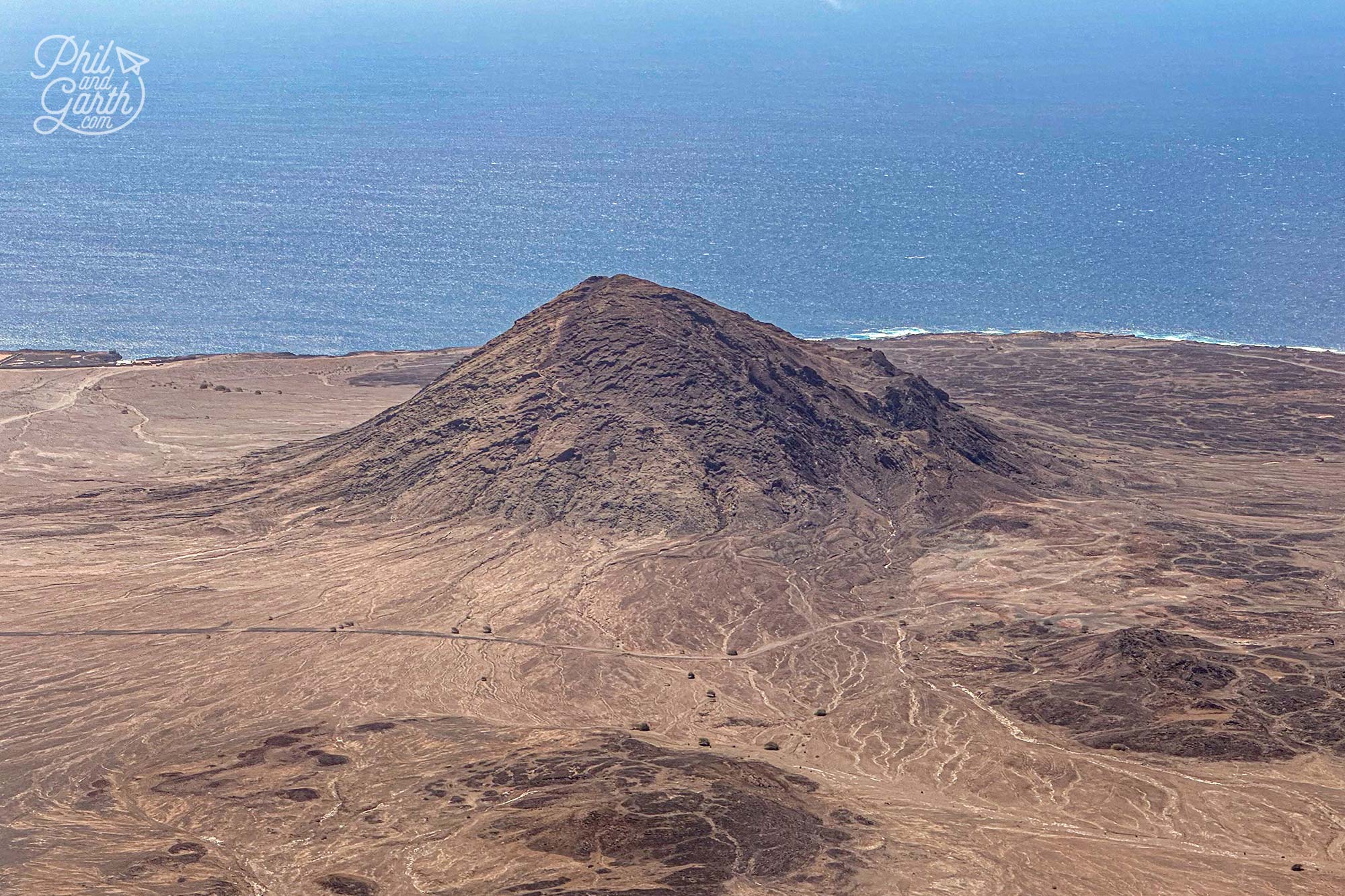
Sal’s landscape is desert-like with extinct volcanoes
Sal Private Island Tour – 10 Things To Do on Sal, Cape Verde
If you’re doing a package holiday like us, it’s really worth taking one day out from your all-inclusive fortress to discover Sal’s island life and local culture.
There are lots of Sal island tours to choose from. You can book a variety of day tours with your package holiday operator, but they tend to be in big groups of 20 people. We noticed the 4×4 high-octane tours of the island are popular, but this is super dirty, needing goggles, protective clothing and navigating sand dunes. Not us 😂
So we decided on a local Sal island private day tour which we booked in advance with Logan Tours. It turned out to be the best day because our fantastic guide Kendall tailored parts to what we wanted to do. Garth was interested in seeing Sal’s street art scene and Phil wanted to see a freshly caught tuna fish.
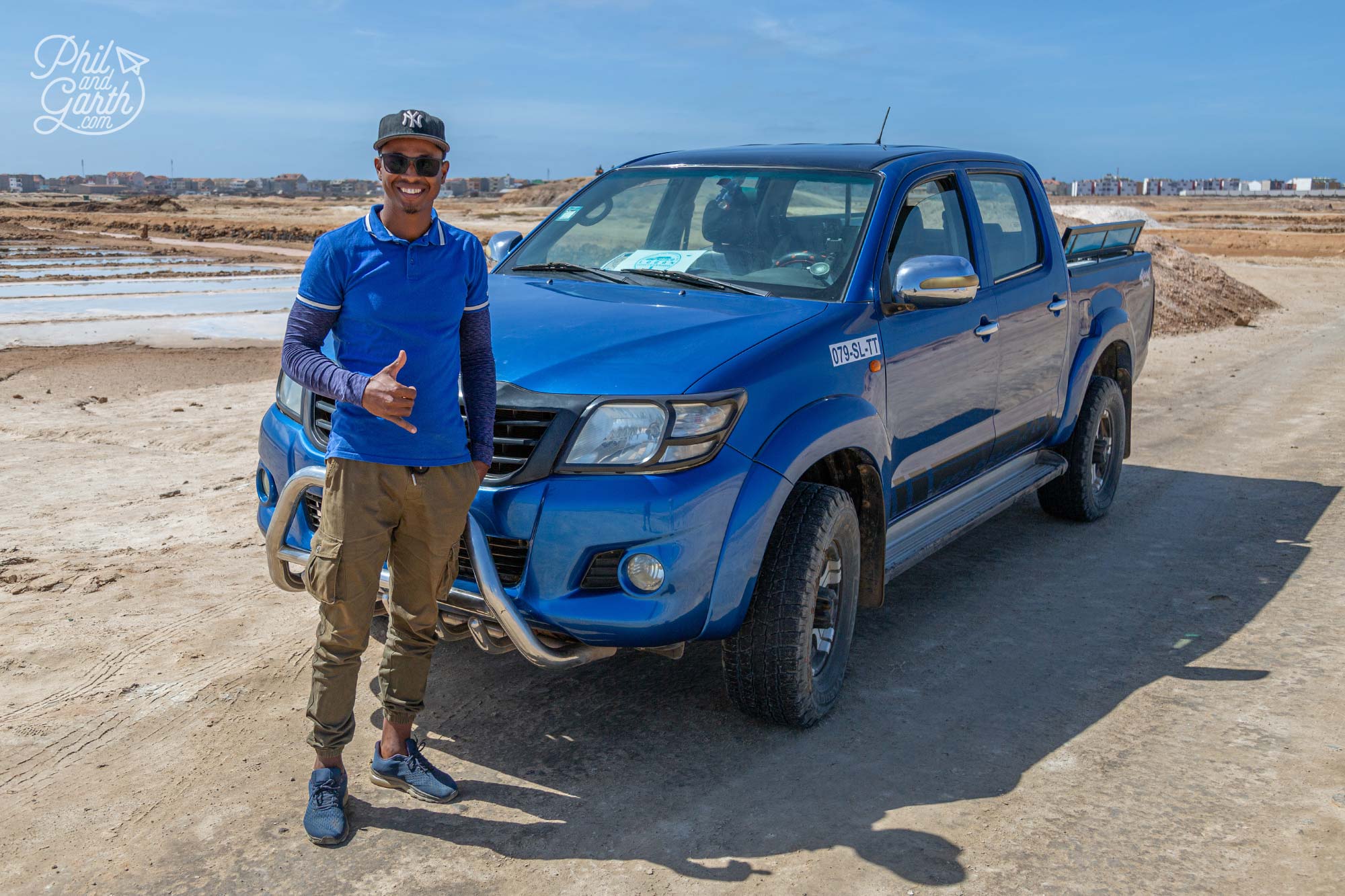
Our Sal Private Island Tour with Logan Tours
1. Santa Maria
We began our Sal island tour in the town of Santa Maria. Located at the southern end of Sal, it’s the heart and soul of Sal. We arrived at the town’s iconic pier – Pontao de Santa Maria at 9.30am, the perfect time to see the fishermen landing their boats delivering huge yellowfin tunas and boxes of smaller fish.
Ladies work really hard sorting the fish and dividing them up, with some people gutting them right on the pier’s edge. The precious cargo then gets carried off by people with wheelbarrows or by balancing bowls of fish on their heads, presumably walking them to local restaurants and hotels.
It’s noisy and busy here which we liked, great people watching being amongst the hubble and bubble, watching local life go by, but without getting in the way.
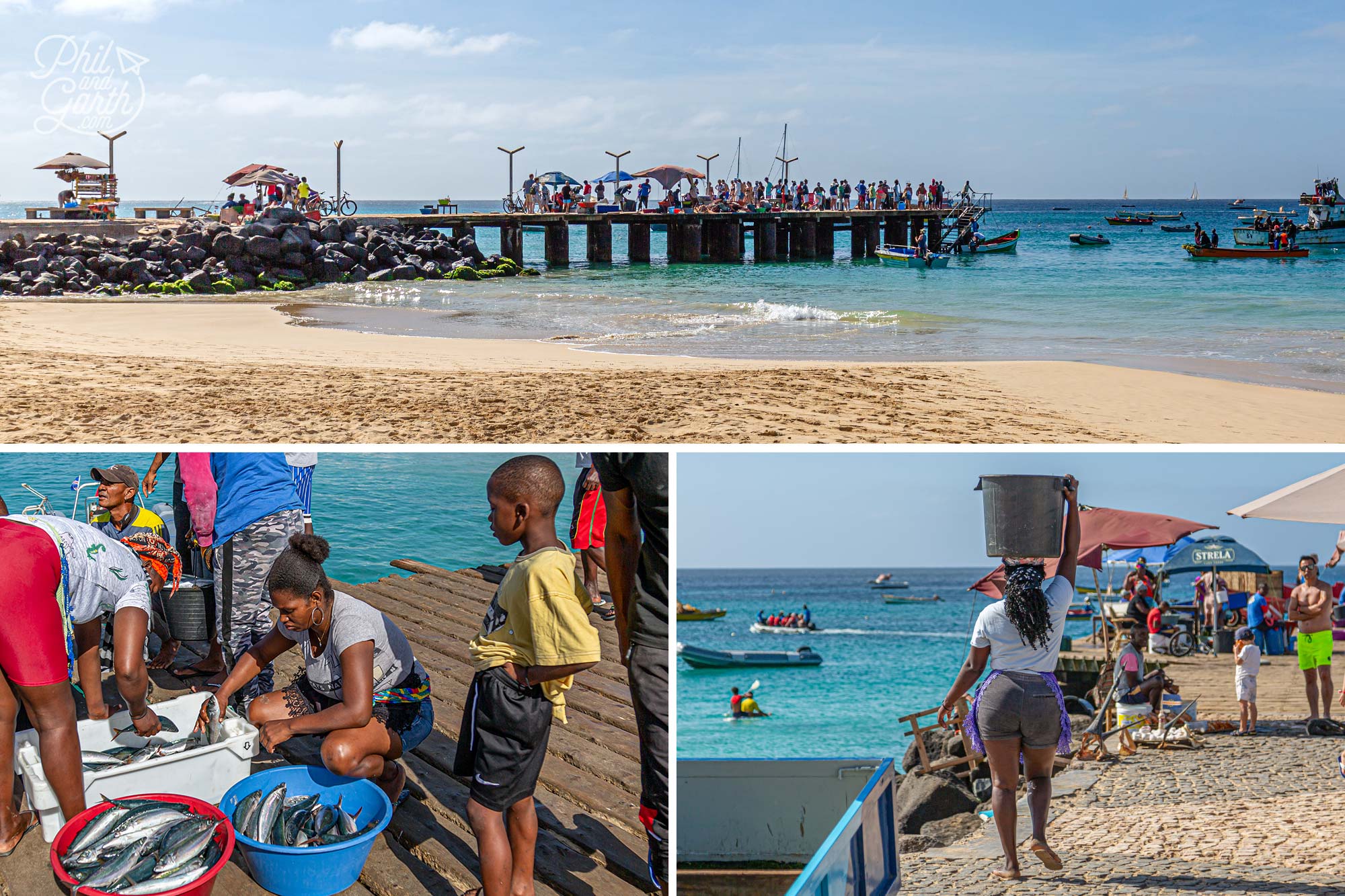
The Santa Maria Pier – a hive of activity in the mornings
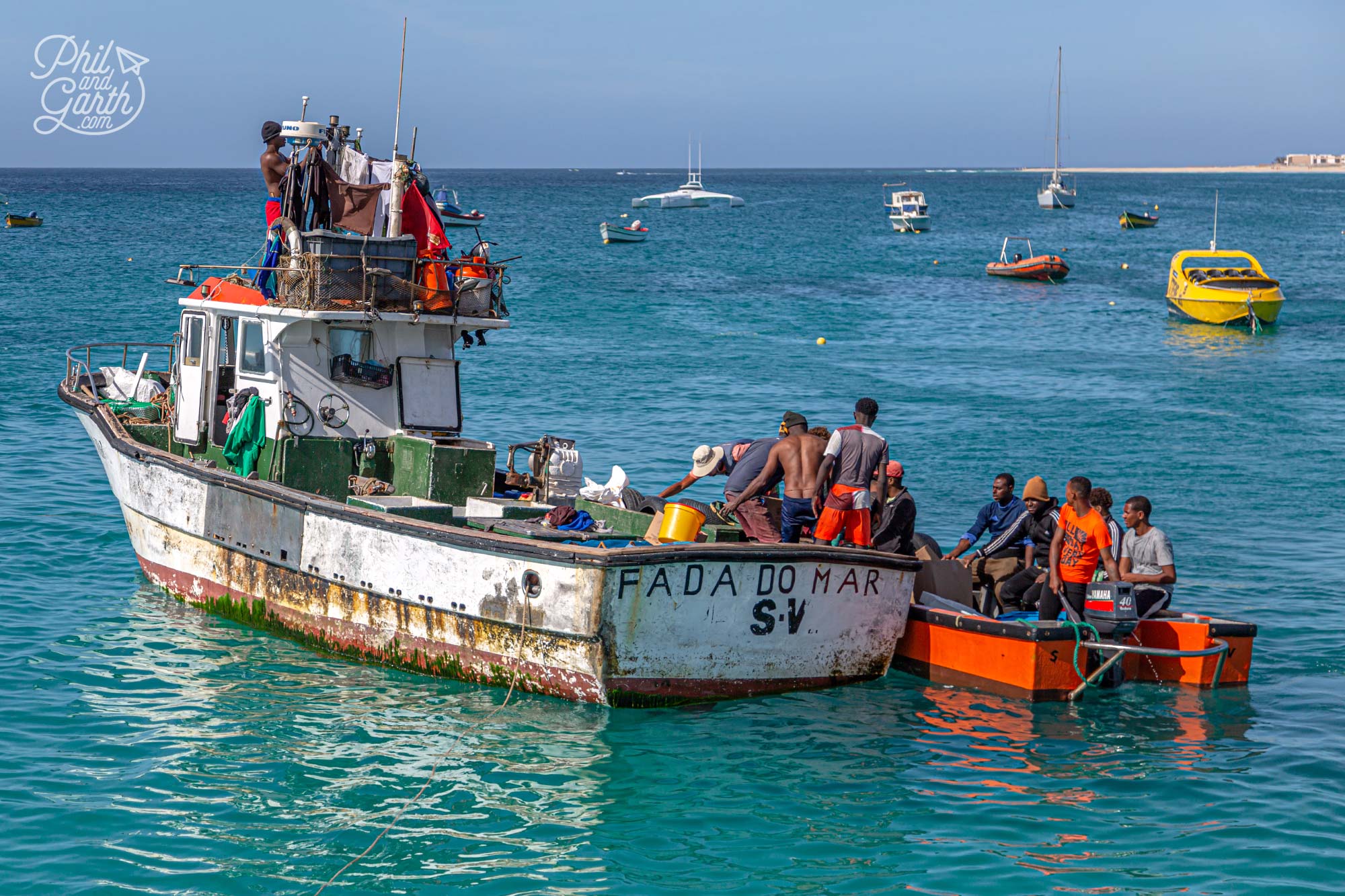
Fishermen landing their catch of the day at the pier
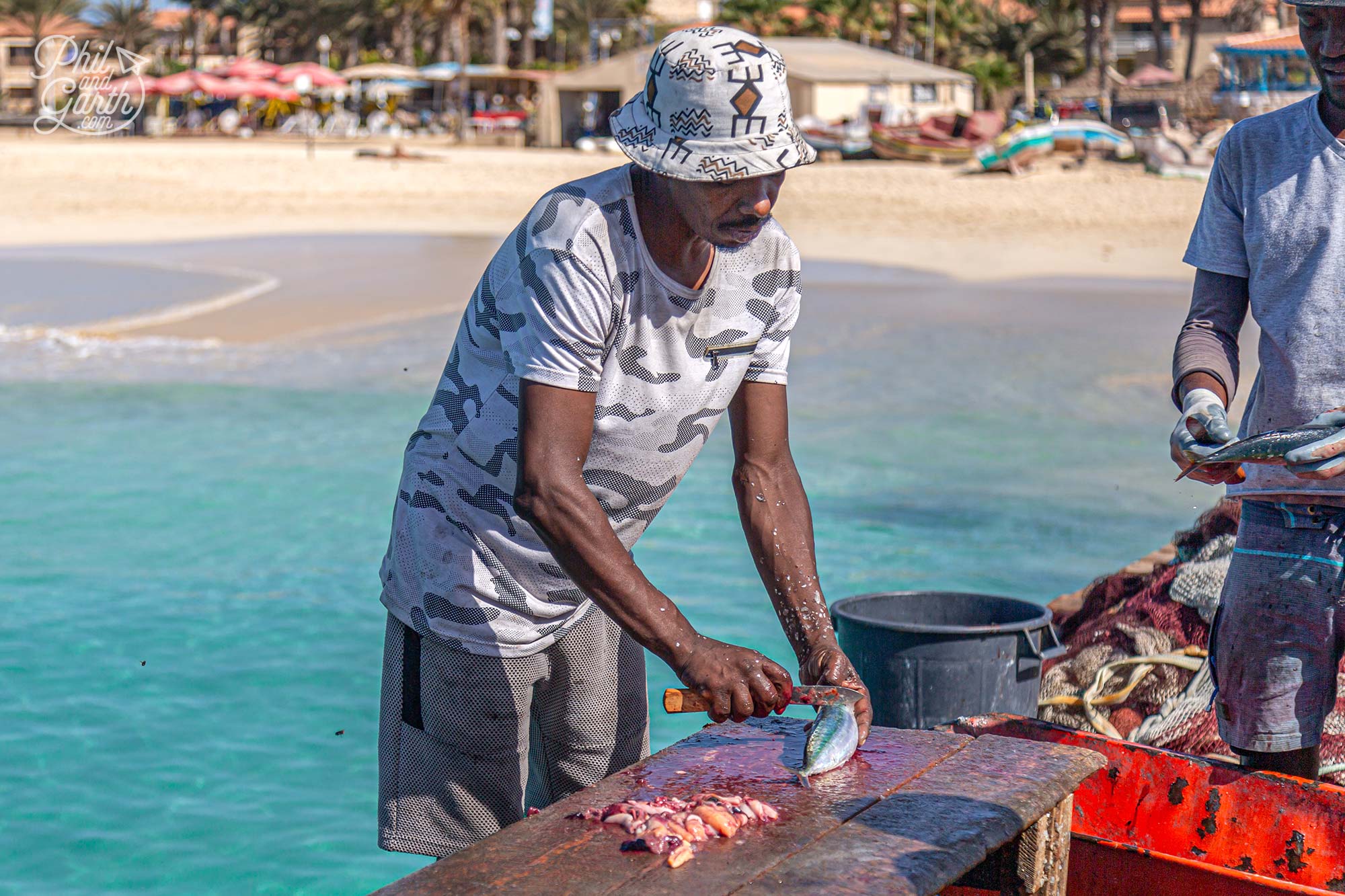
Gutting the fish takes place on the pier
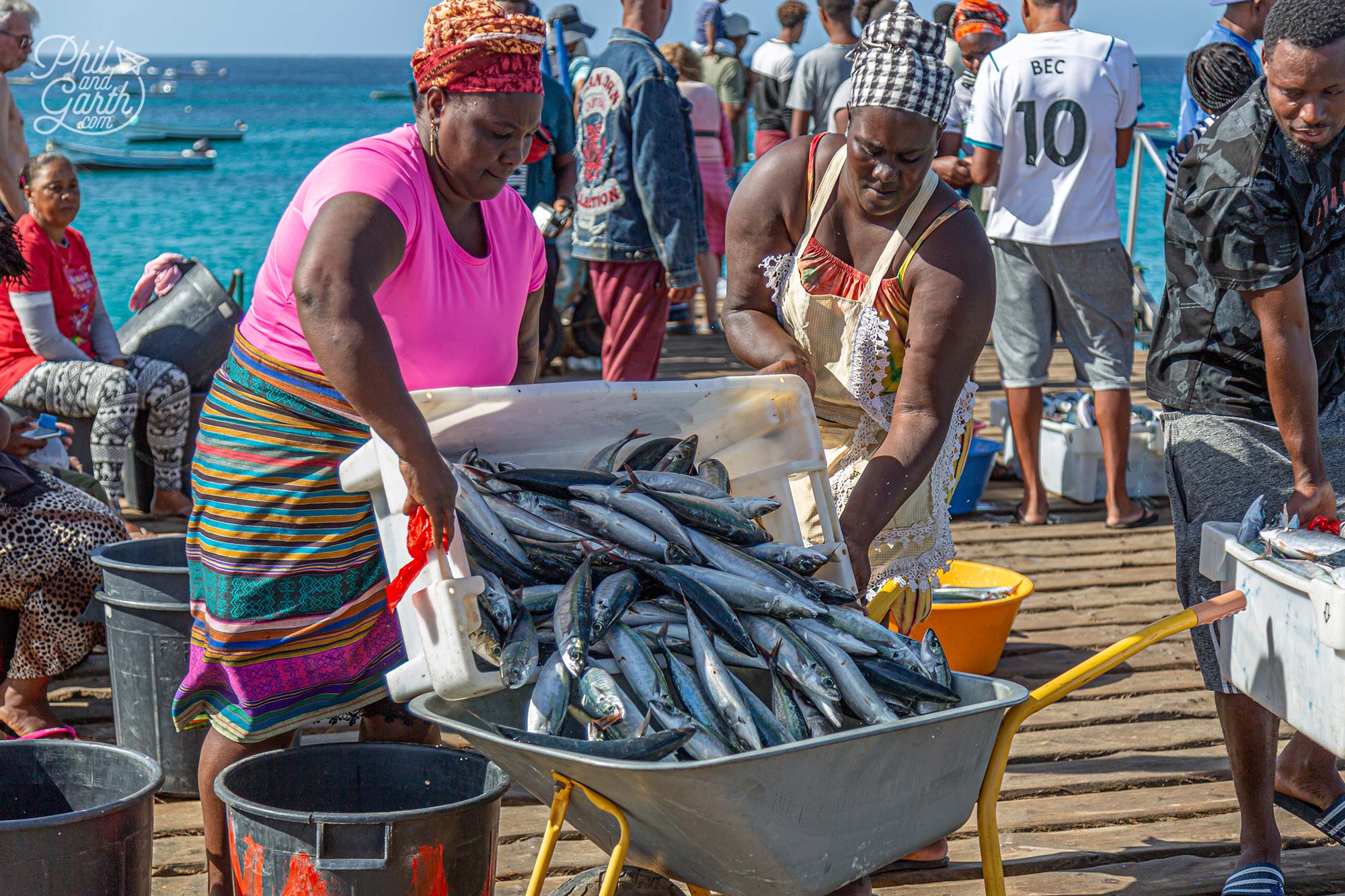
Hard working ladies transfer fresh fish to a wheelbarrow
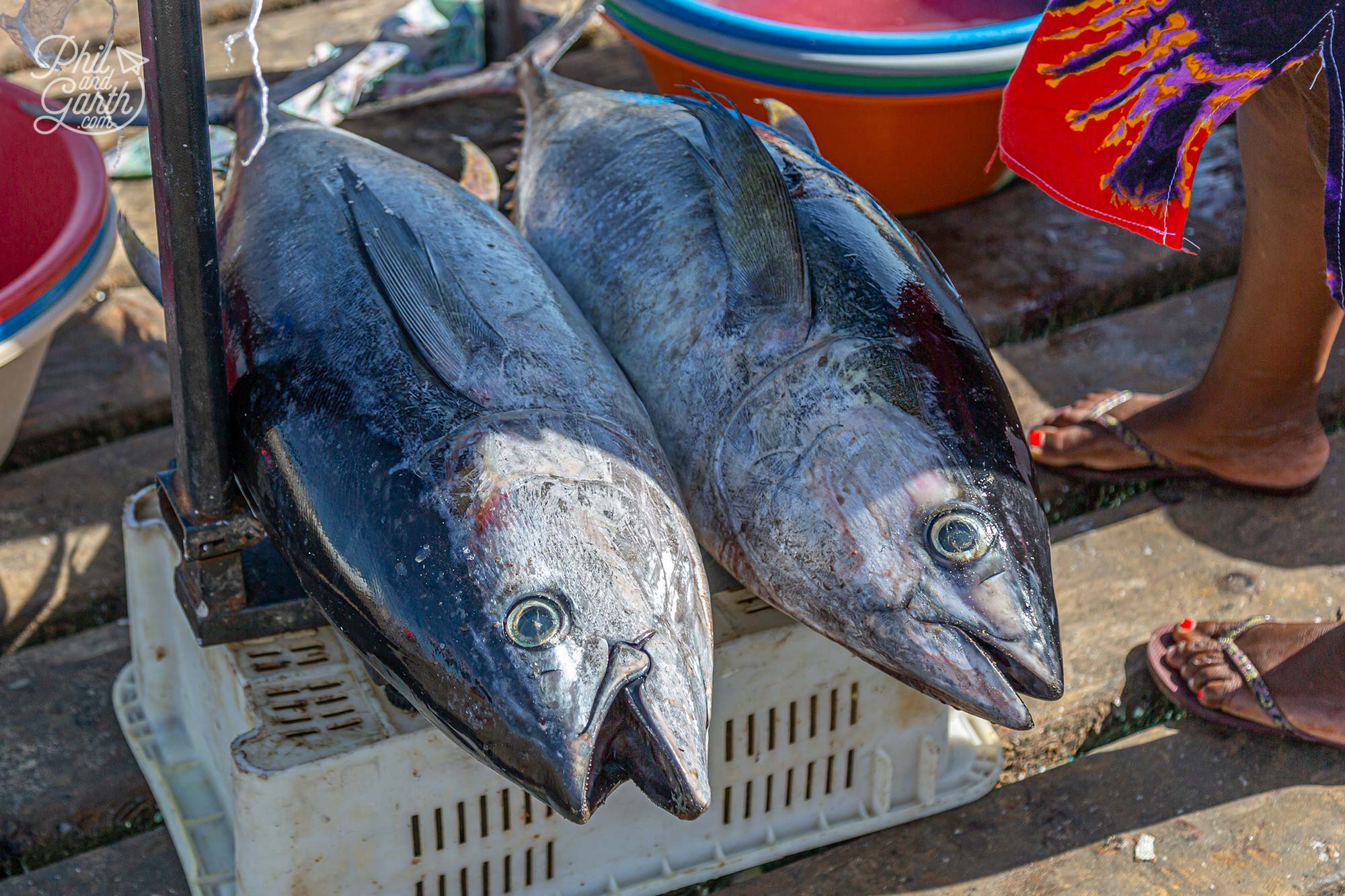
Yellowfin tuna
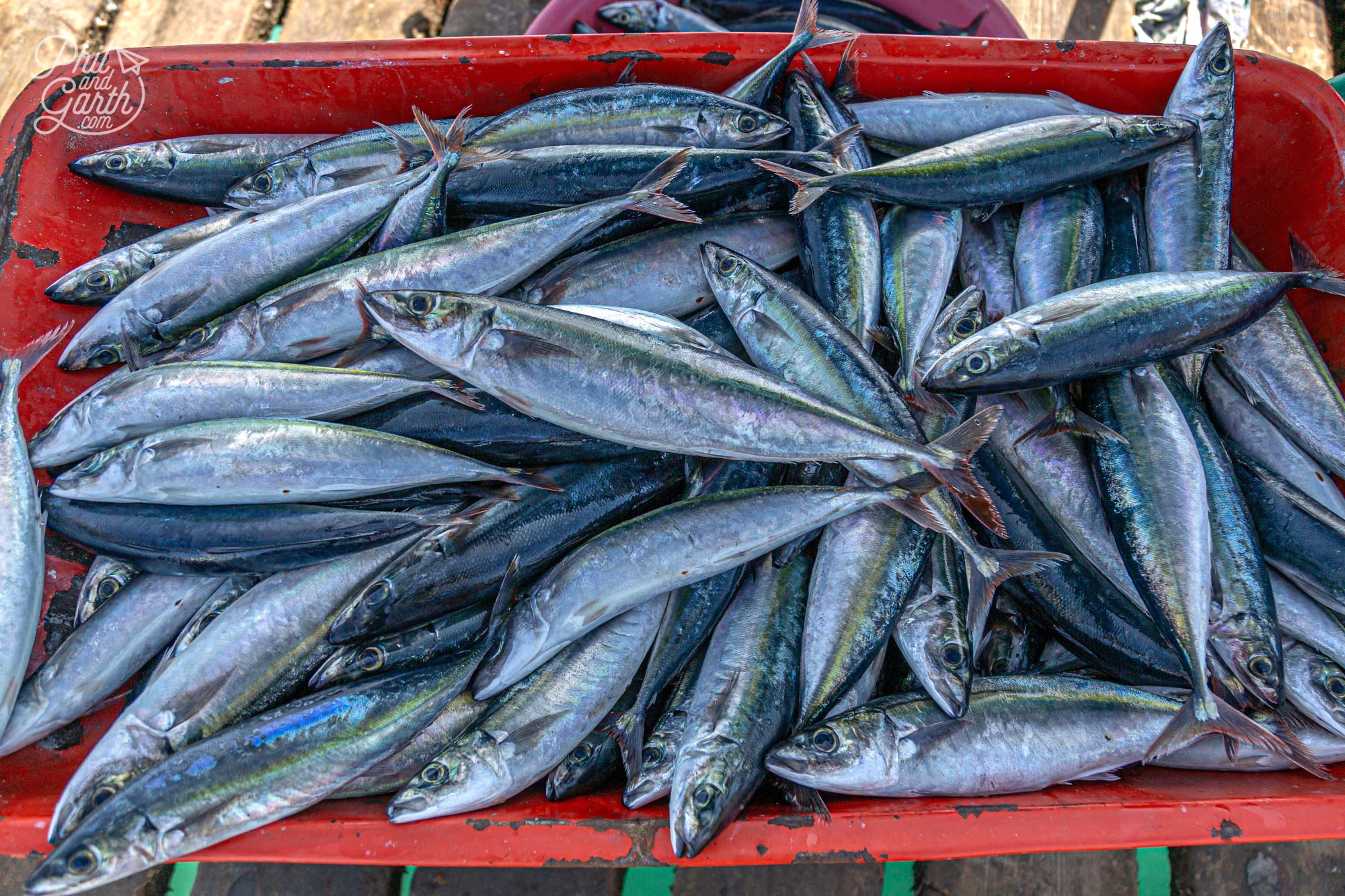
So many wheelbarrows of fresh fish
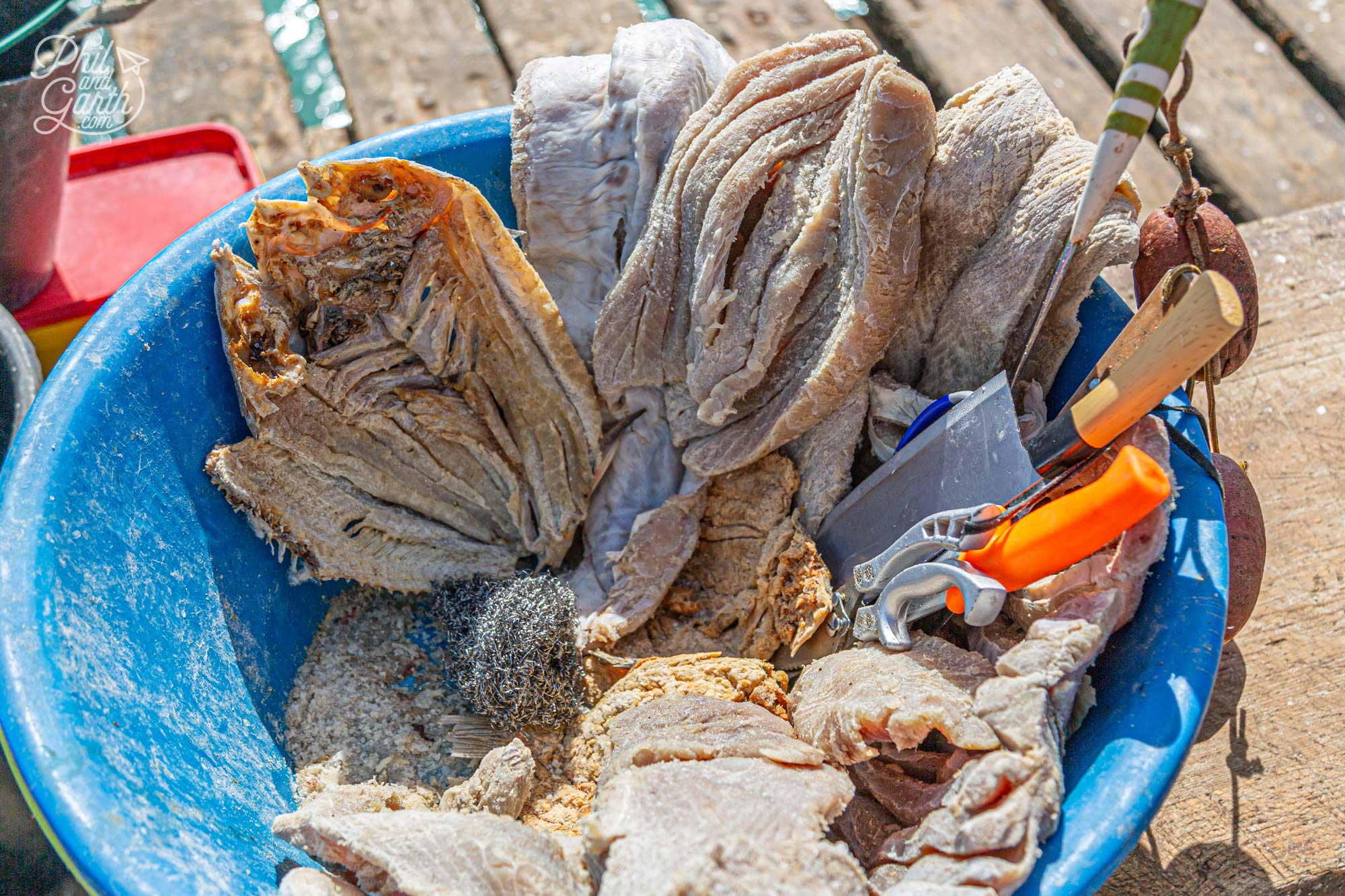
Salt fish for sale
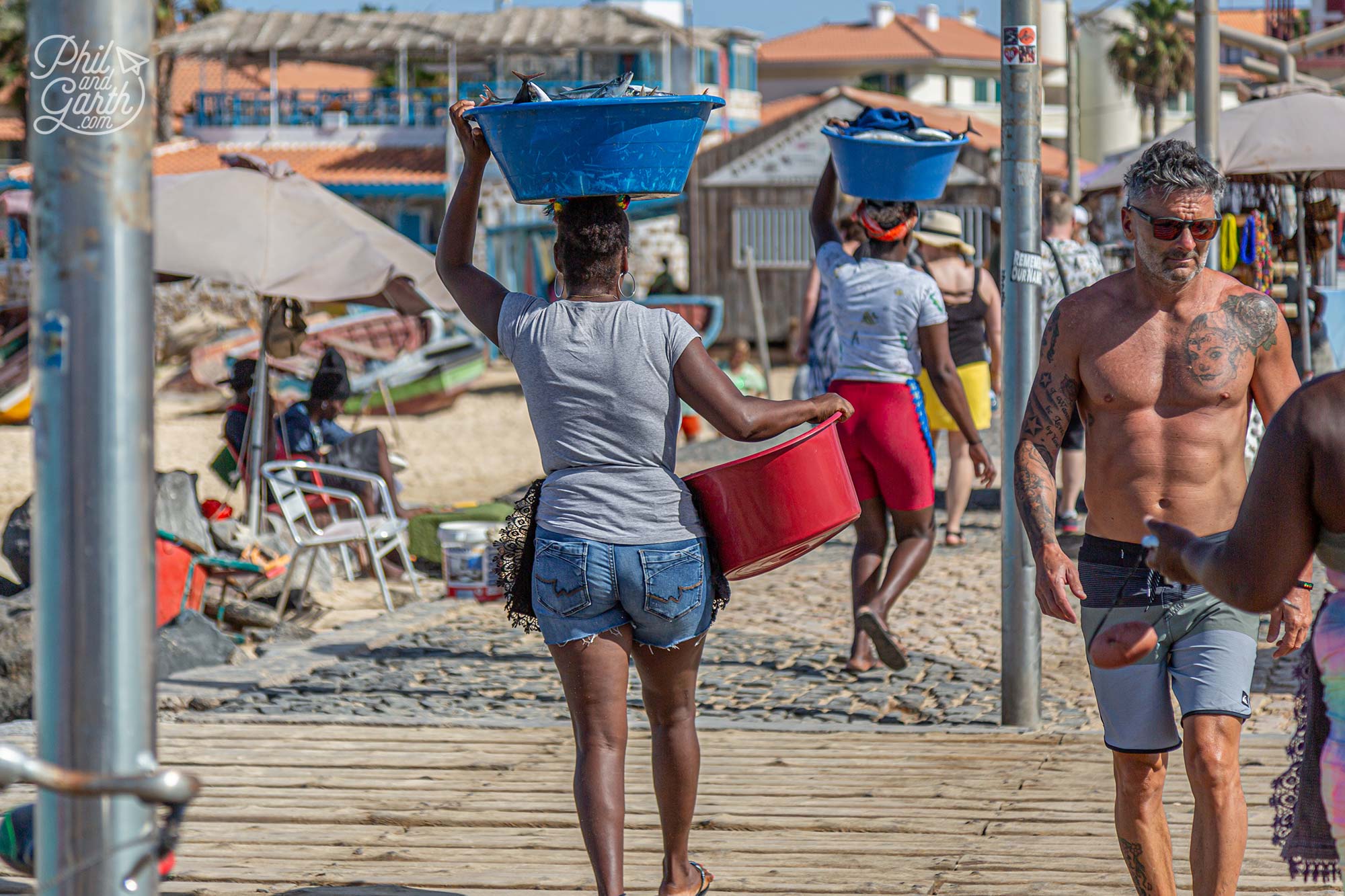
Ladies take away their buckets of fish
Santa Maria has the best beach on Sal. The beach is pristine, clean and stunning. Locals come here in the afternoons after work to chill and relax on the beach.
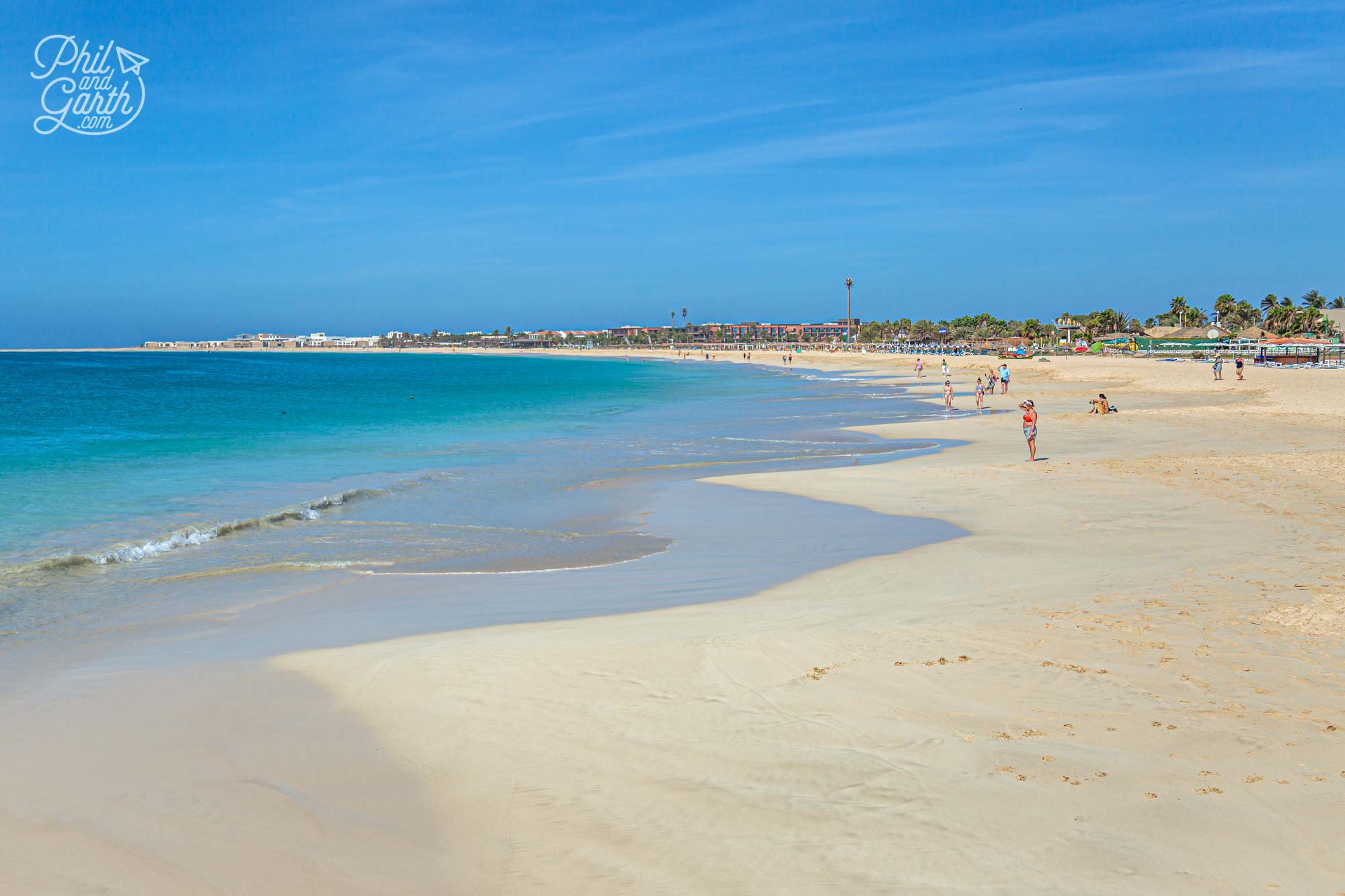
The immaculate Santa Maria beach
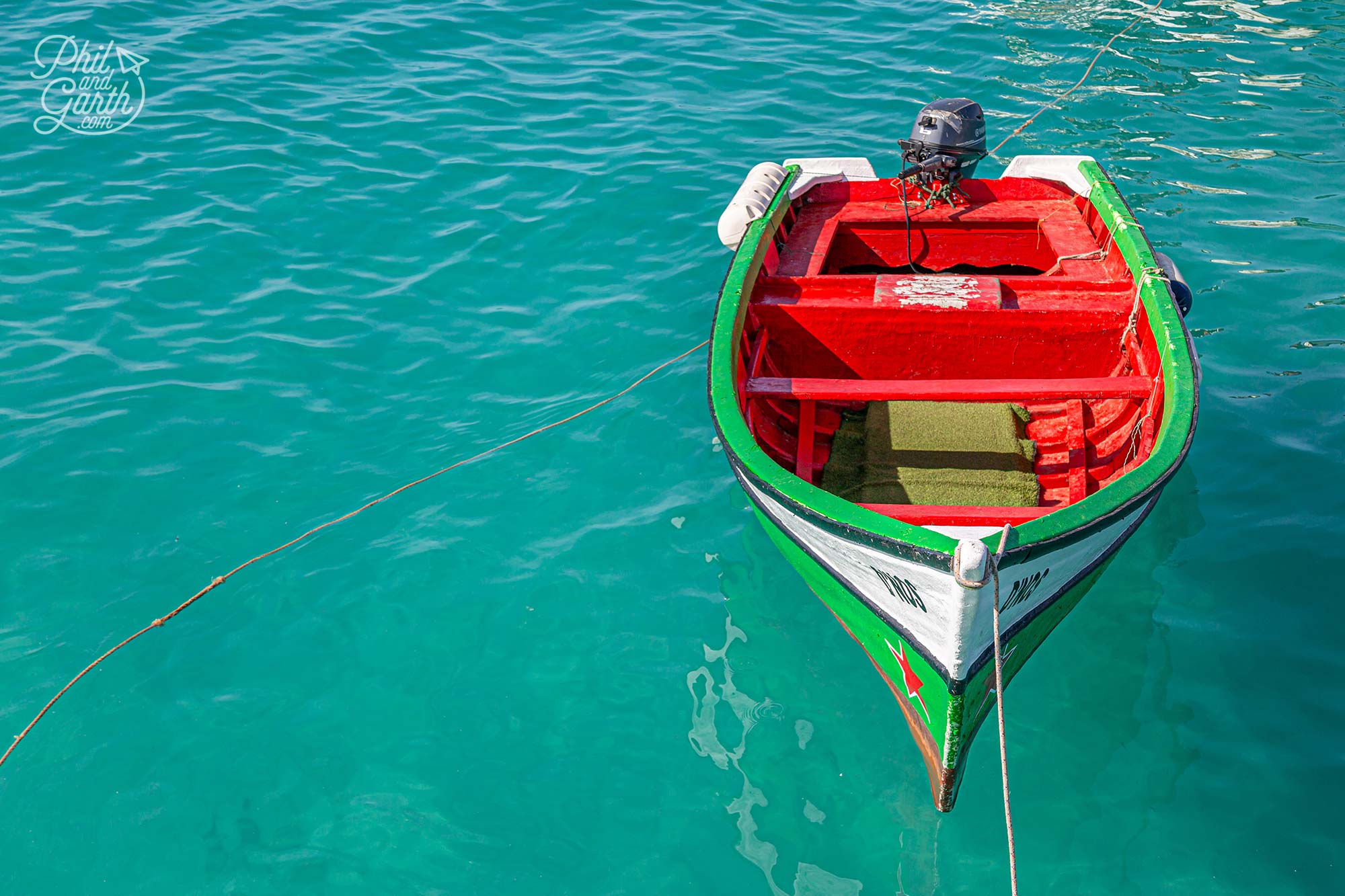
Just look at that turquoise water
In the town, you’ll find restaurants, bars and shops selling local crafts. You might come across some pushy street hawkers who are not Cape Verdeans instead coming from mainland Africa usually Senegal. We didn’t get hassled which was nice, maybe because we were with our guide, Kendall. As you leave check out all the colourfully painted homes.
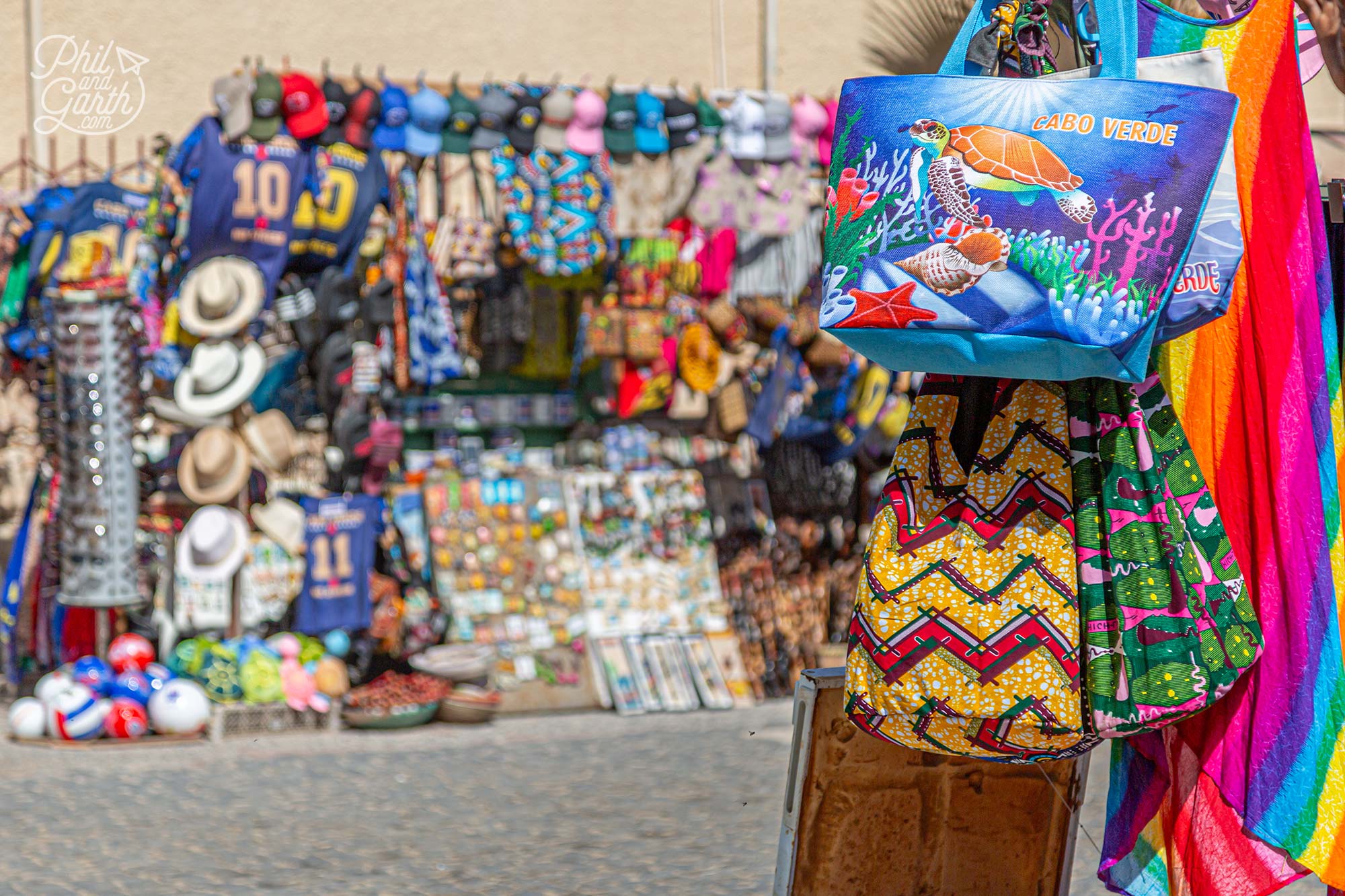
Santa Maria tourist stalls
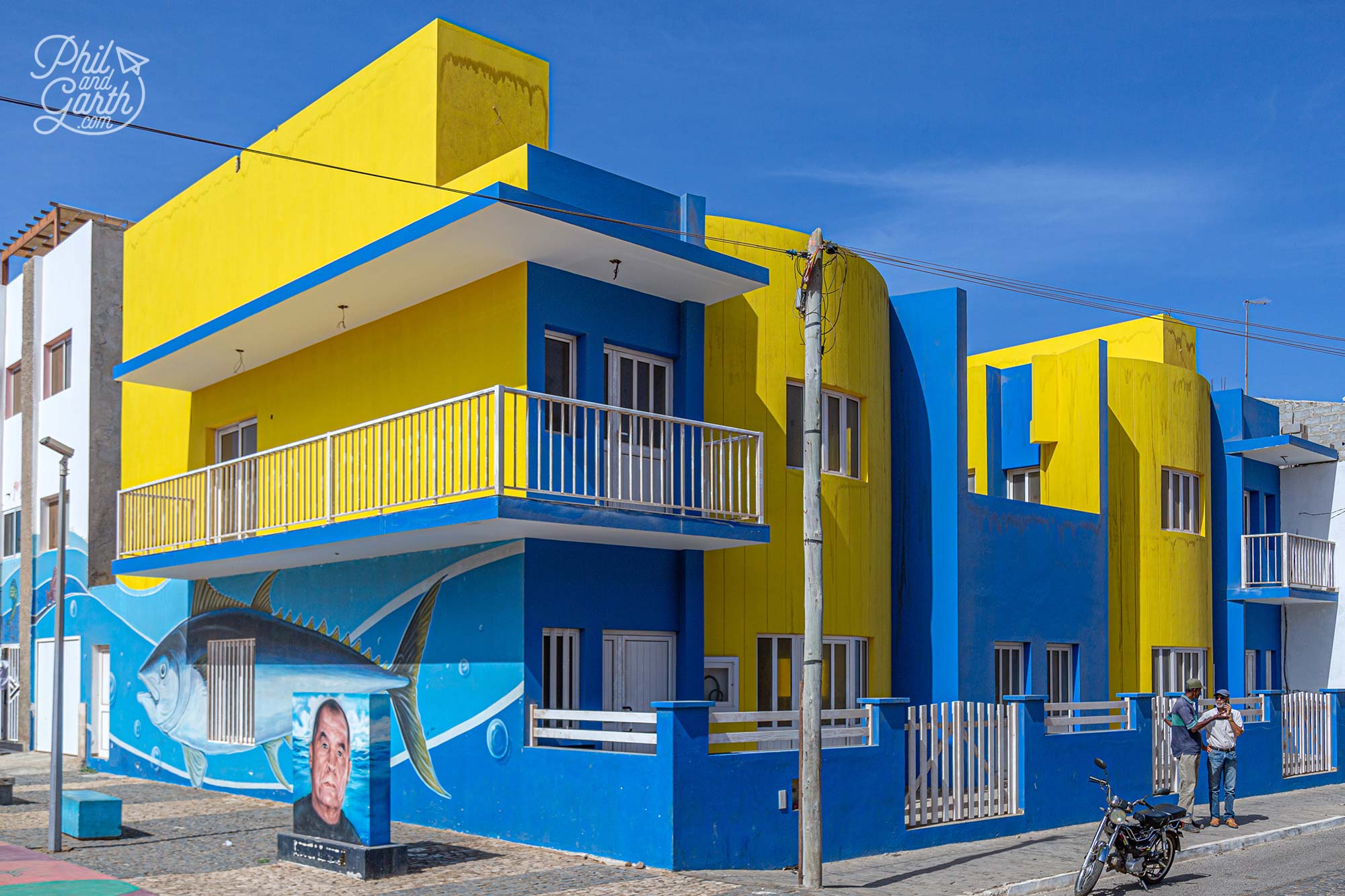
Look at this for a colour combination! love it
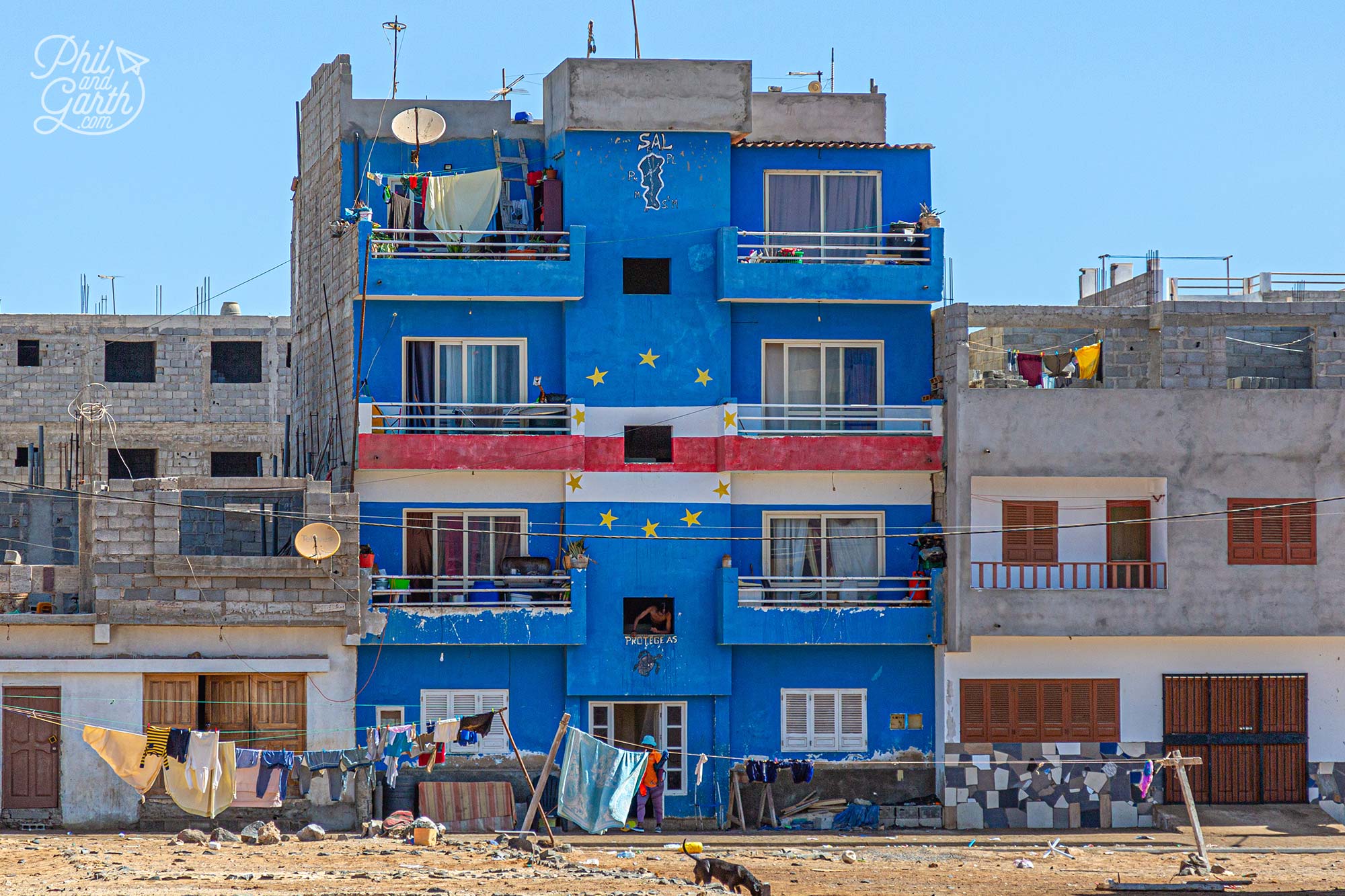
An apartment block with a mural of the Cape Verde flag
2. Salinas de Santa Maria – Salt Flats
Just outside Santa Maria, you’ll find a large expanse of salt flats. You don’t want to drive a hire car here, as the road is rough and just a rocky dirt track, good job we were in Kendall’s 4×4 pickup truck.
The salty water in the divided salt ponds comes up from the ground because it’s below sea level. The sun evaporates the water and leaves the salt to crystallise. When the salt is ready it’s raked up and taken to the neighbouring Santiago island to be cleaned and distributed throughout Cape Verde. The island is called Sal after it used to export its ‘white gold’ salt in huge numbers to Brazil up until 1887 when their government banned salt imports. Sal’s main income is now from tourism.
These salt ponds reminded us of visiting the Janubio salt flats in Lanzarote without all the tourists.
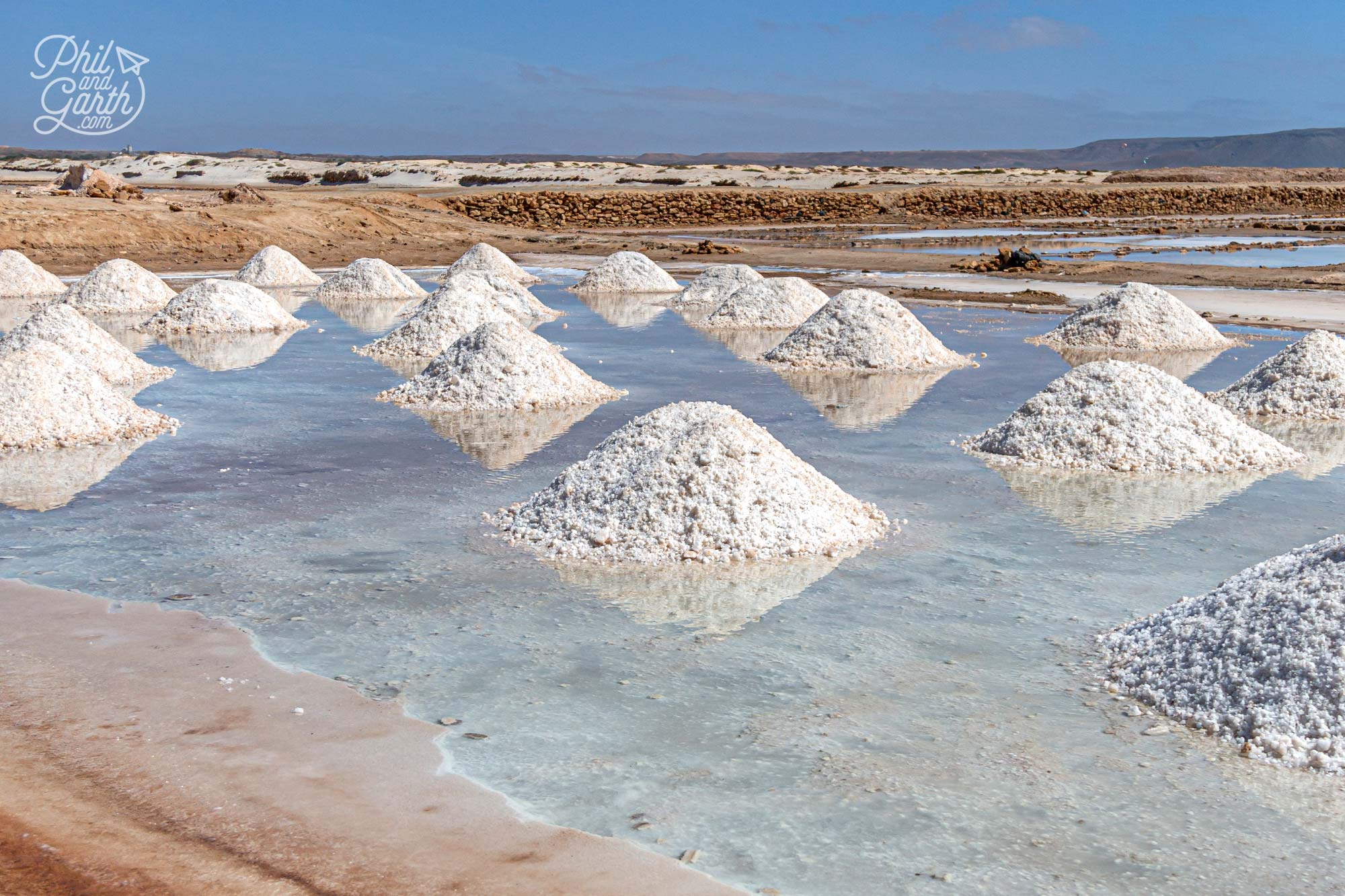
Salinas de Santa Maria – a large expanse of salt flats
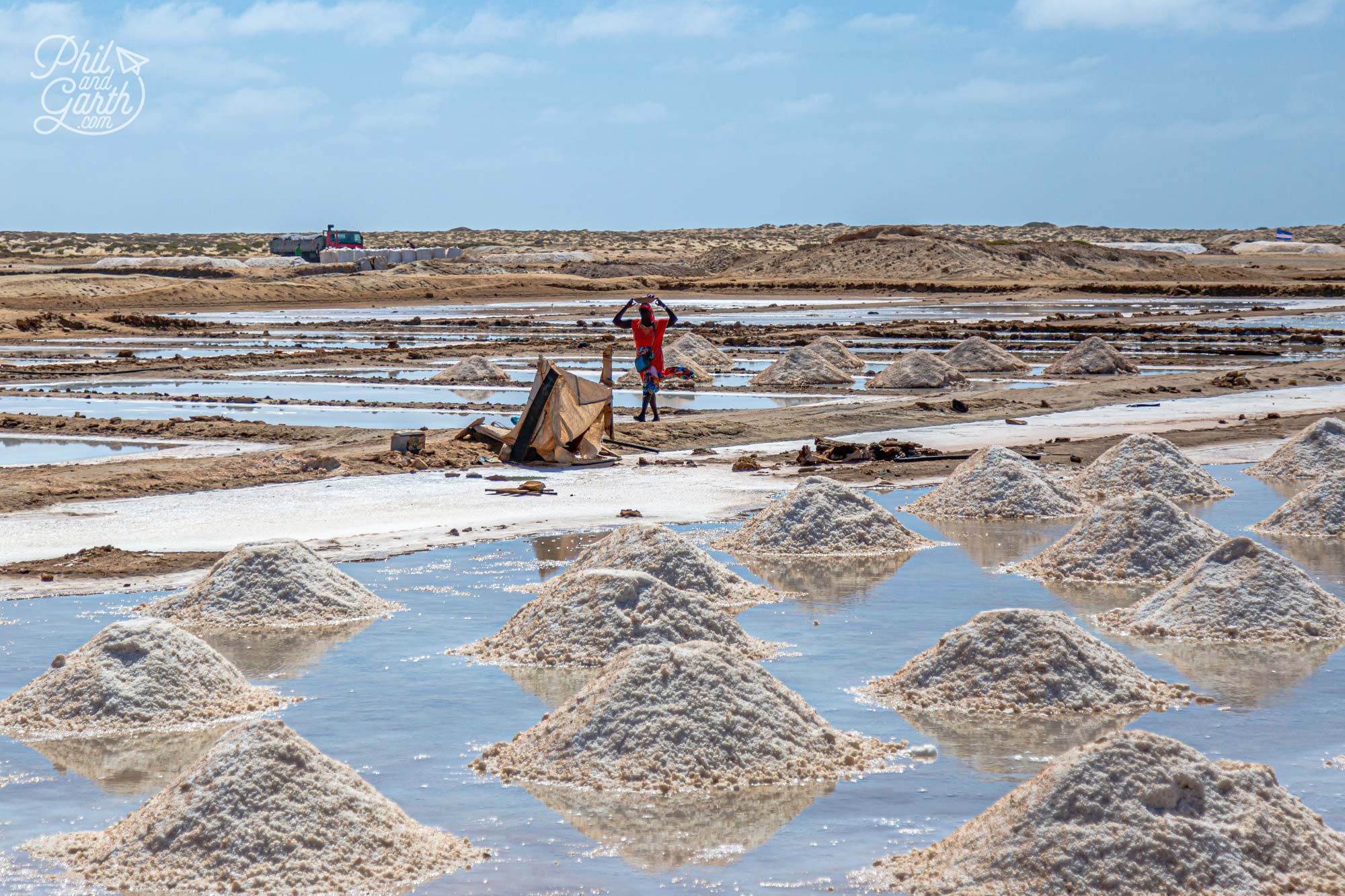
A lady walking through the Santa Maria Salt Flats
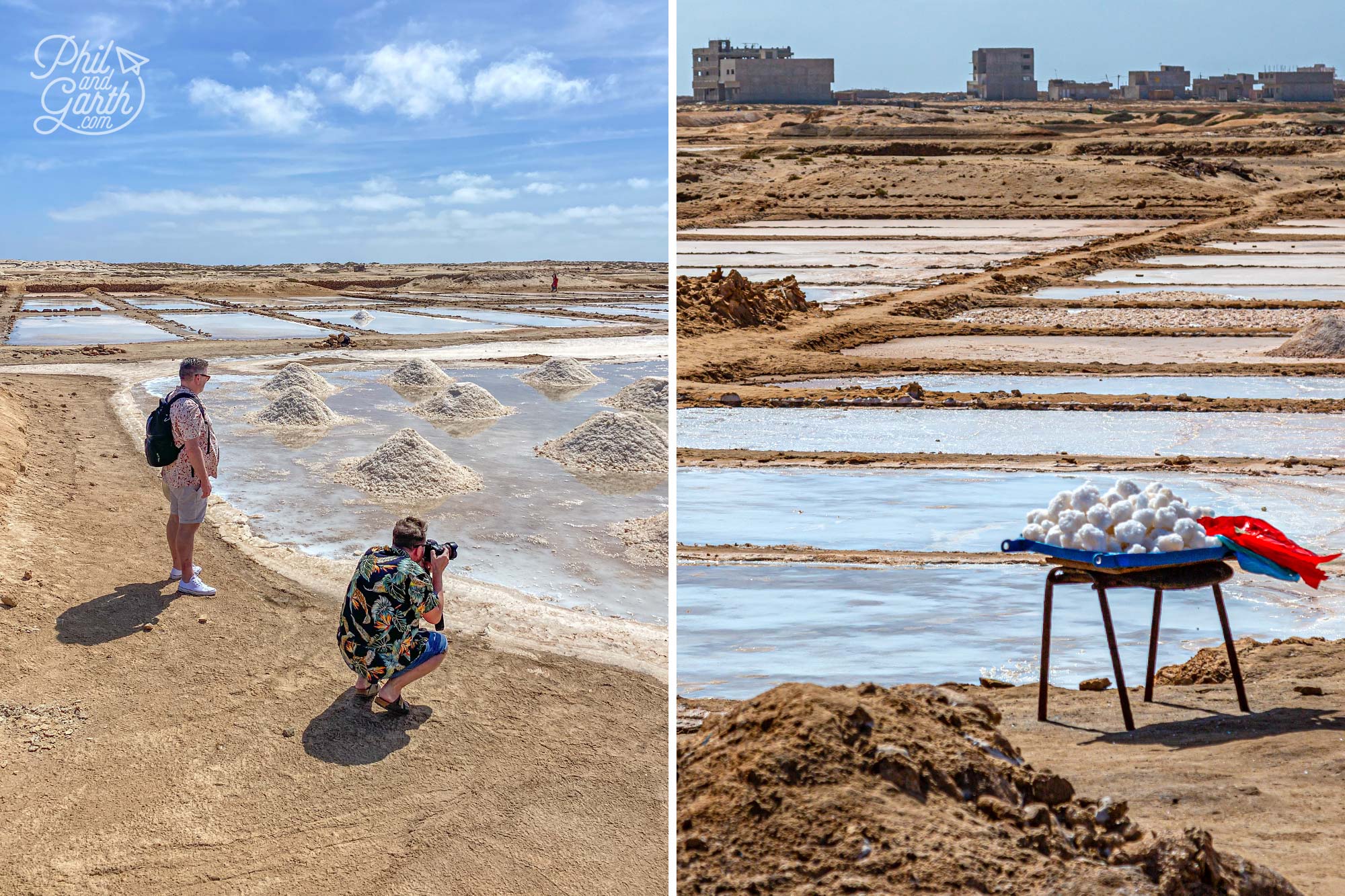
Garth taking photos
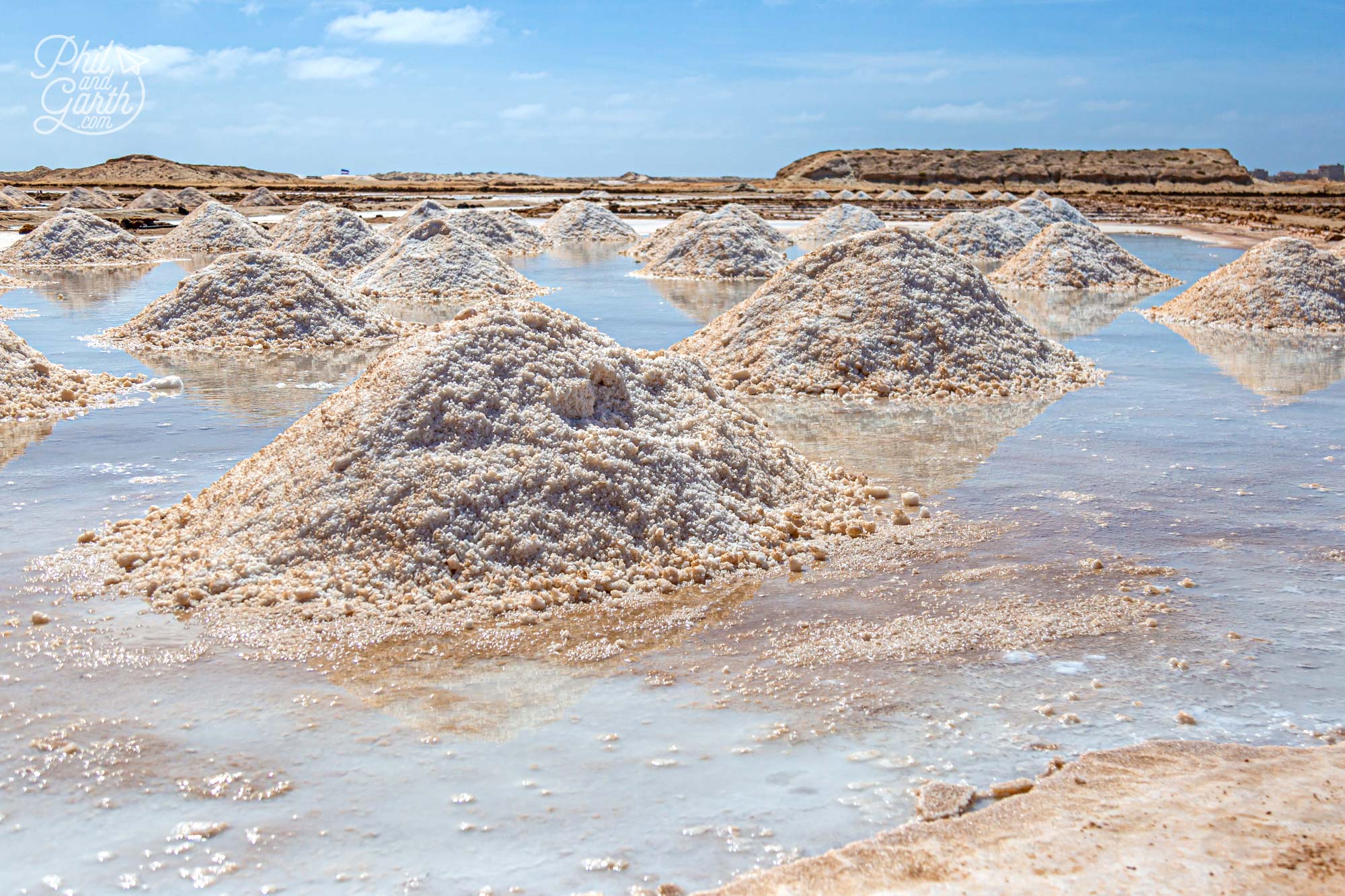
The island gets its name from the Portuguese word for salt
3. Kite Beach
Our third stop was Kite Beach – a paradise for adventure seekers. Kite Beach is renowned for its consistent trade winds and expansive sandy shore, making it a prime destination for kiteboarding enthusiasts and beginners keen to try out the Atlantic Ocean.
It was cool to watch beginners learning to kiteboard on the sand. It looks like you have to be super strong to control the kite and have absolutely no fear in the sea. Watching the professionals in the ocean being pulled along by their kites was amazing because of the speed they would get to in no time at all and the spectacular aerial stunts they performed.

Kite Beach – a paradise for adventure seekers
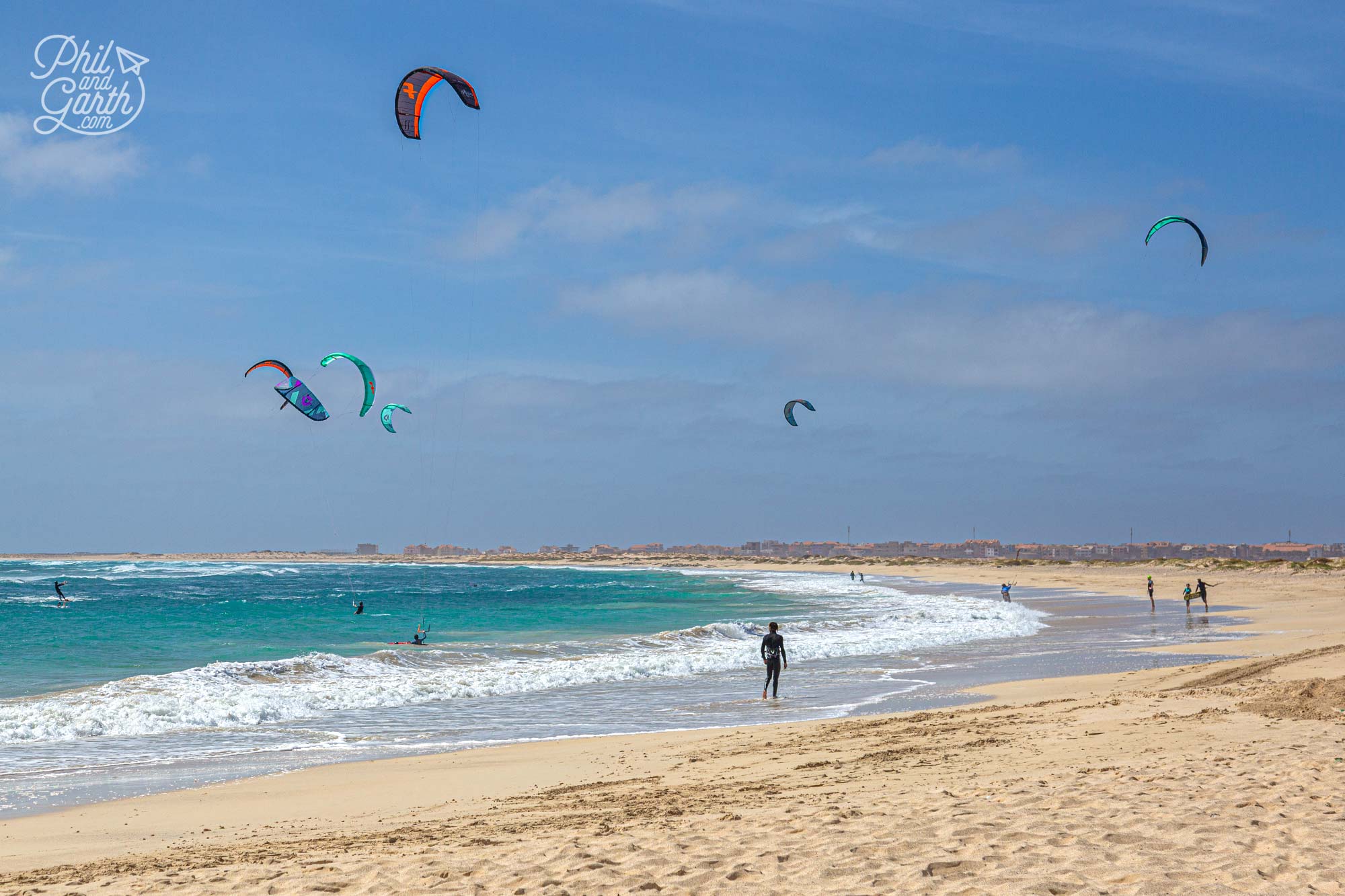
Kite Beach, Sal
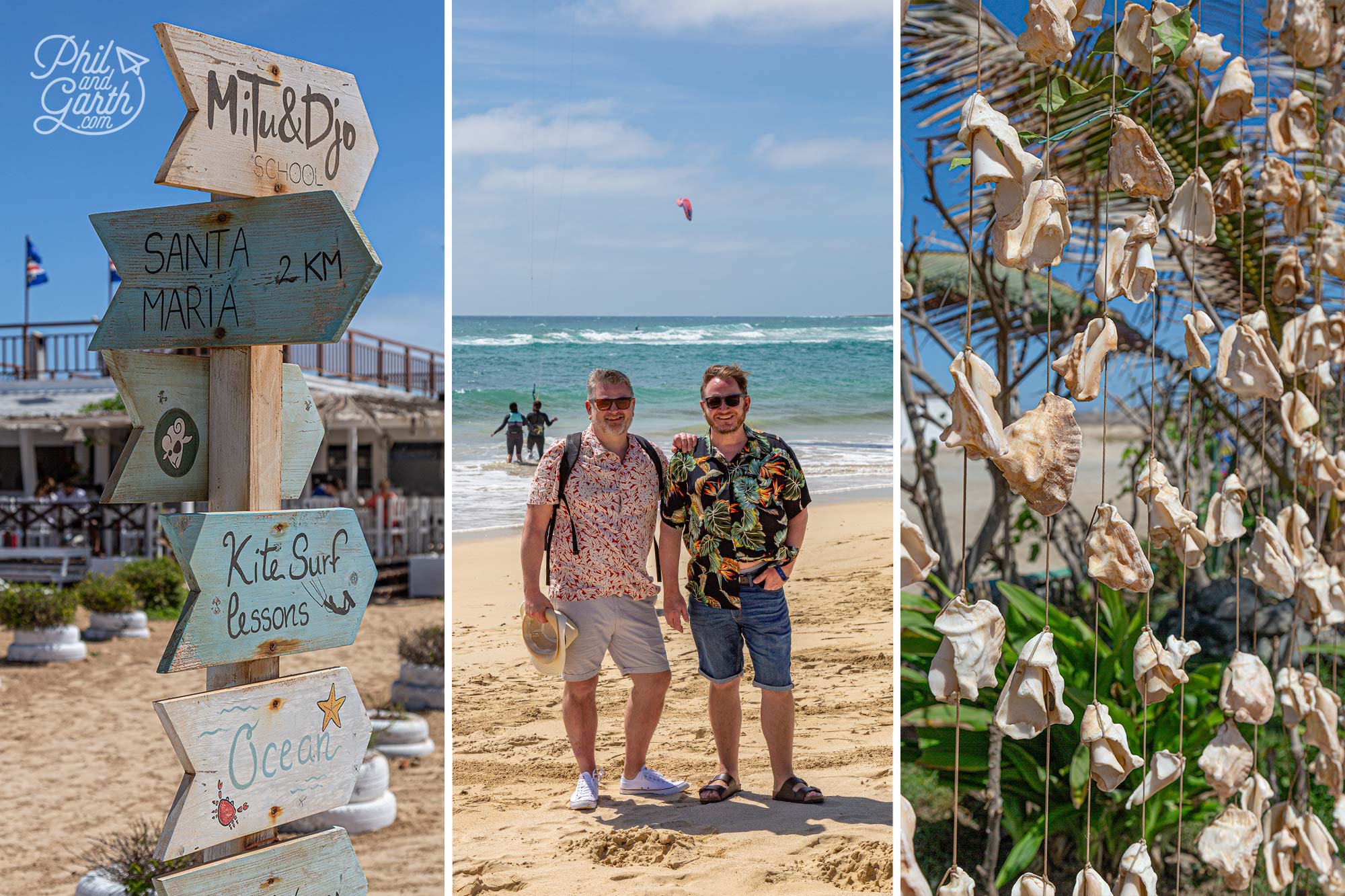
Phil and Garth on Kite Beach
4. Baia da Murdeira – Snorkelling Spot
Our 4th stop was at a small beach – Baia da Murdeira, a popular place with locals. It has a really shallow lagoon perfectly safe for kids and a small rocky beach which has great snorkelling opportunities. Kendall brought us some snorkel gear but we decided to skip it to go for other experiences … (read on).
O Ninho Dos Pirates is a fish restaurant here and themed like a pirate ship which I bet kids go mad for. We stopped for a couple of beers, well we are on holiday after all! They have issues with flies, but the waiter brought us some beer mats to cover our drinks.
Kendall showed us around the rocky volcanic shore and spotted a crab skin – it’s their shell that they shed when they get too big for it, we had no idea crabs do that! The sand here is also a mix of black lava and golden sand which gets blown over from the Sahara Desert.
Kendall also told us this location is great for viewing the sunset.
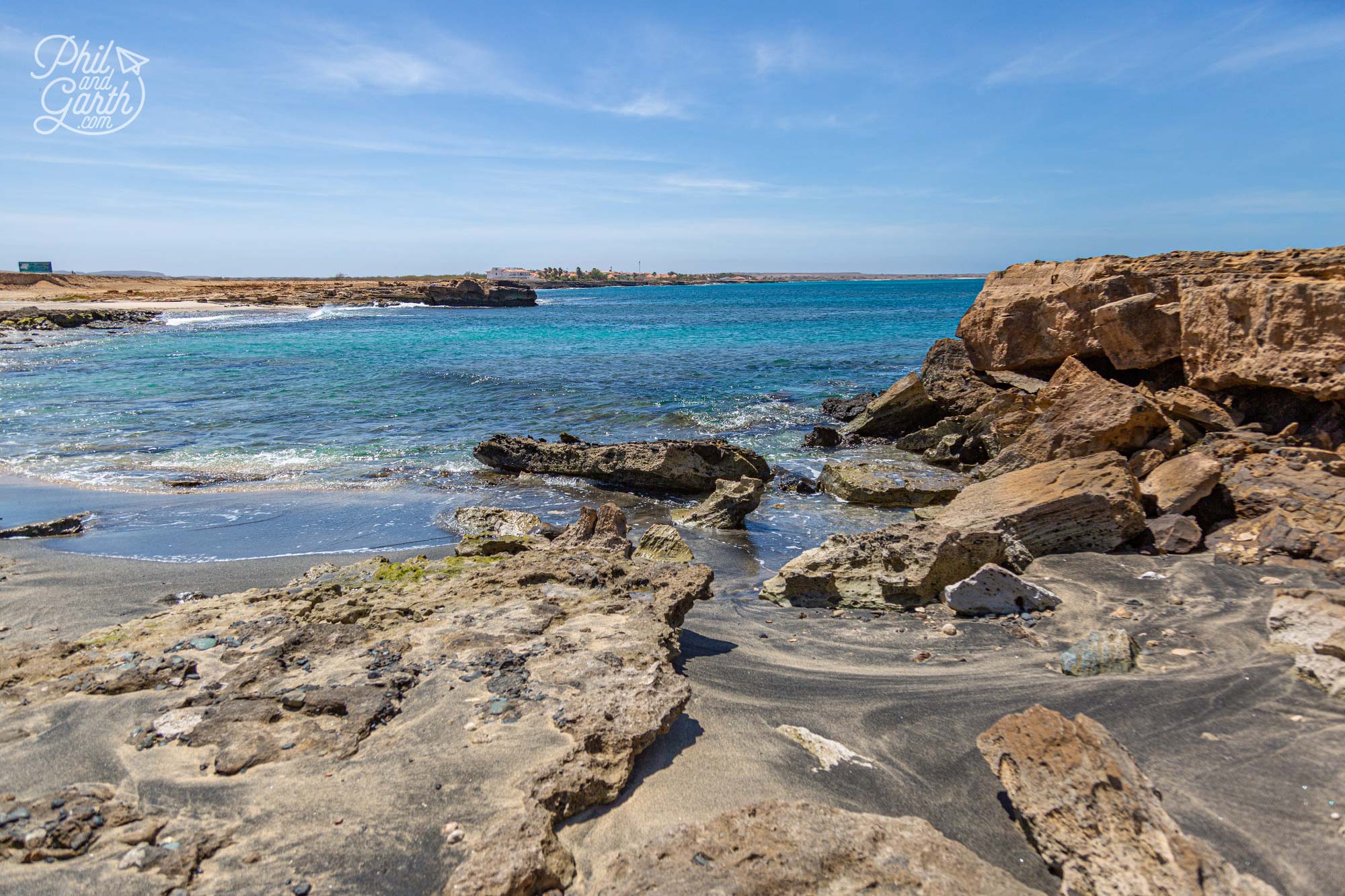
Murdeira Bay – an excellent place for snorkelling on Sal
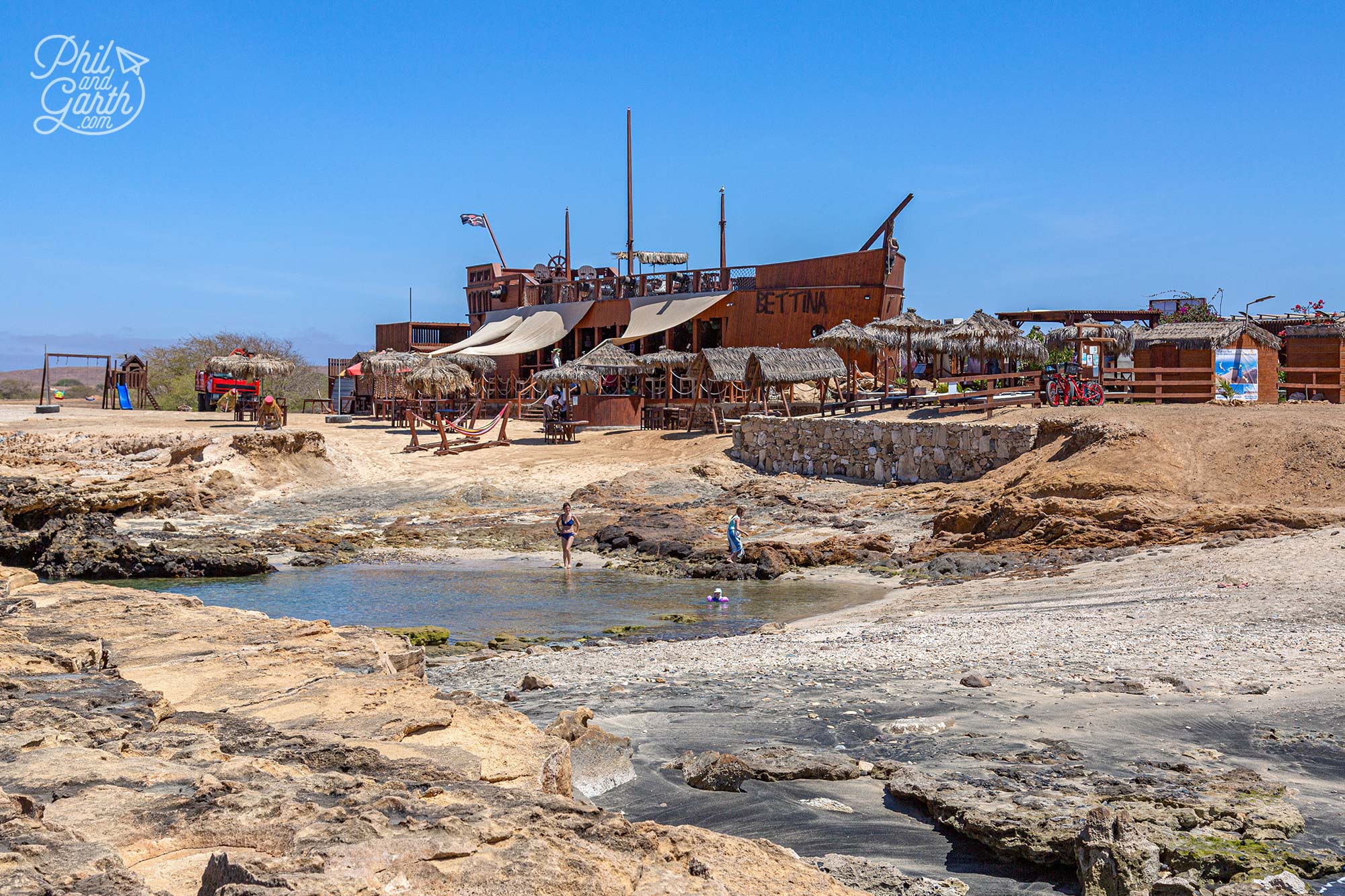
Perfect for kids – the shallow lagoon and pirate boat themed restaurant
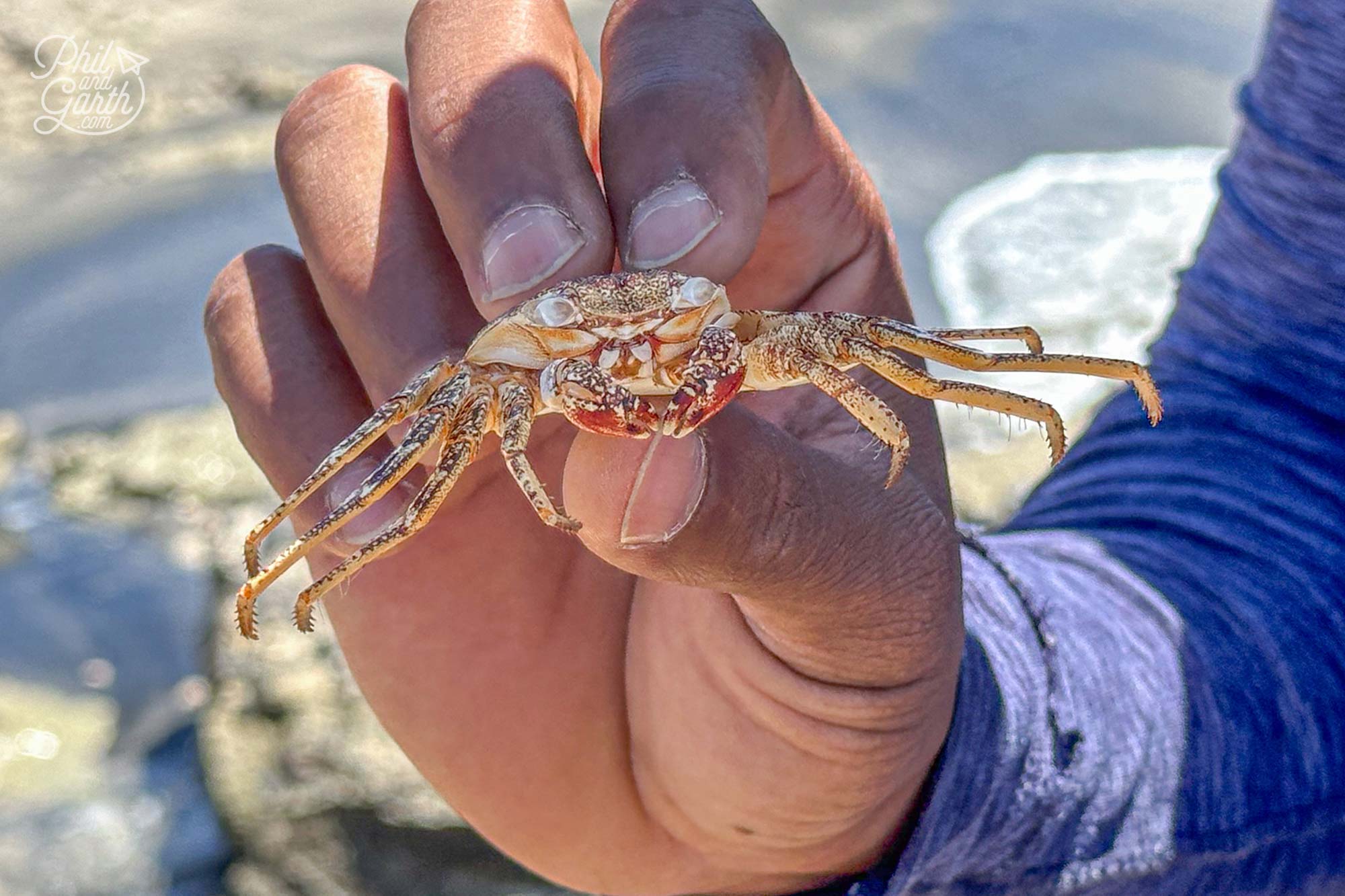
A discarded crab shell
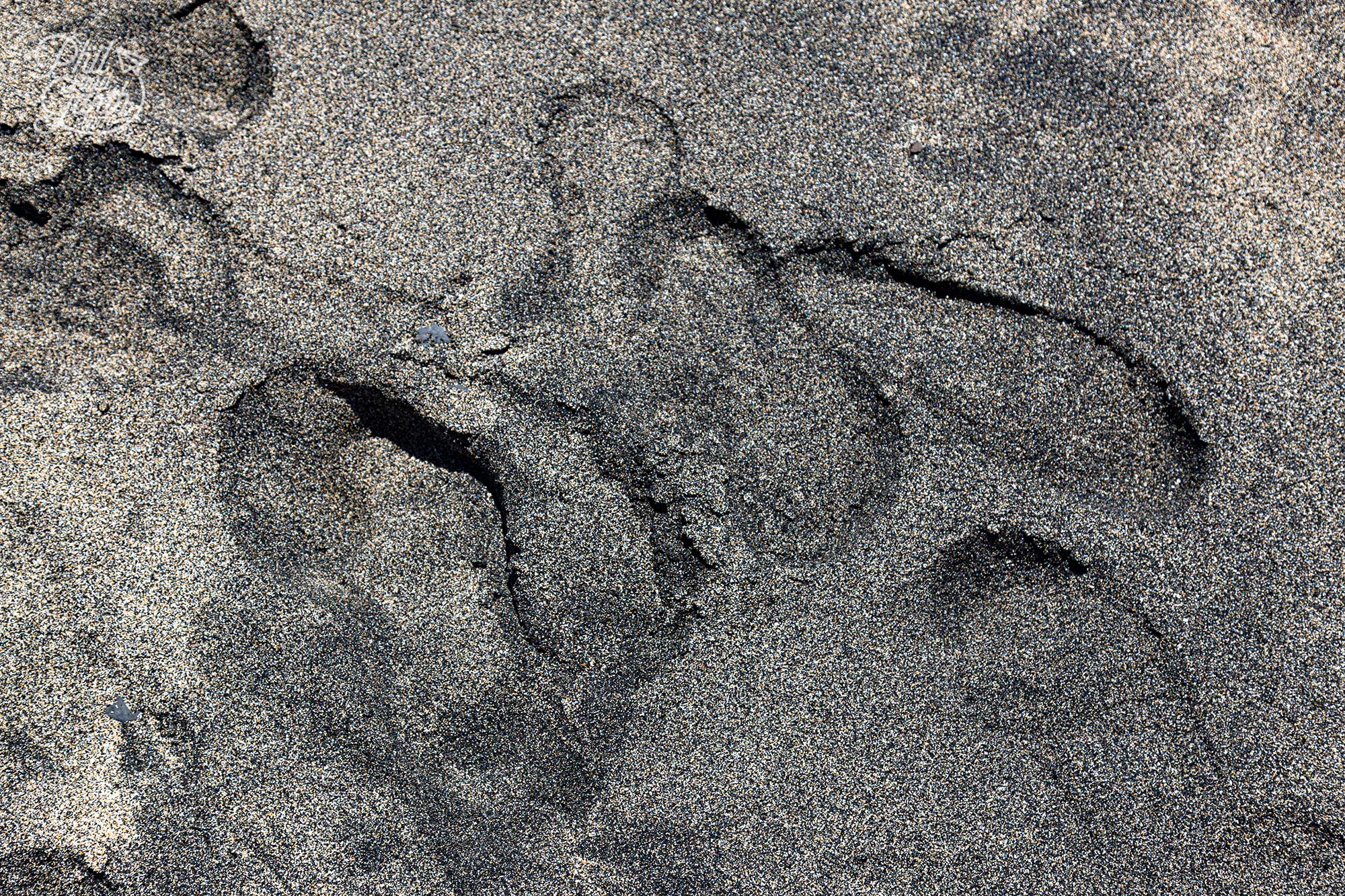
Volcanic black sand mixed with golden Sahara Desert sand
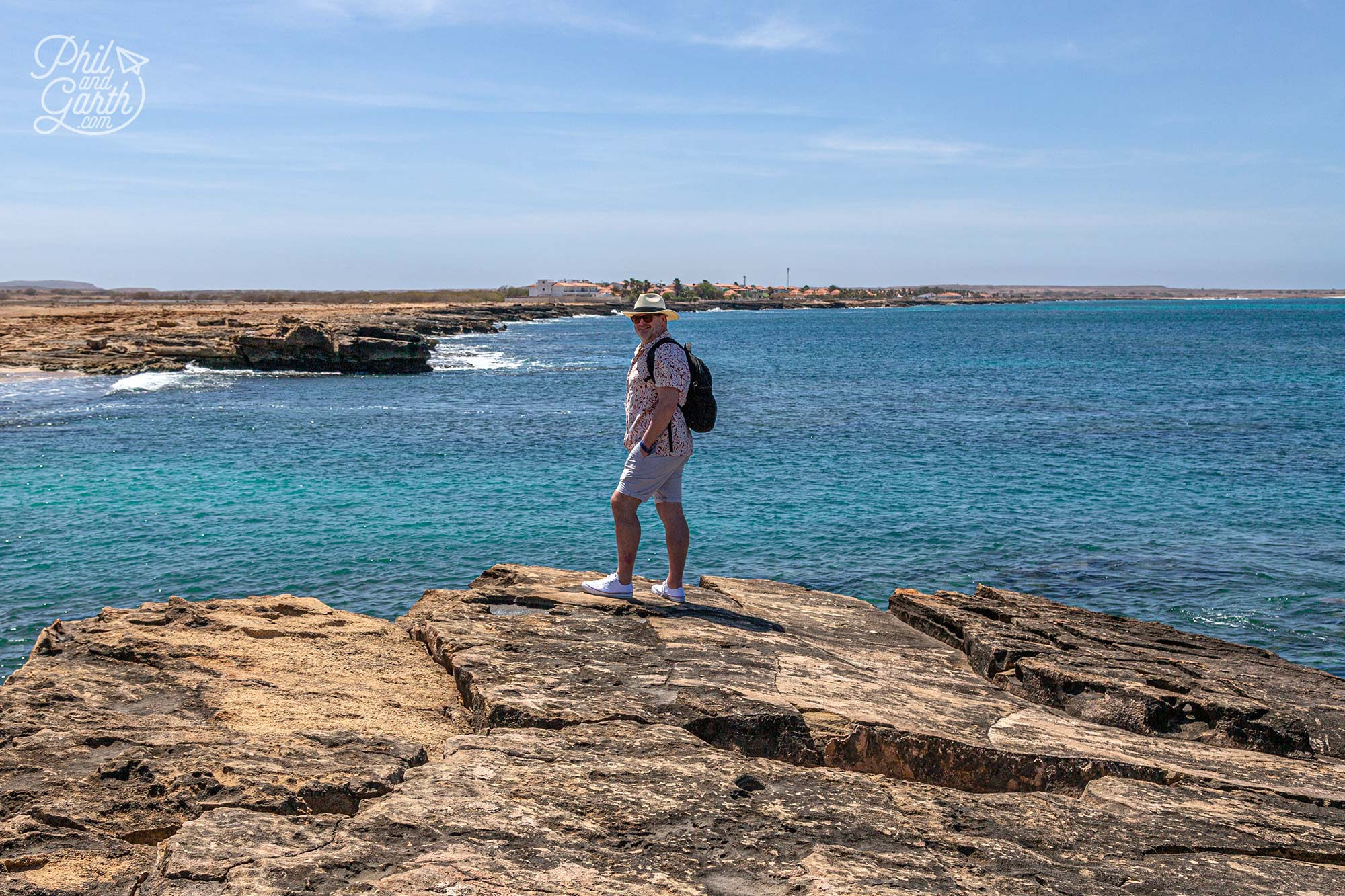
Phil checking out the views from the volcanic rock
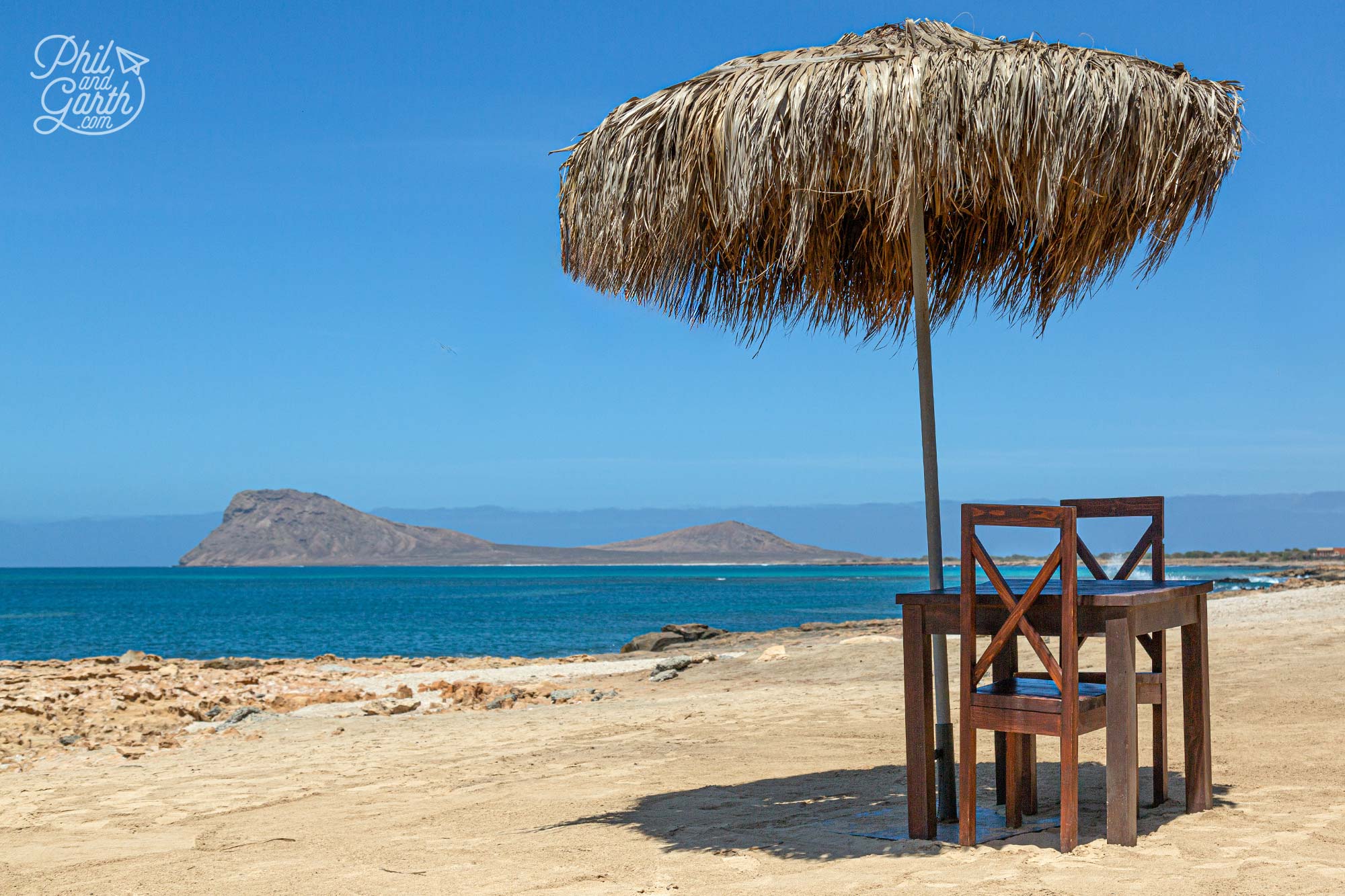
Murdeira Bay has a great view of Lion Mountain
5. Terra Boa – Mirage
Our 5th stop was Terra Boa. It’s a vast desert with an otherworldly sand landscape. It’s a famous spot on Sal to see a mirage or ‘Fata Morgana’. You’ll see water on the horizon, but there is none, it’s just an illusion. The endless stretch of sand makes it really hard to judge distances.
To get here you will drive through various shanty towns along the way. It’s sad to see and reminded us of all the townships we saw in South Africa, but the government here are building new homes for the poor, which is good. It’s quite a bumpy and dusty ride so if you are in the back of the truck you can’t wear a hat as it will blow off. Just make sure you keep applying sunscreen – we failed on this as the wind from the drive makes you feel cool.
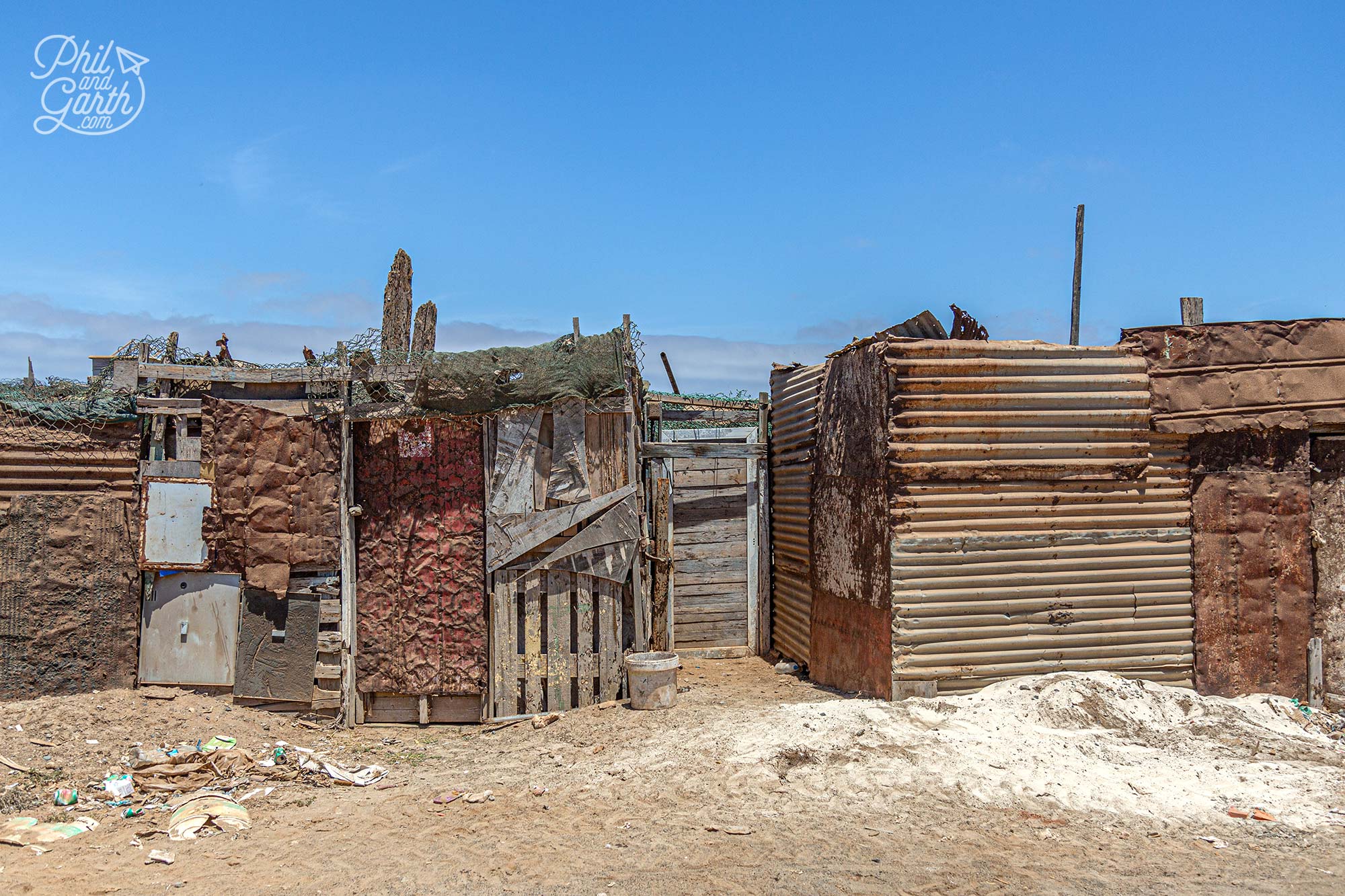
You will drive through a shanty town on the way to Terra Boa
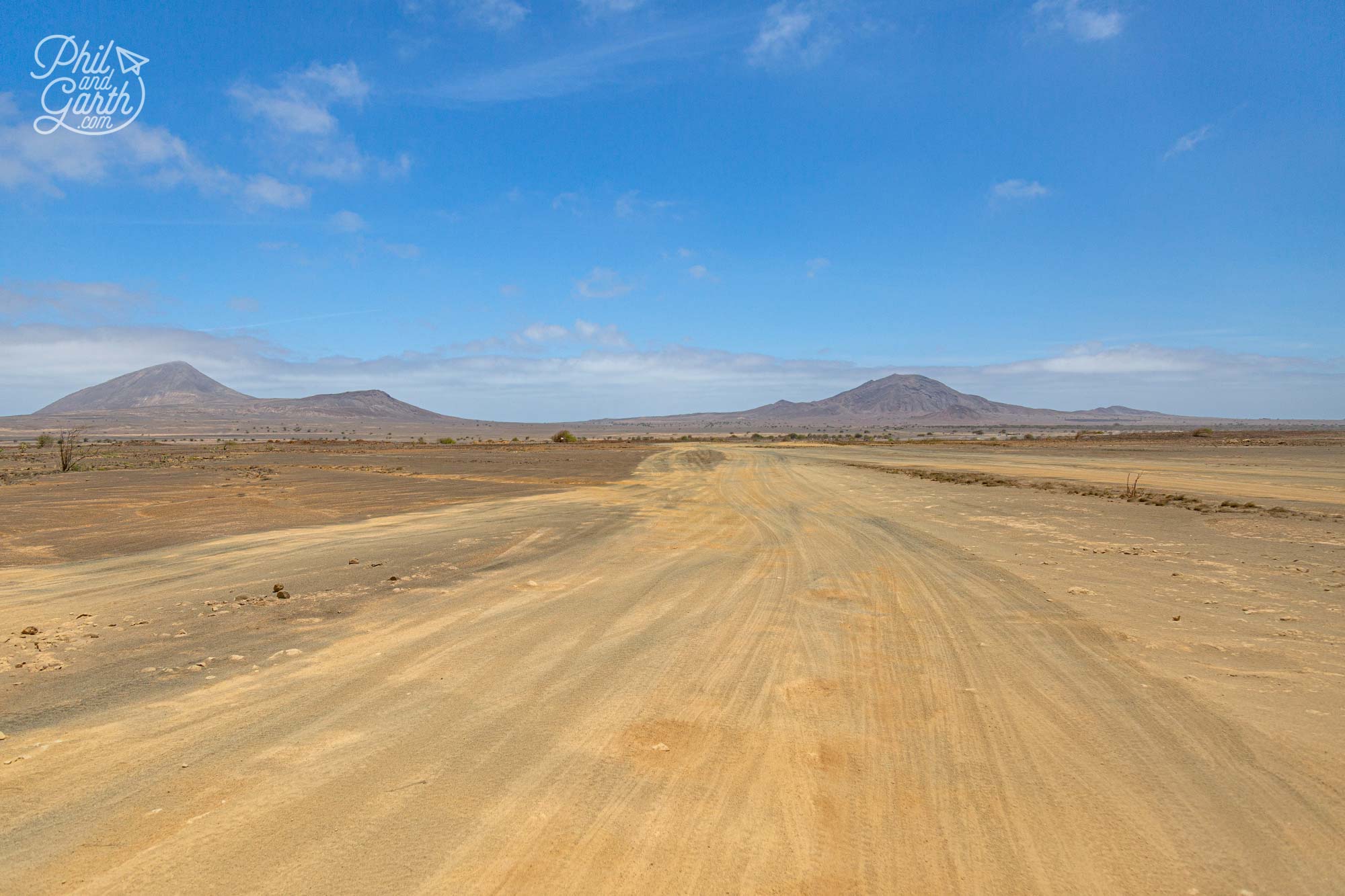
The vast desert landscape of Terra Boa
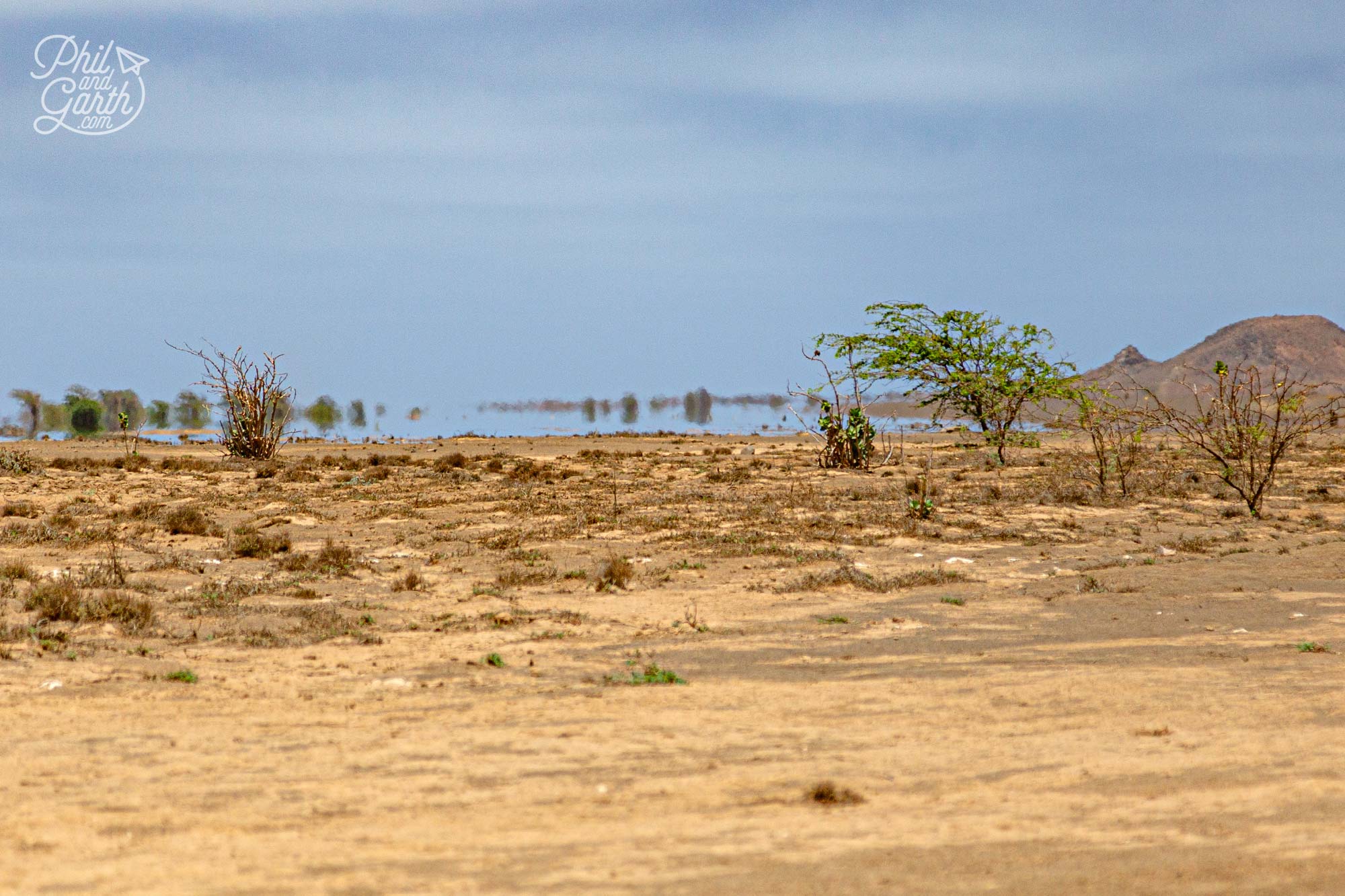
The illusion of water – witnessing the Terra Boa mirage
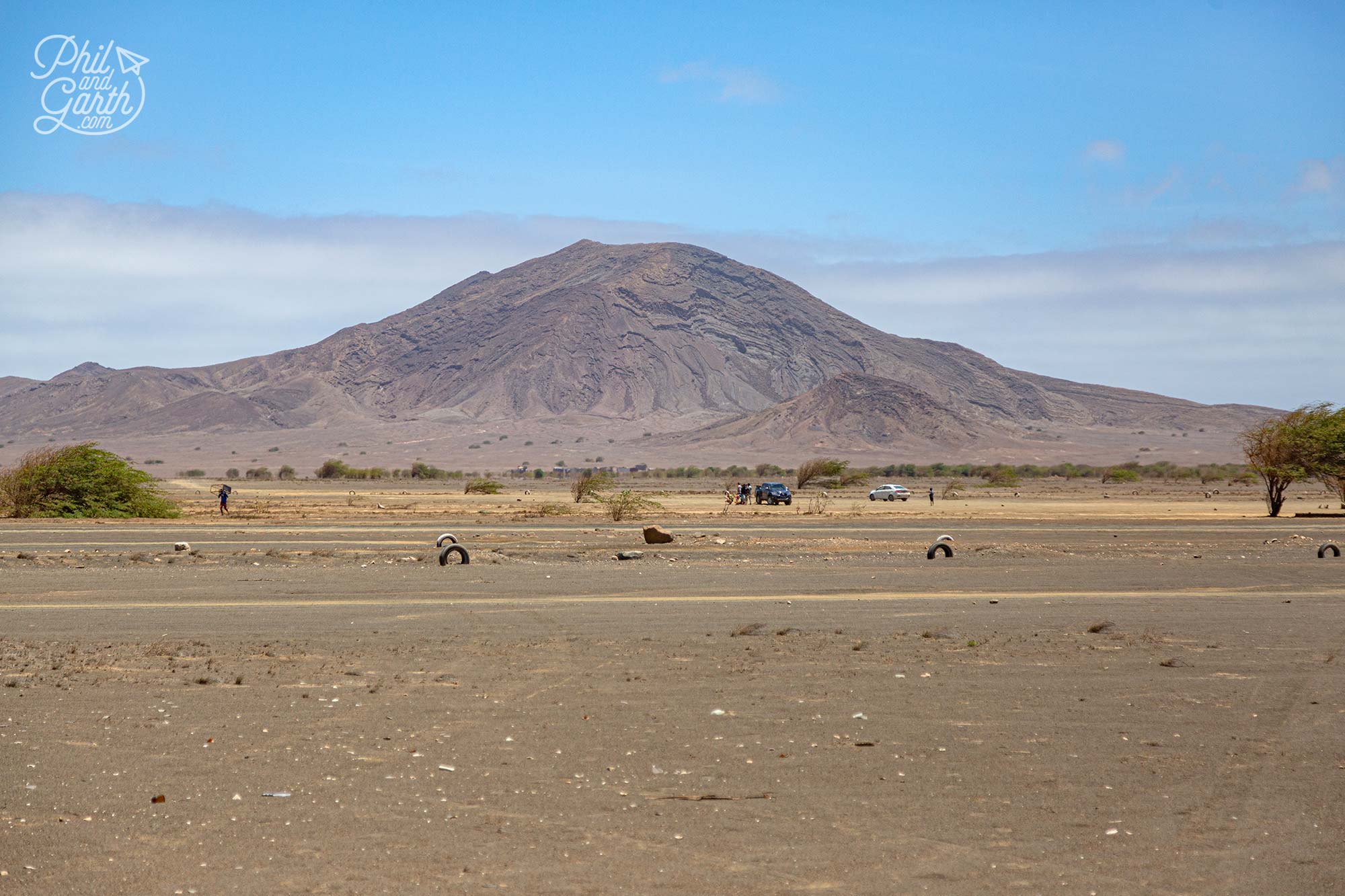
Terra Boa has an otherworldy landscape
Once we arrived Kendall kindly took lots of fun photos playing around with perspective – like Garth stamping on Phil. Kinda like the fun photos you see people take in the salt desert of Bolivia. So get creative!
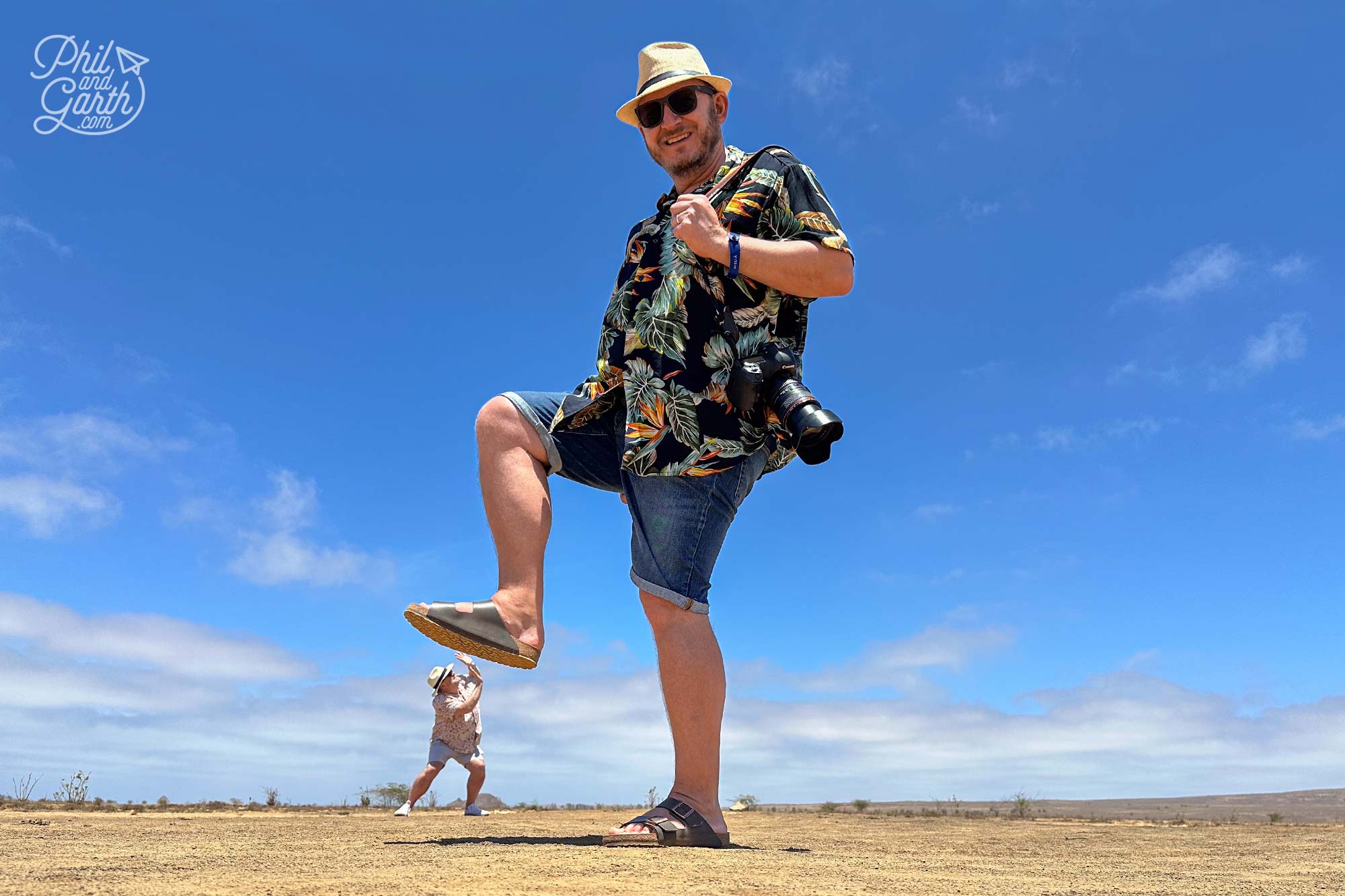
Getting creative with perspectives – Garth stamping on Phil
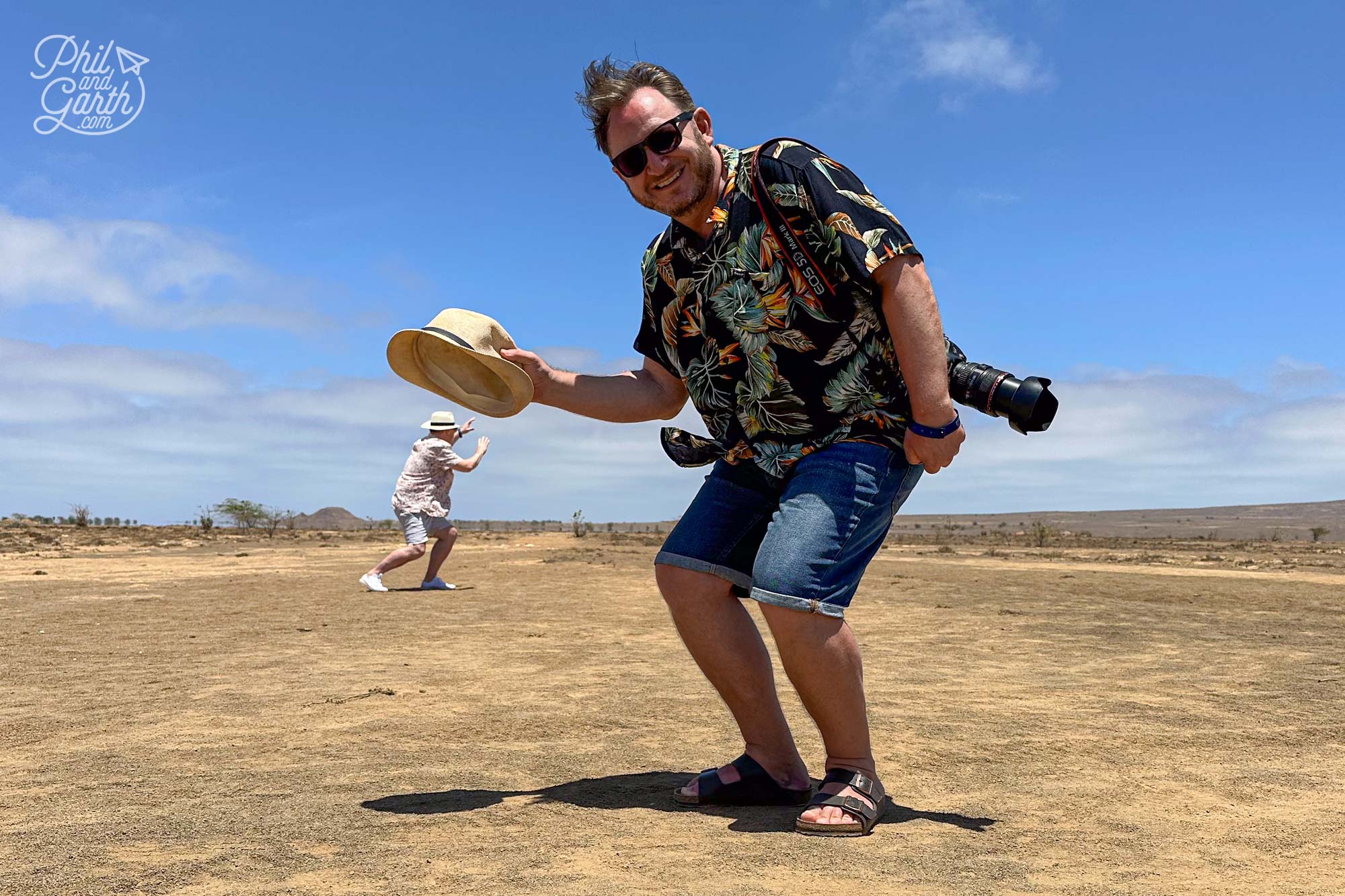
So much fun!
6. Buracona & ‘The Blue Eye’
Our 6th stop was to the rocky coastline of Buracona in the northwest of the island. This is one of the most popular things to do on Sal. The paid attraction (each) features various rocky pools. ‘The Blue Eye’ is the most famous one, that is 24 metres deep and when the sun hits the sandy bottom at 11am to midday it gives the appearance of a blue eye as the sun shines down a small turquoise colour.
We visited at 1.30pm as the sunlight was just passing over the cave. We queued for a bit like Disneyland, but thought it was all a bit underwhelming for a 30-second glimpse, but nevertheless interesting to see it. Kendall told us by buying a ticket to the Blue Eye we are supporting a local school in Palmeira – so think of it as a donation.
To be honest the rugged coastline scenery is much more impressive, especially as you discover more walking around the site. There are lots of great photo opportunities from the waves crashing against the black lava rocks. The landscape is very much like the Los Hervides Sea Caves in Lanzarote if you’ve been there.
We thought it was curious there was no information about the hexagonal-shaped rock formations everywhere. They are similar to the ones we’ve seen at The Giant’s Causeway, Northern Ireland and at Fingal’s Cave in Scotland.
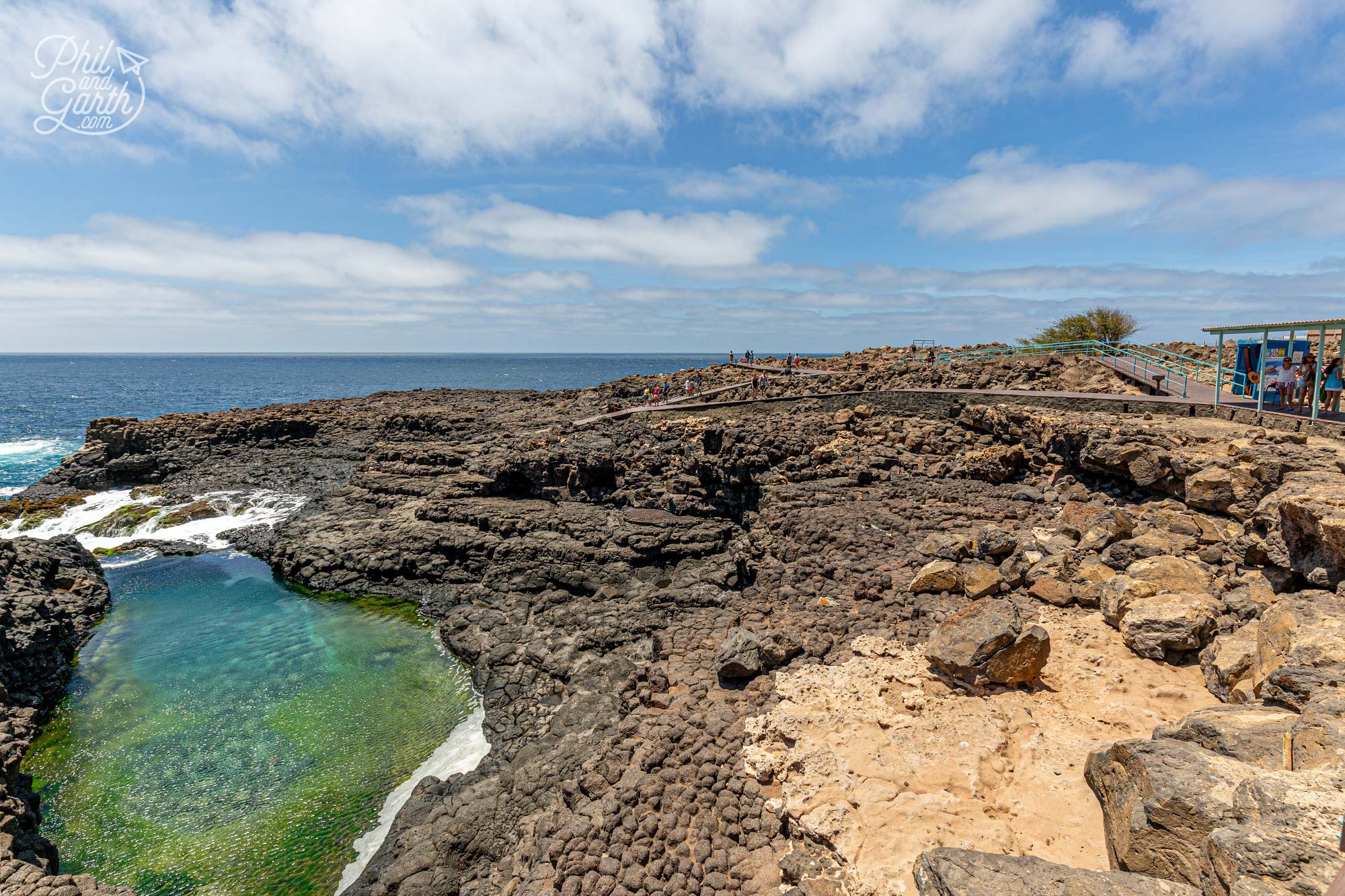
You can swim in the this lagoon when conditions are calm
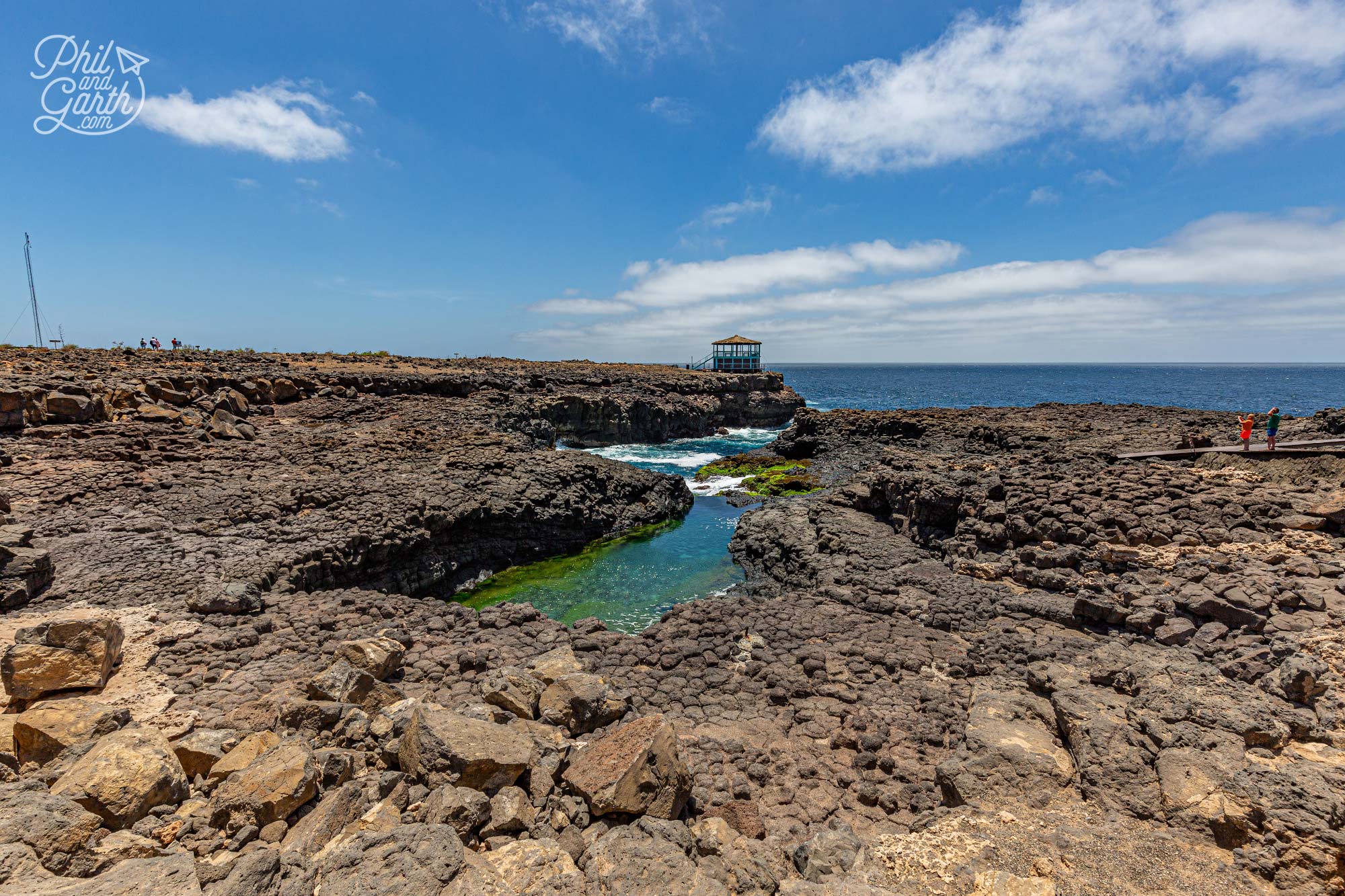
Check out the hexagon patterns in the volanic rock
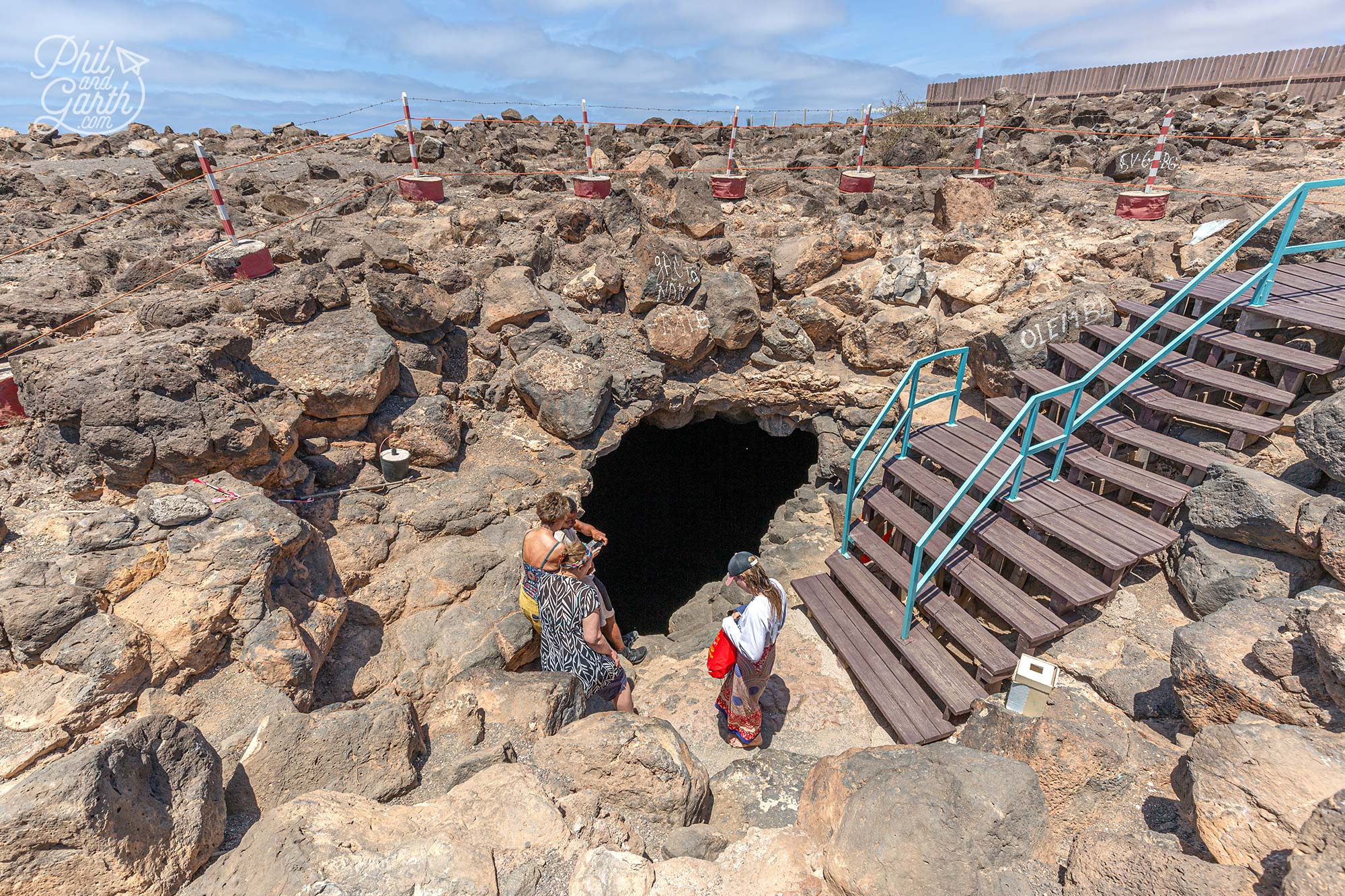
Sal’s famous Blue Eye cave

Legend says seeing the Blue Eye is a sign of good fortune
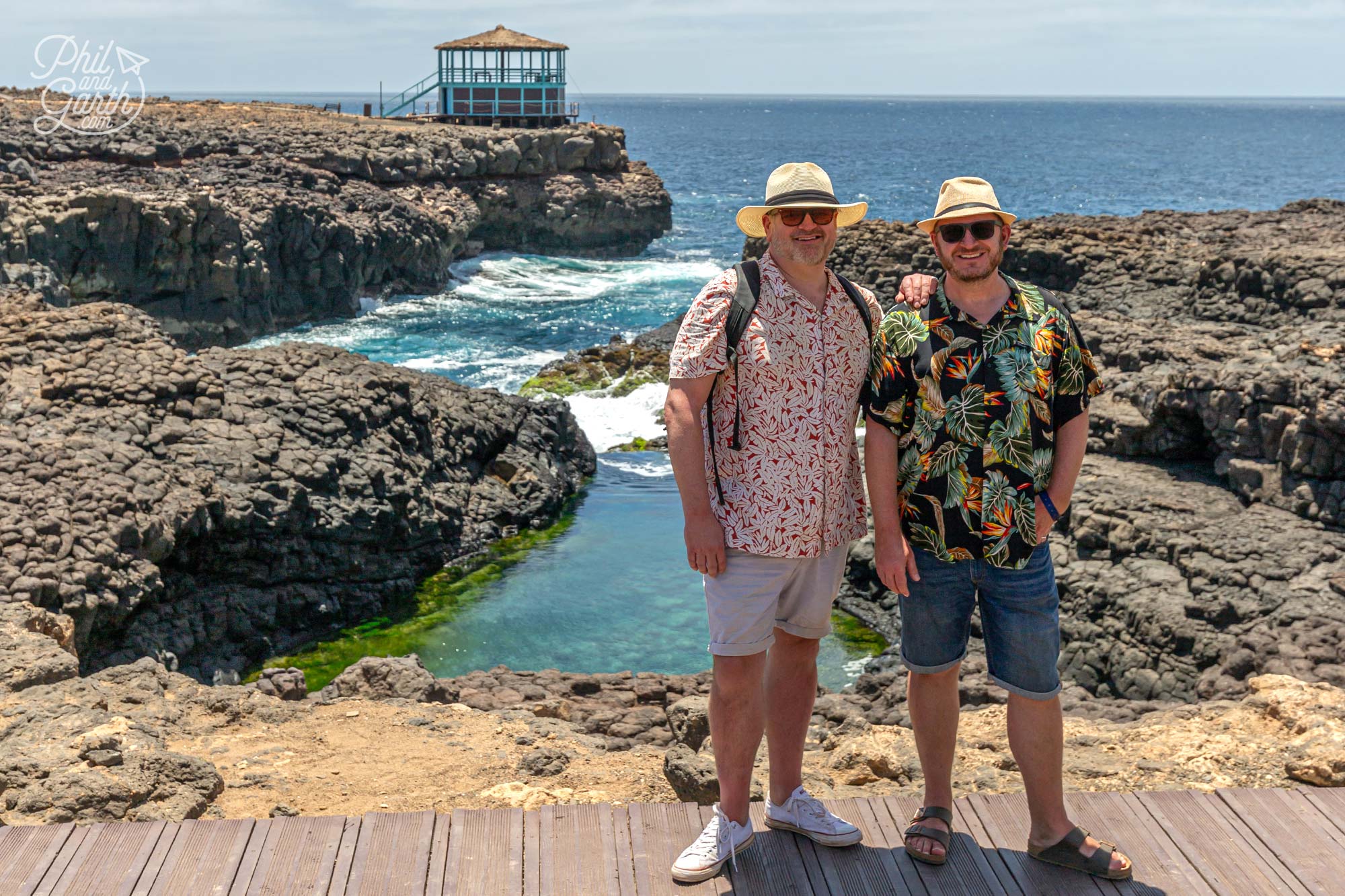
Phil and Garth at Buracona
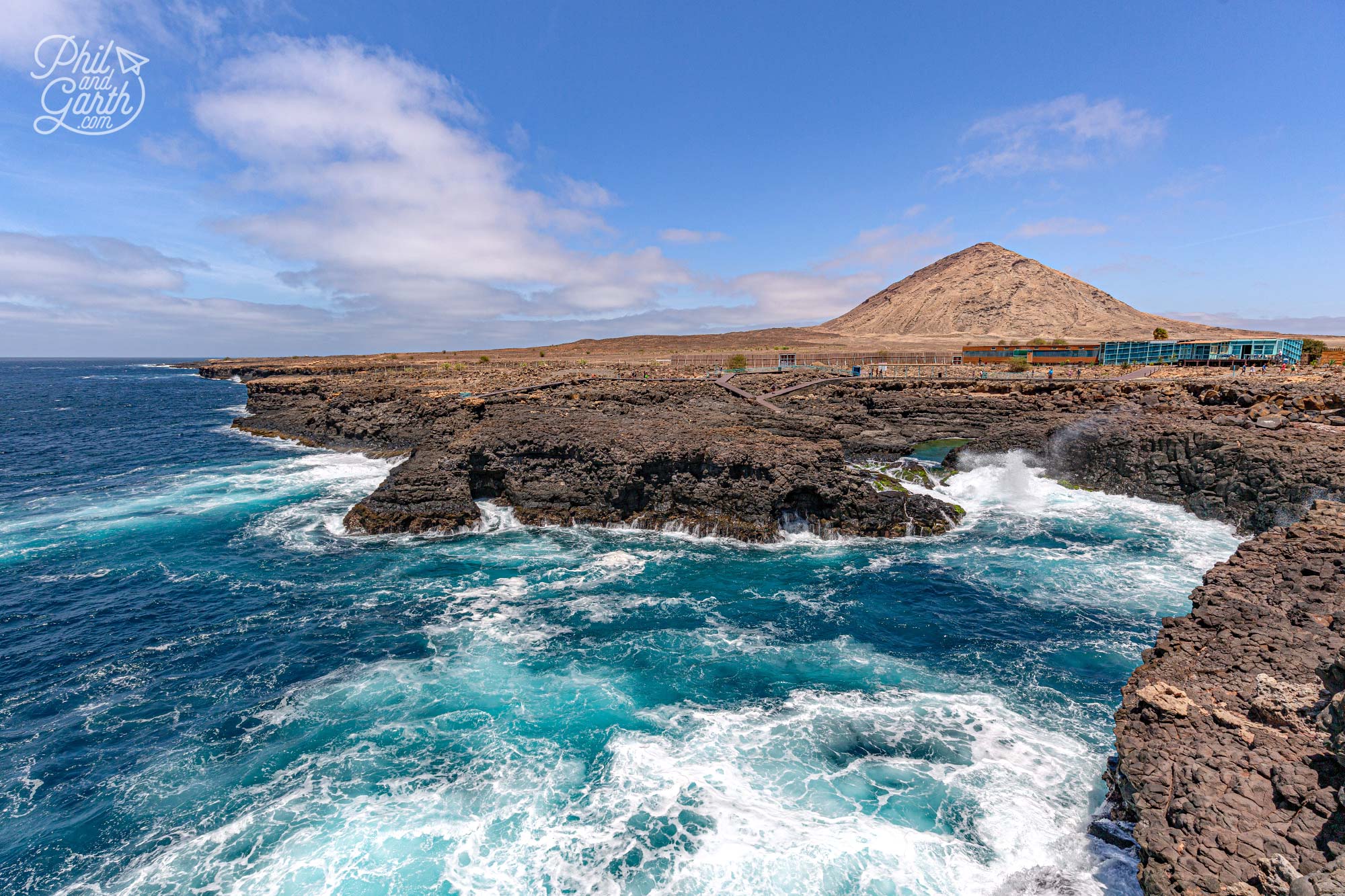
Sal’s dramatic rocky coast of Buracona
Before you leave wander around the ‘Island Gardens’ There’s an interesting 3D relief map of Sal where you can understand the geology of the island in front of you.
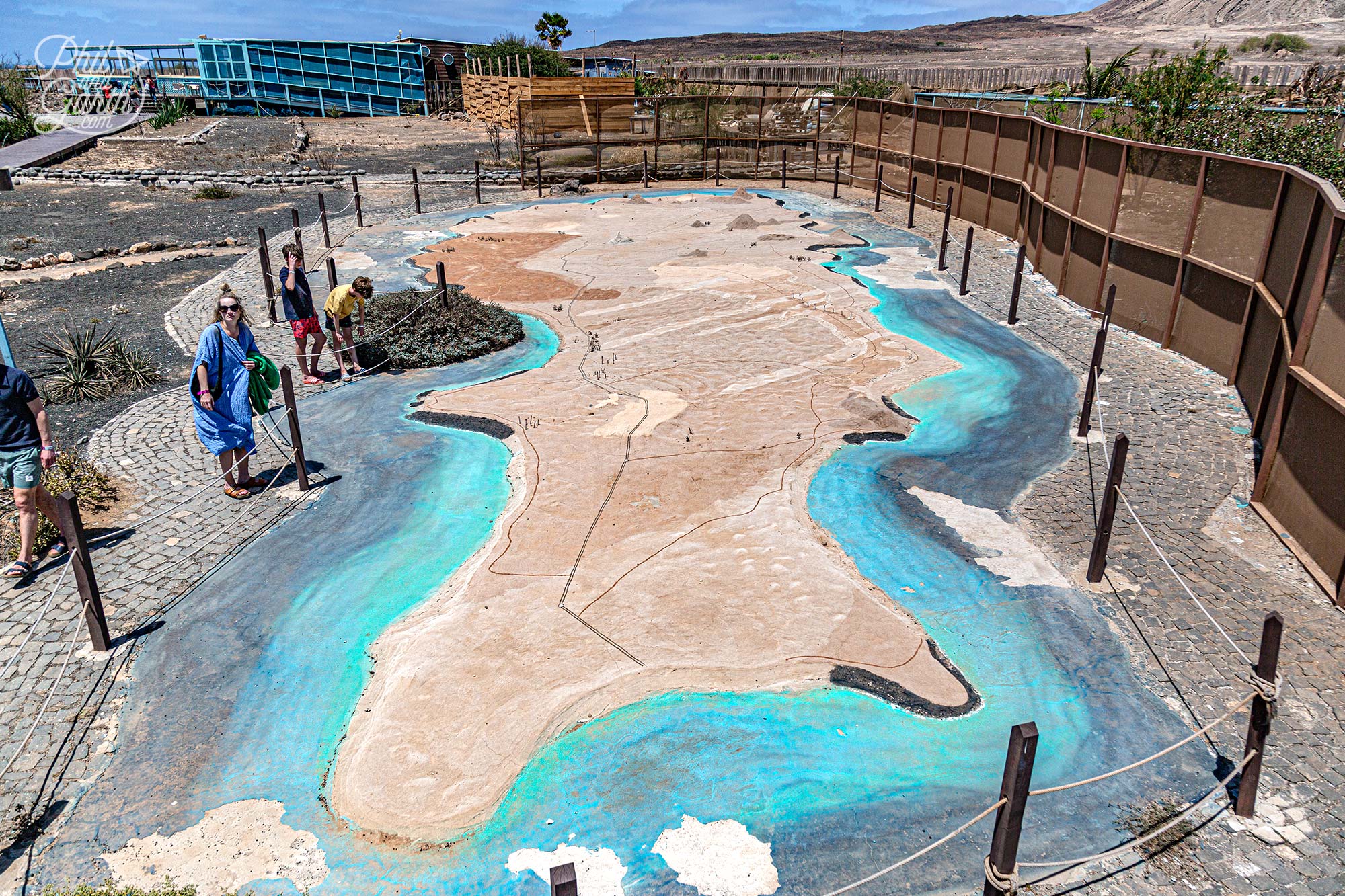
Check out the 3D map of Sal in the Island Gardens
7. Palmeira Village
Close to Santa Maria is the authentic town of Palmeira which is lovely. This fishing village boasts colourful cobblestone streets with houses painted in every colour of the rainbow, plus some palm-lined pavements and a small harbour.
Garth enjoyed photographing and exploring the street art of Palmeira streets. We found art on the exteriors of cafes and people’s homes which symbolise people’s daily lives. Look for the blue building adorned with a large map painted on its side – it showcases every island in Cape Verde.

The rainbow painted town of Palmeria
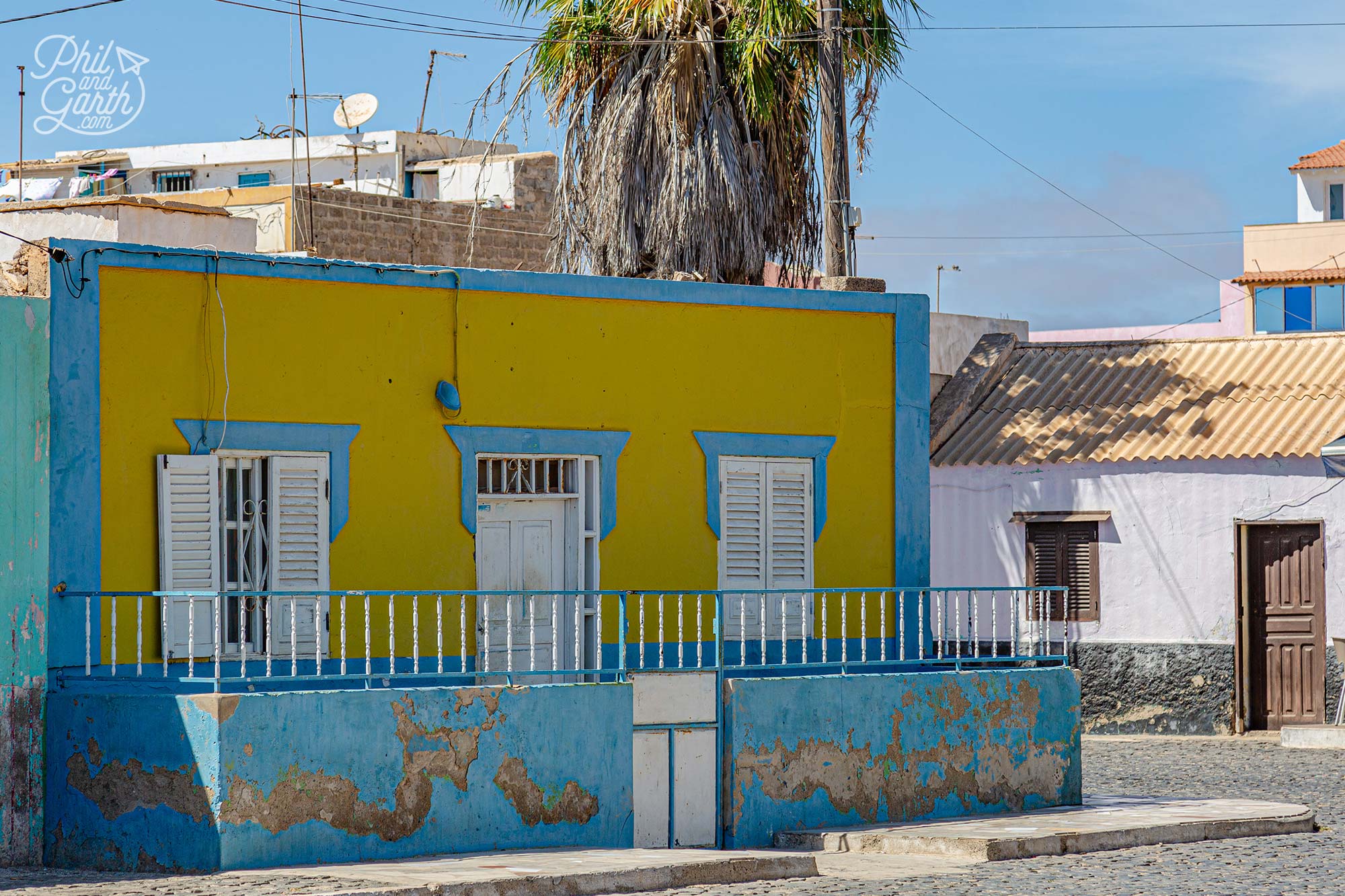
Palmeira is small and pretty from all the colour
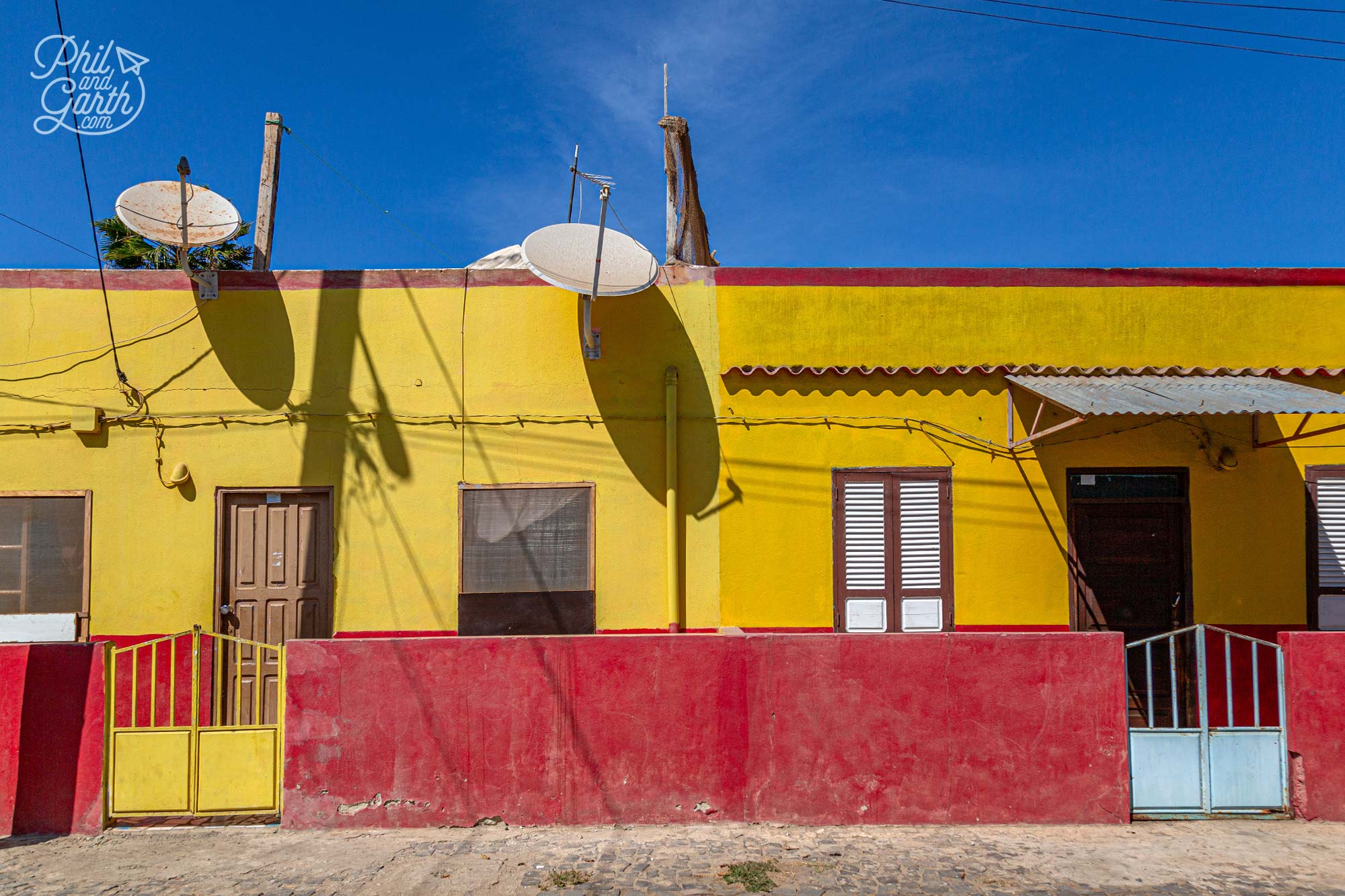
All the colours of Spain!
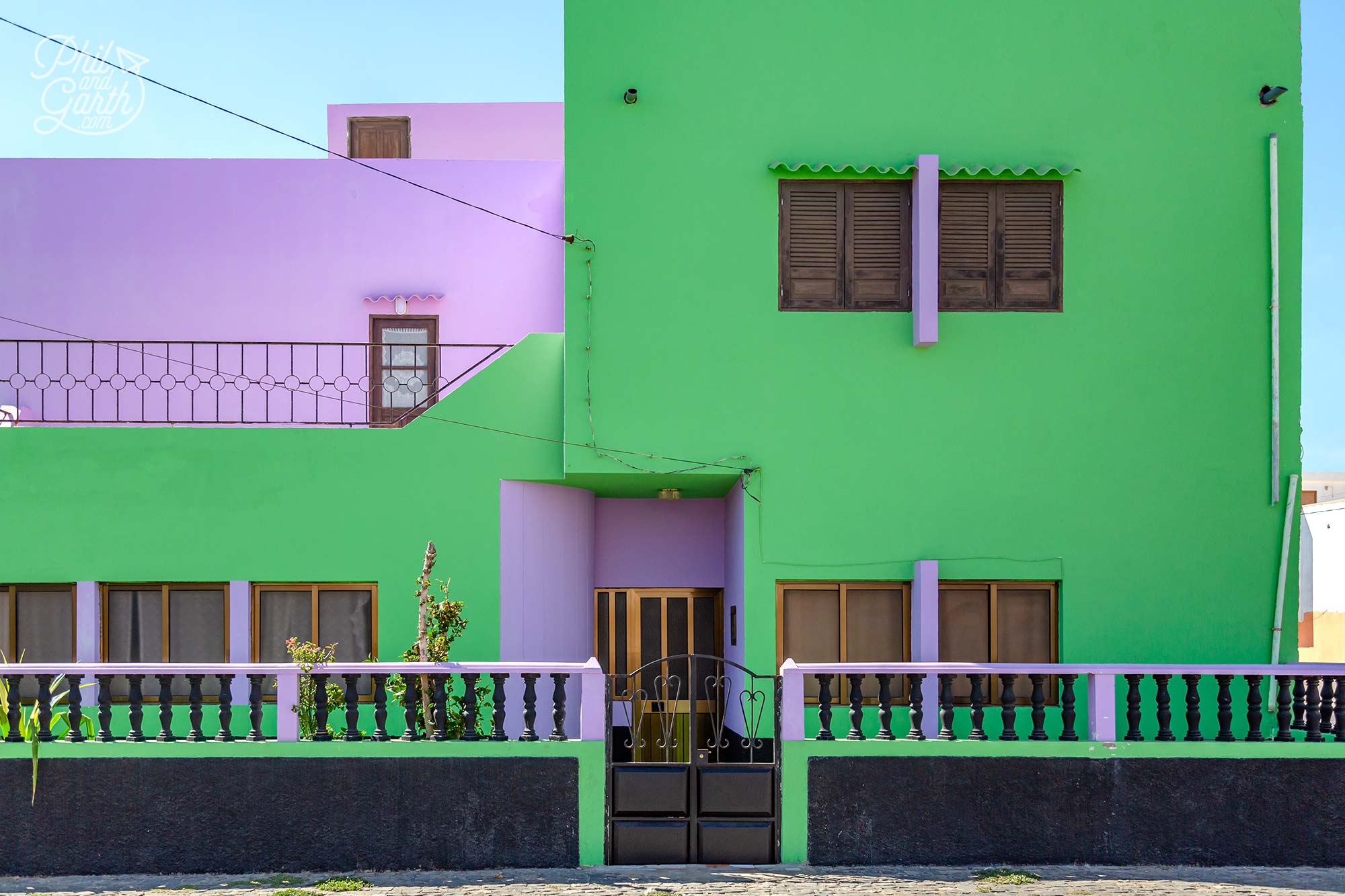
Pink and green, what a combination
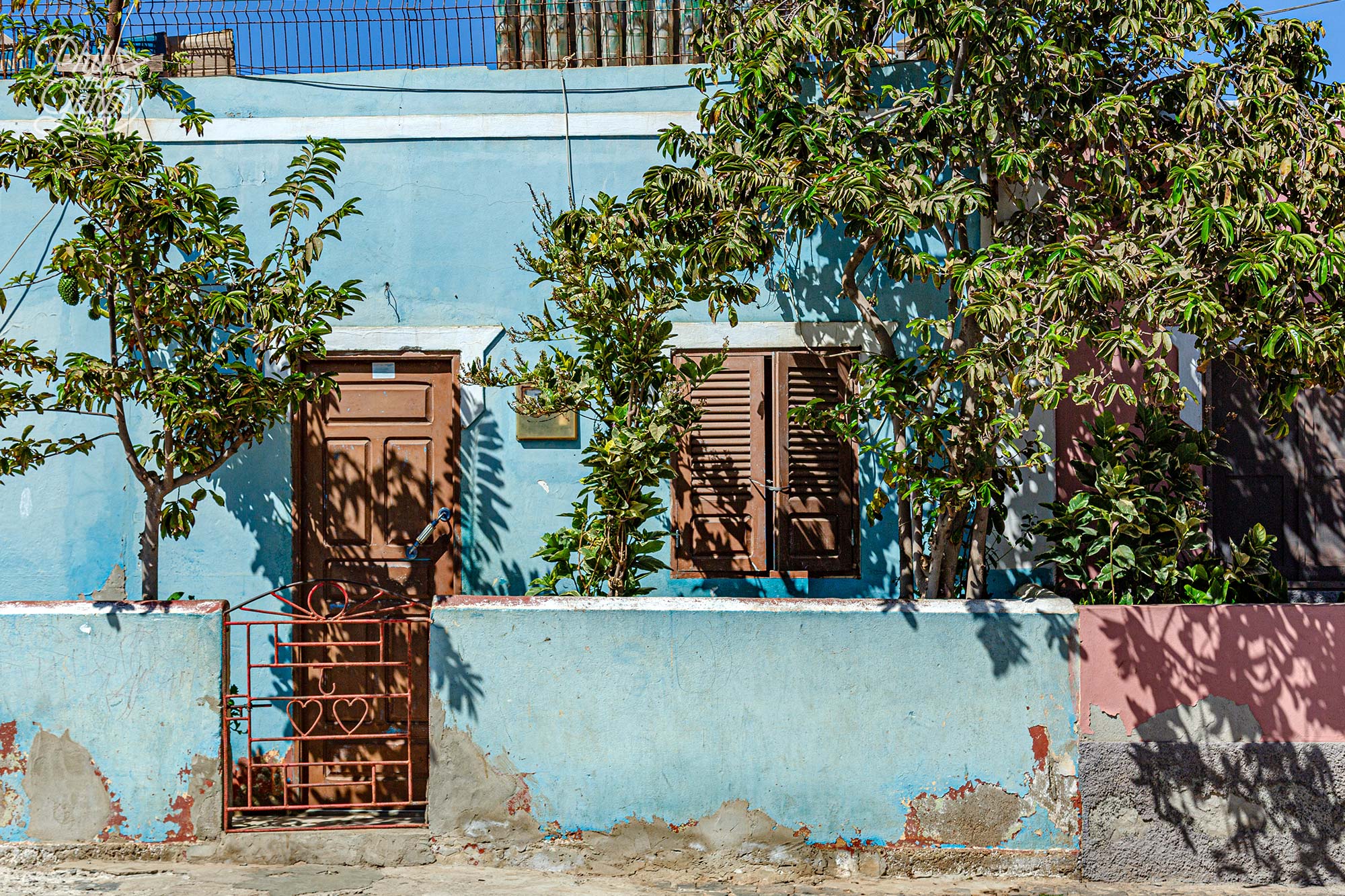
Love this pale blue painted home
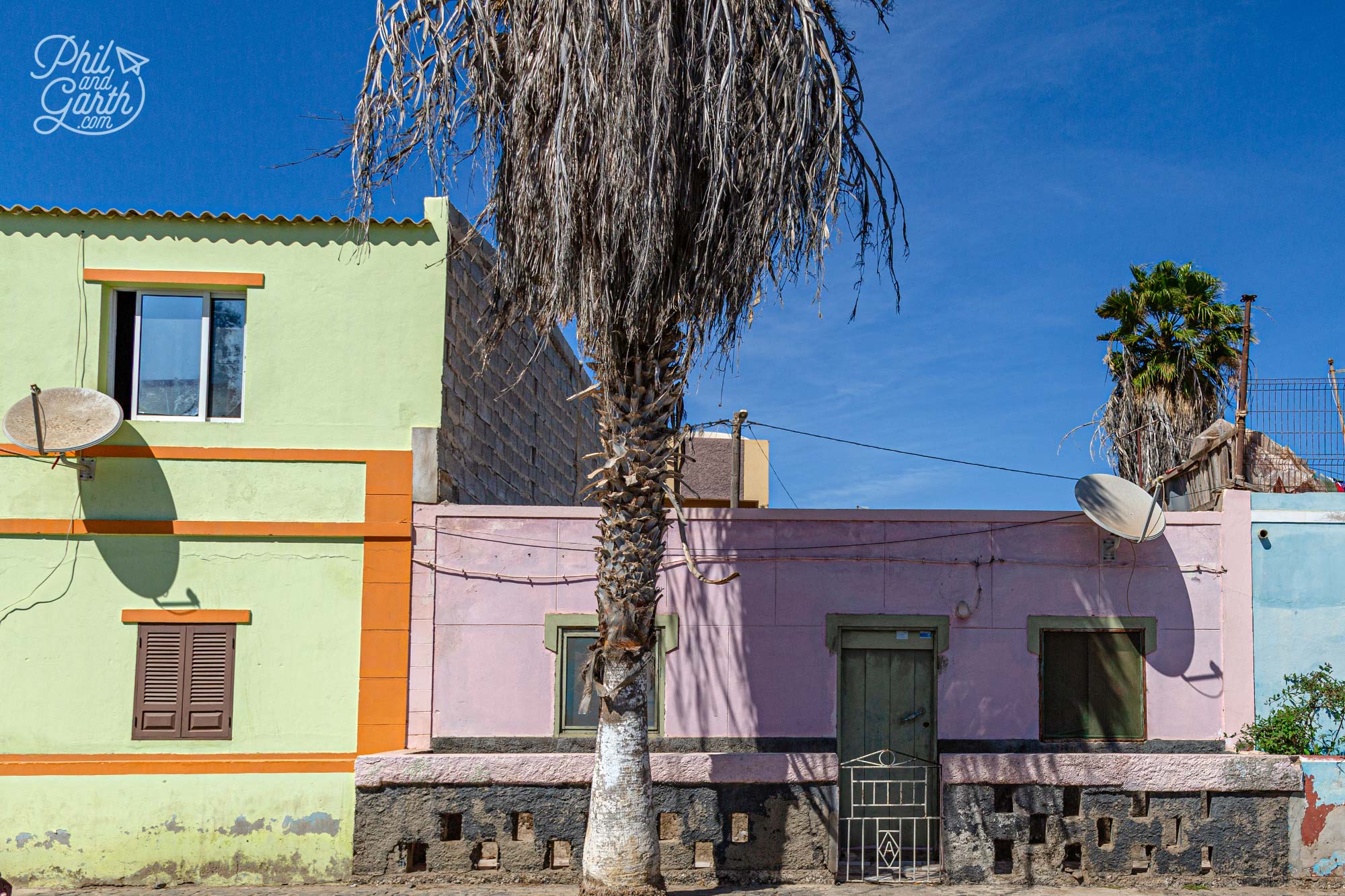
Shady in pink
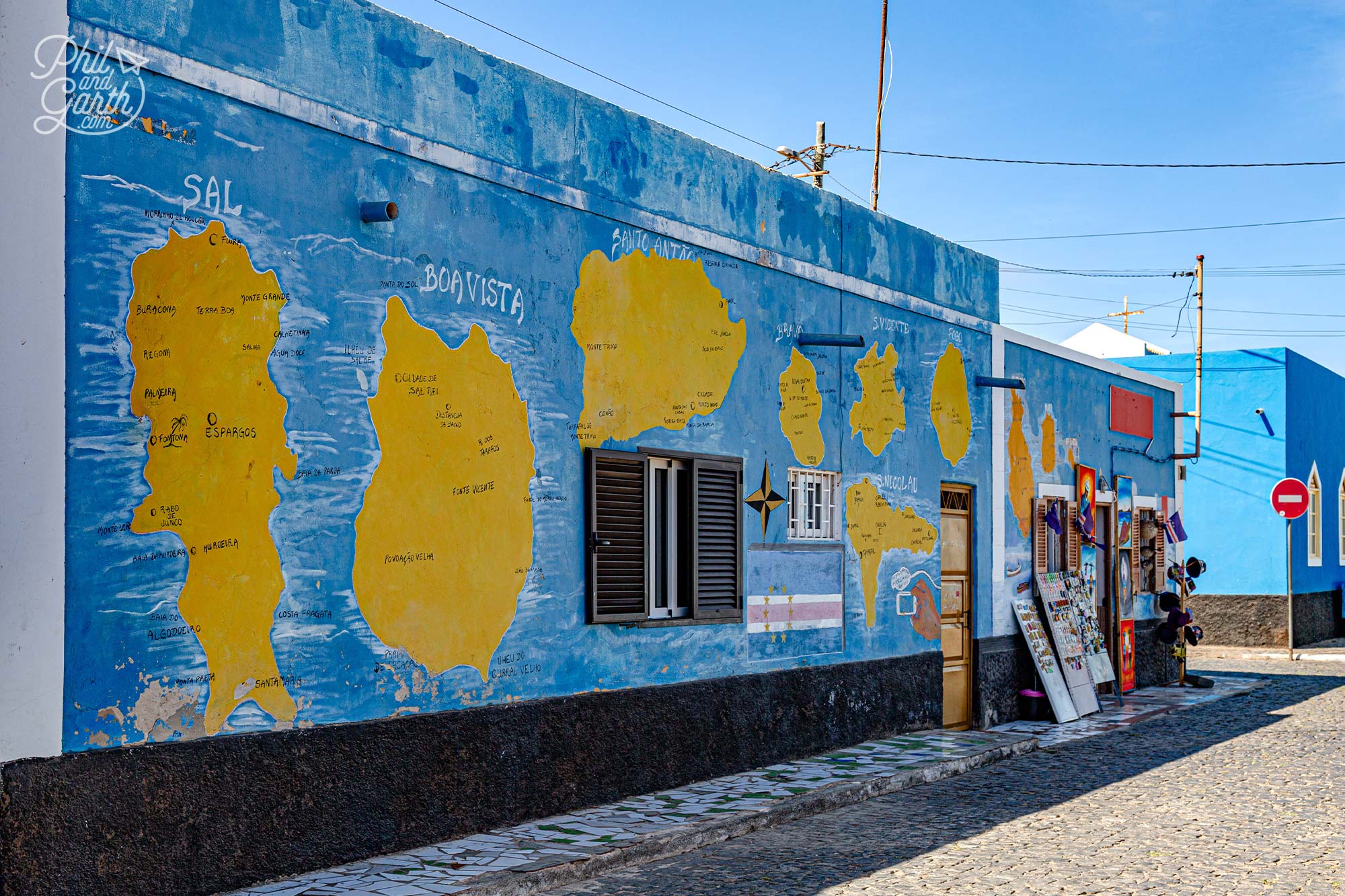
So many vibrant murals in Palmeira’s village
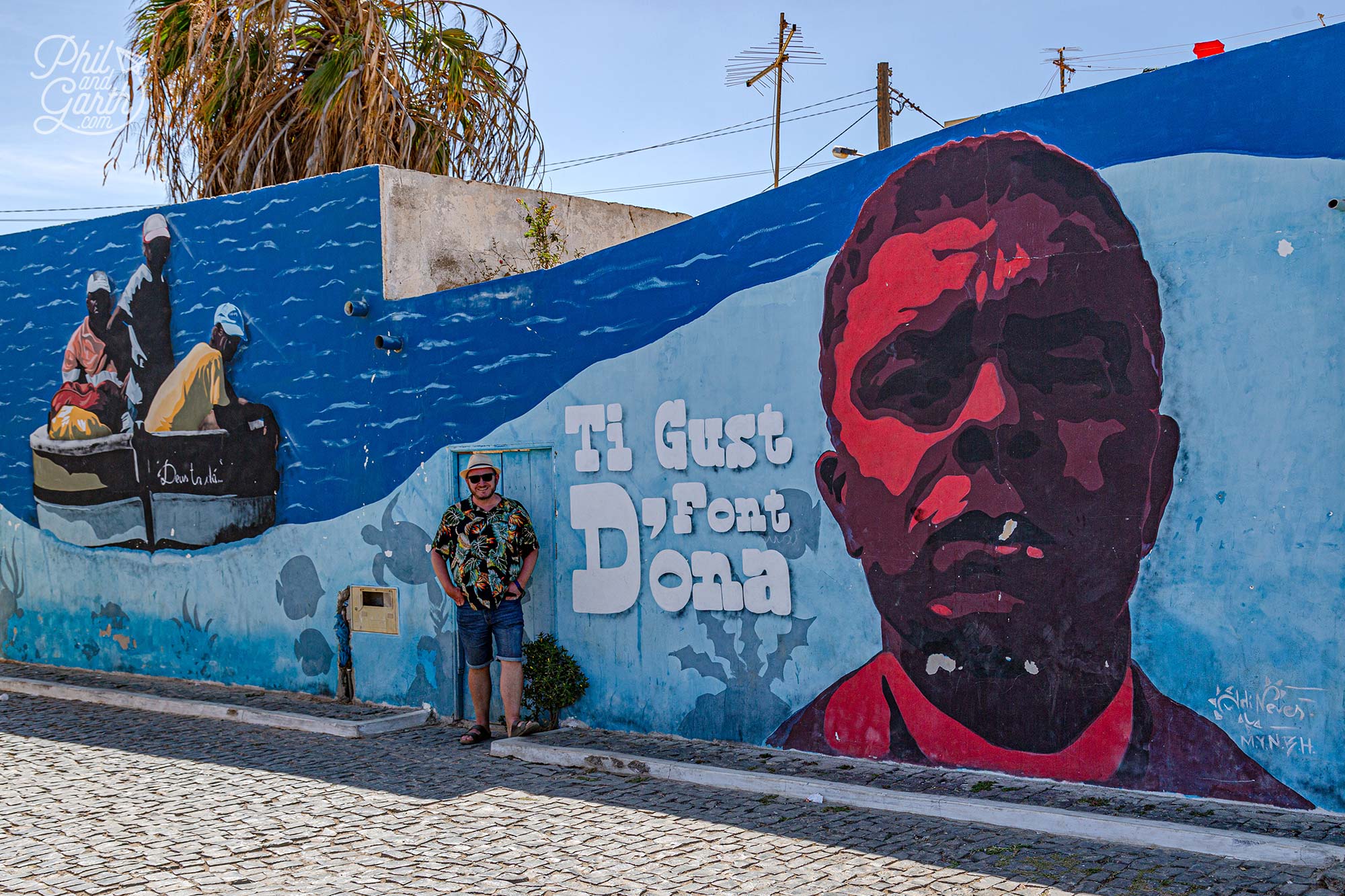
Garth infront of a mural about a local fisherman
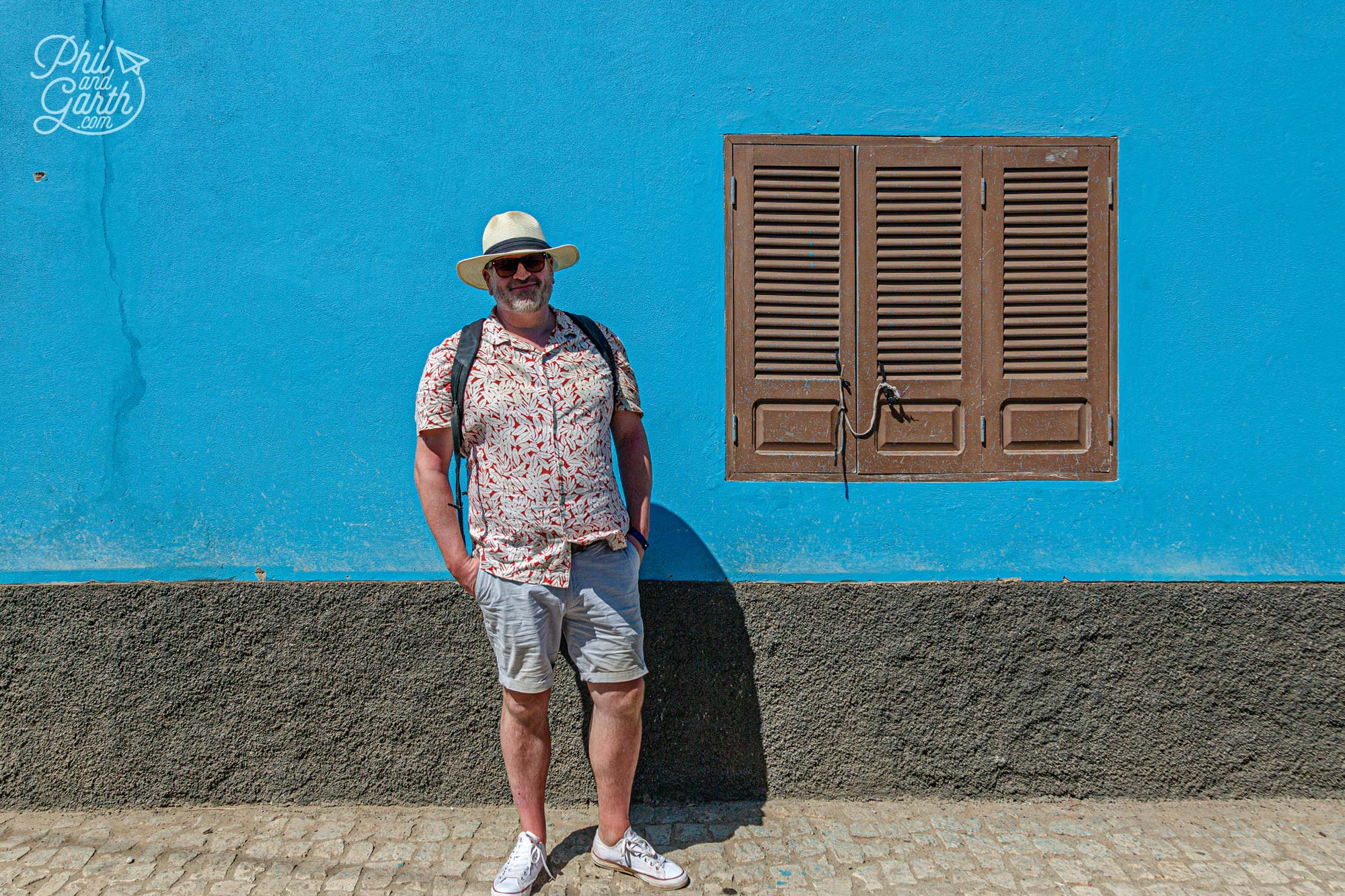
Phil with an olympic blue wall
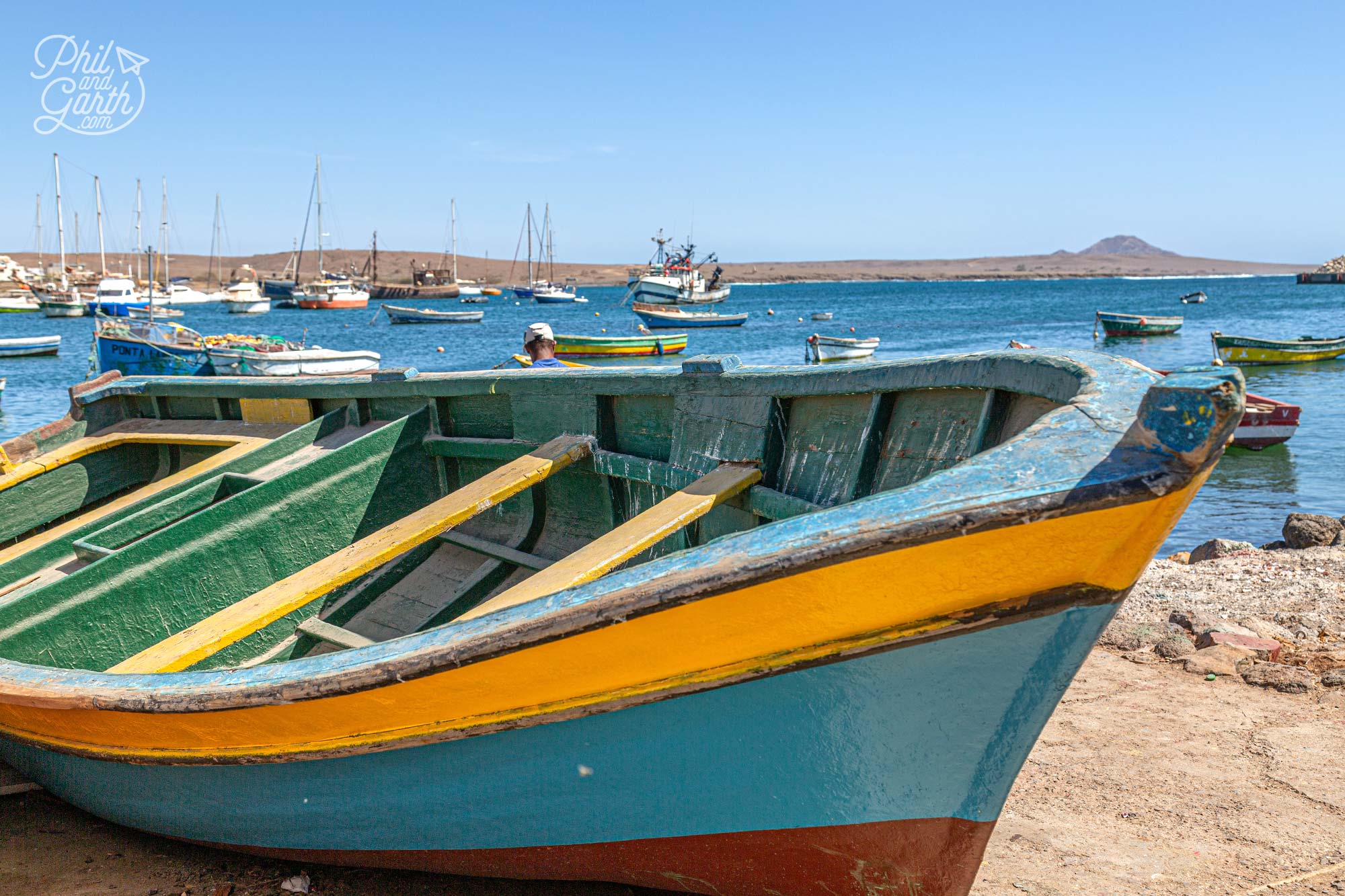
Palmeira’s harbour
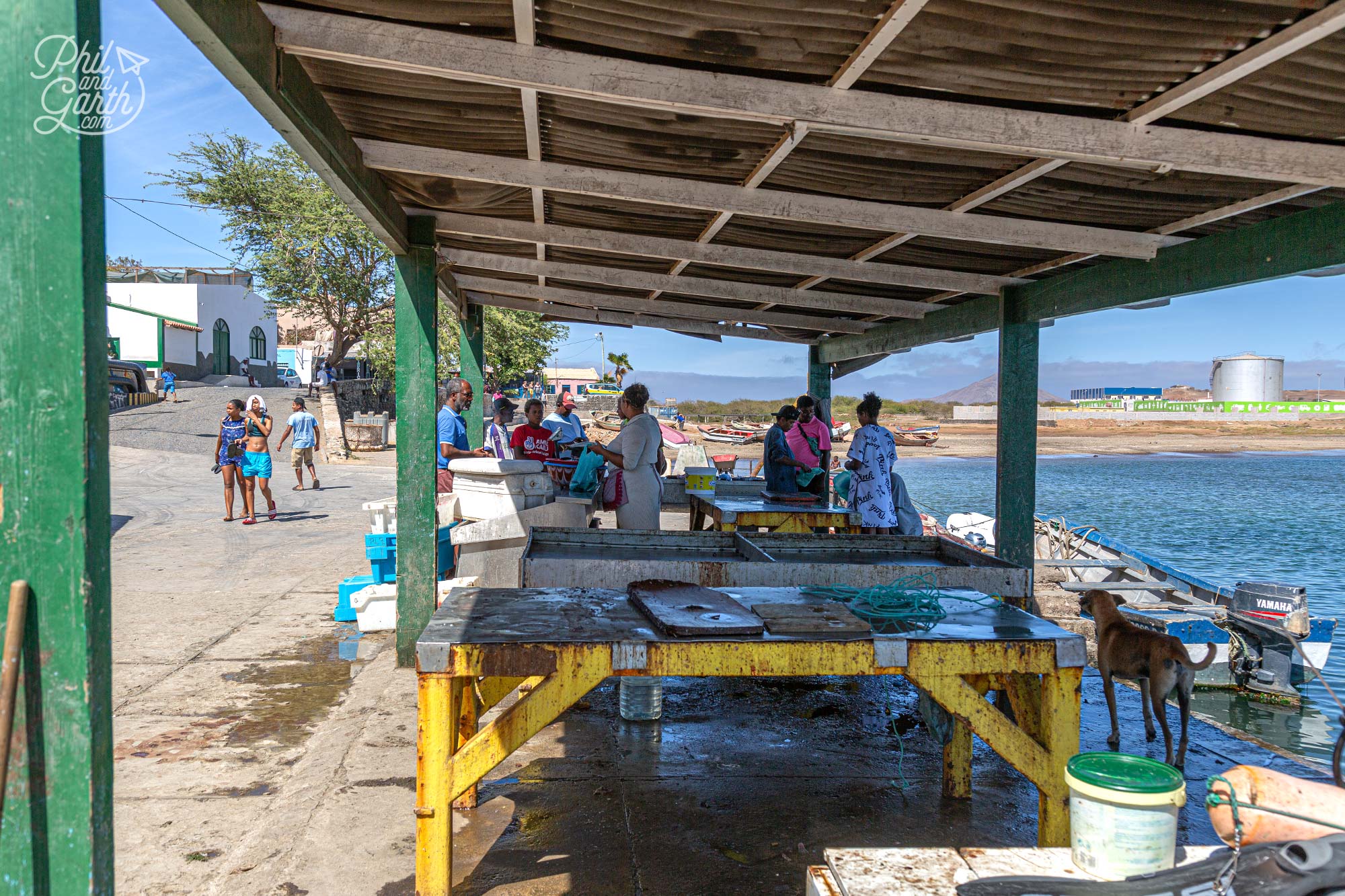
Selling the remaining fish in the harbour
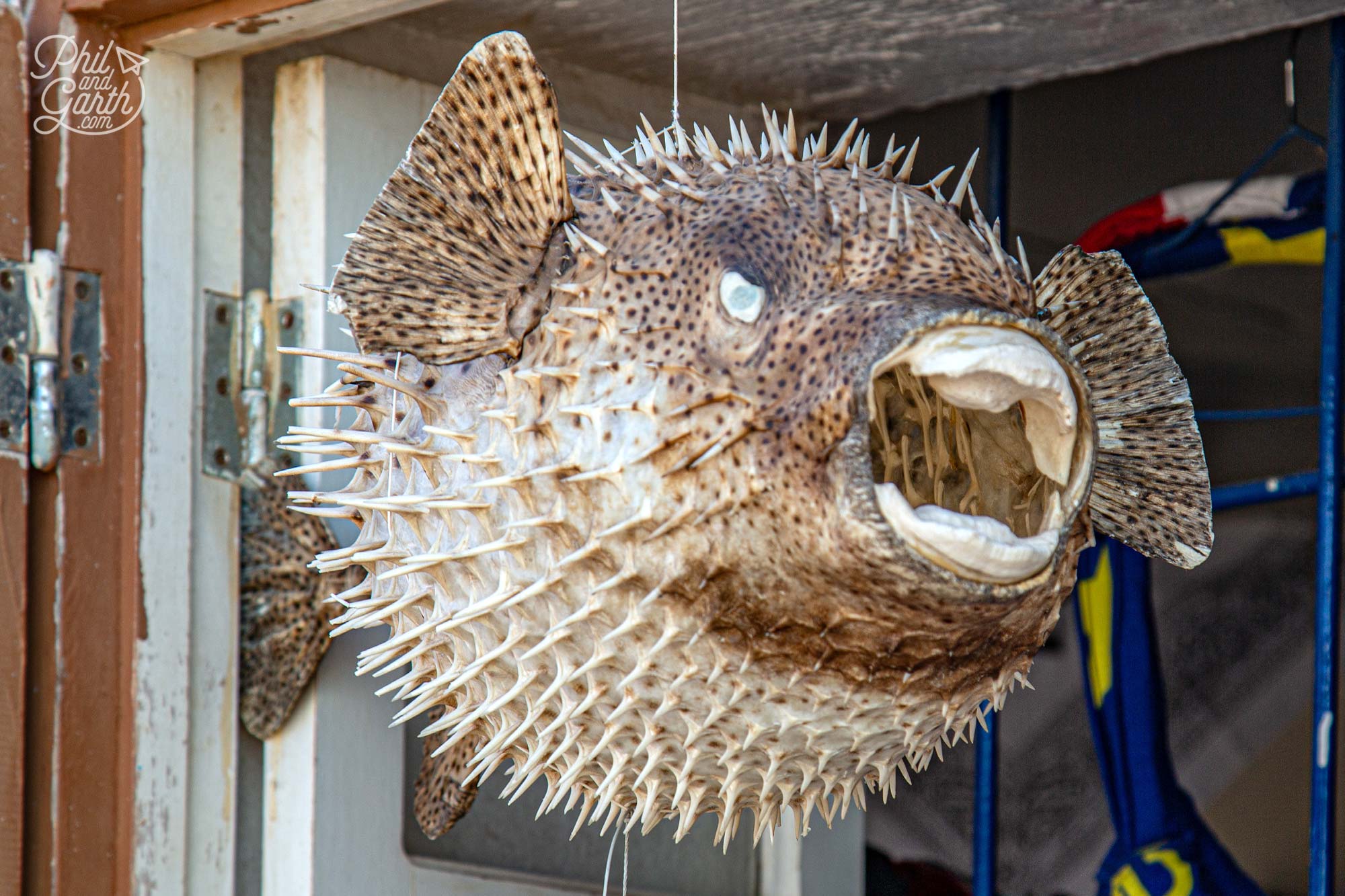
An inflated pufferfish for sale, so ugly!
It was time for lunch. Kendall booked us a table at Gata Fish & Yacht Club where we enjoyed local fish served with chips, rice and salad. The restaurant is obviously where all the island guides bring their tourist groups. But it was so nice to eat some fresh fish which isn’t served at the big resort hotels for some reason. Even if Garth moaned about the fish bones of which there were about 6!
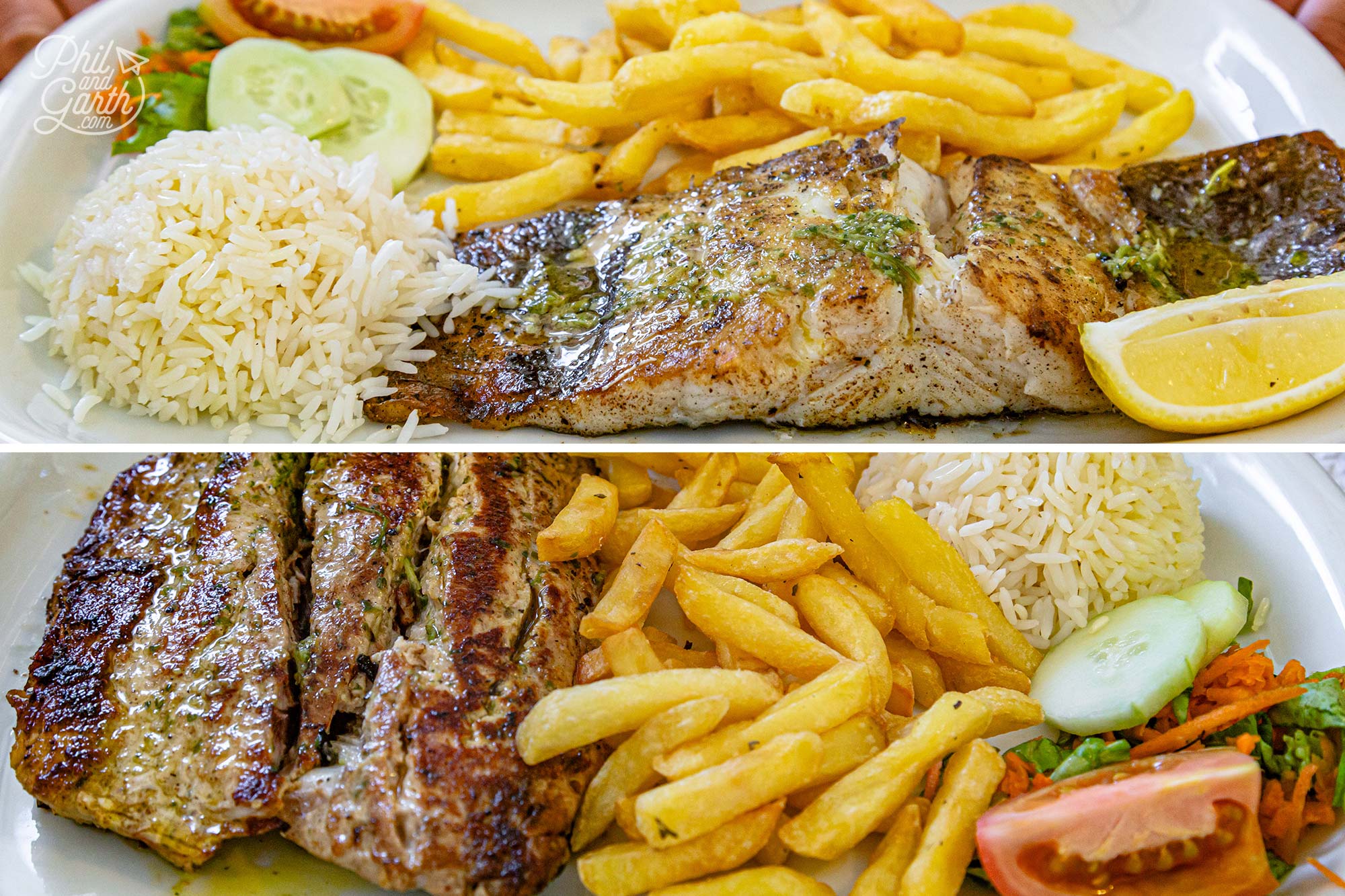
Fish and chips Cape Verde style
8. Espargos
Espargos is Sal’s capital city located in the centre of the island. Completely untouched by tourism. The city is named after the wild asparagus that used to grow in this area, it doesn’t anymore.
Kendall took us up to the city’s hill to the viewpoint called Monte Curral. It’s a military transmitting and receiving station but you can walk around the outside of the whole thing (watch your step) and take in panoramic views of Espargos and both sides of the island.
You’ll soon notice Espargos has lots of super colourful painted homes but we noticed there are many only one floor storey high and the rest is just grey concrete. This is because once people have the cash to finish the upper stories, then the whole building is finished and painted the same colour. It reminded us a little of the colourful houses of Bo-Kaap in Cape Town.
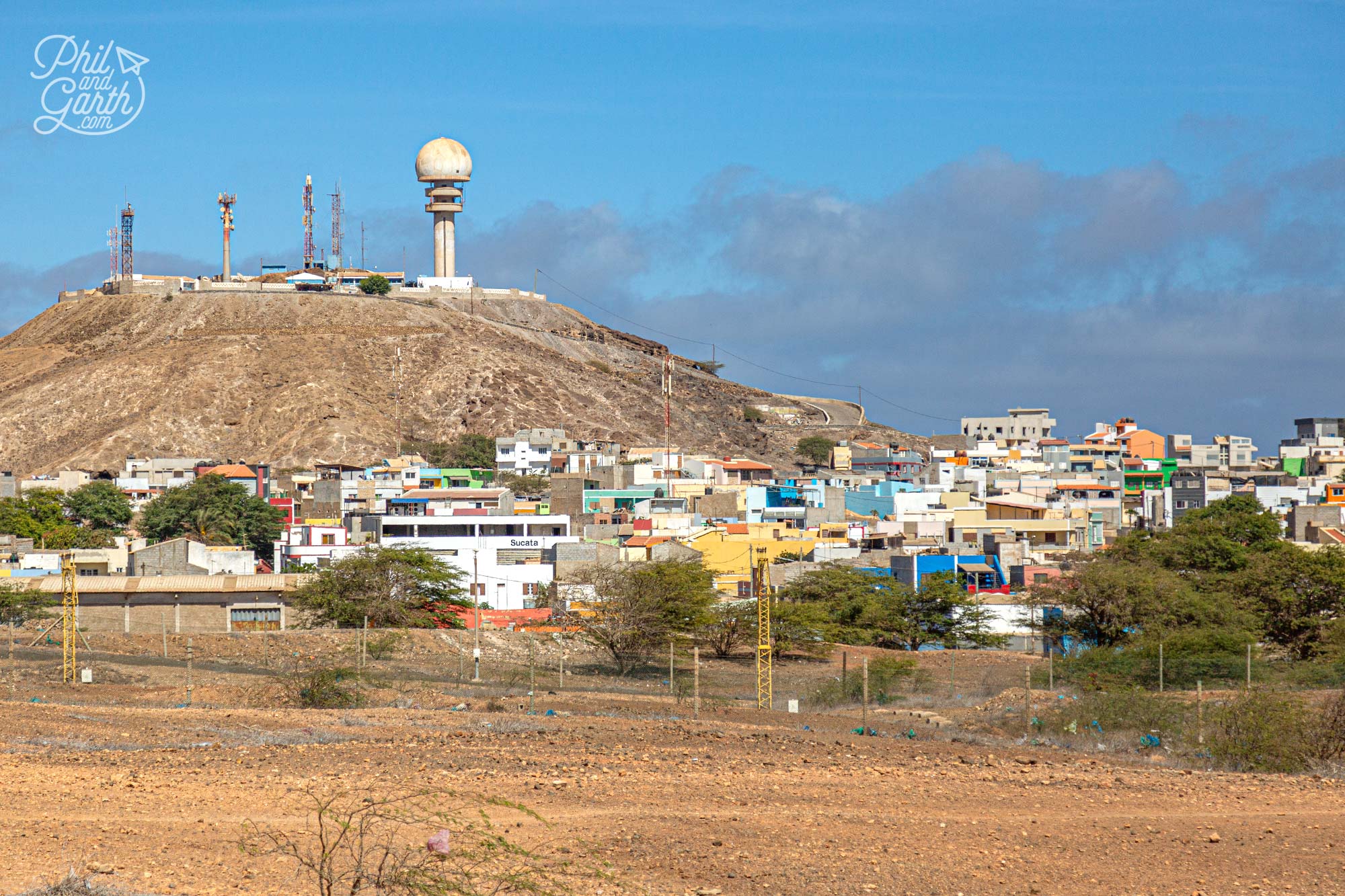
Espargos is Sal’s colourful capital city
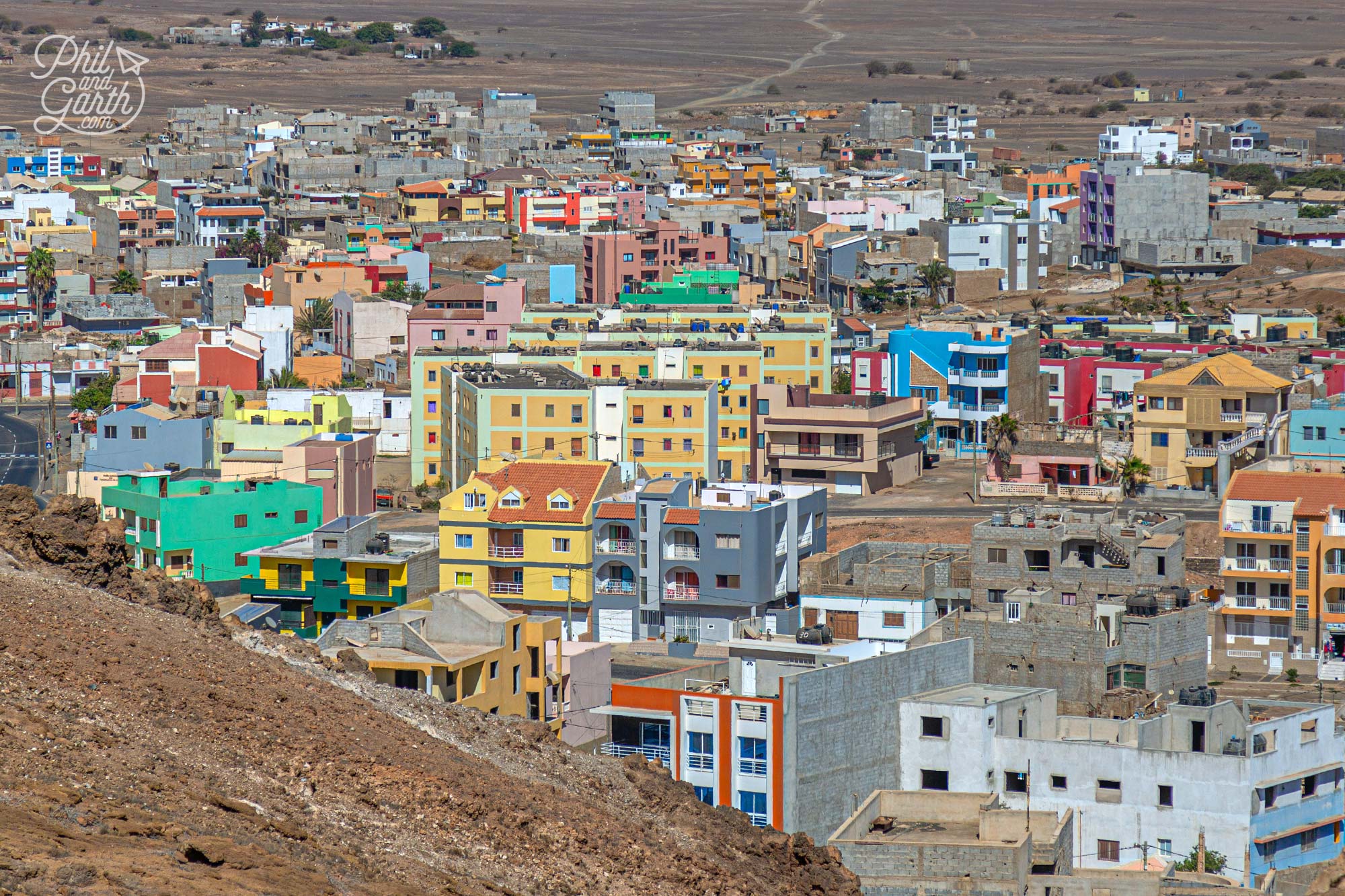
From the viewpoint at the top of the hill you can see all the colour
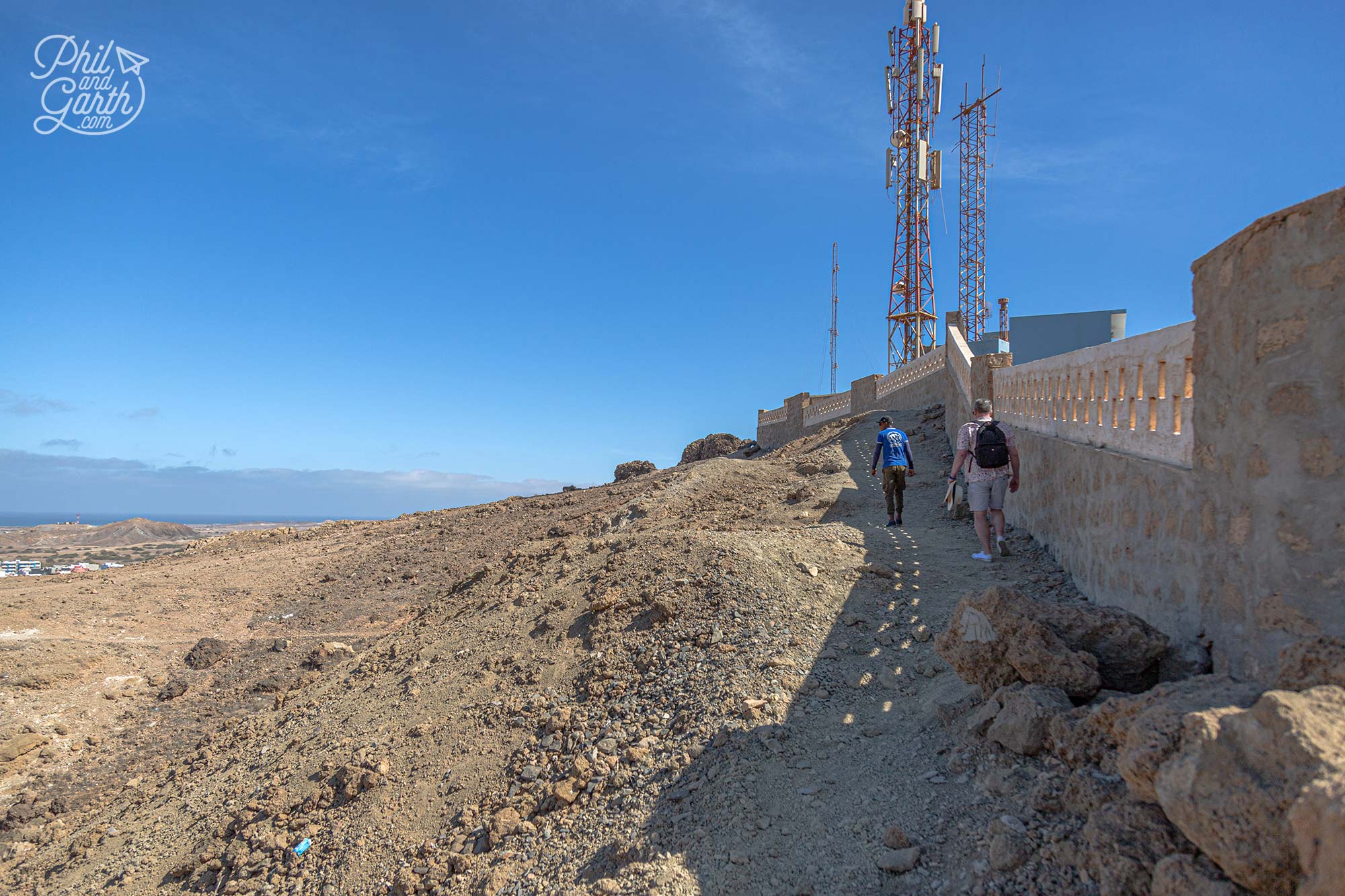
There is no pathway around the military base so watch your step
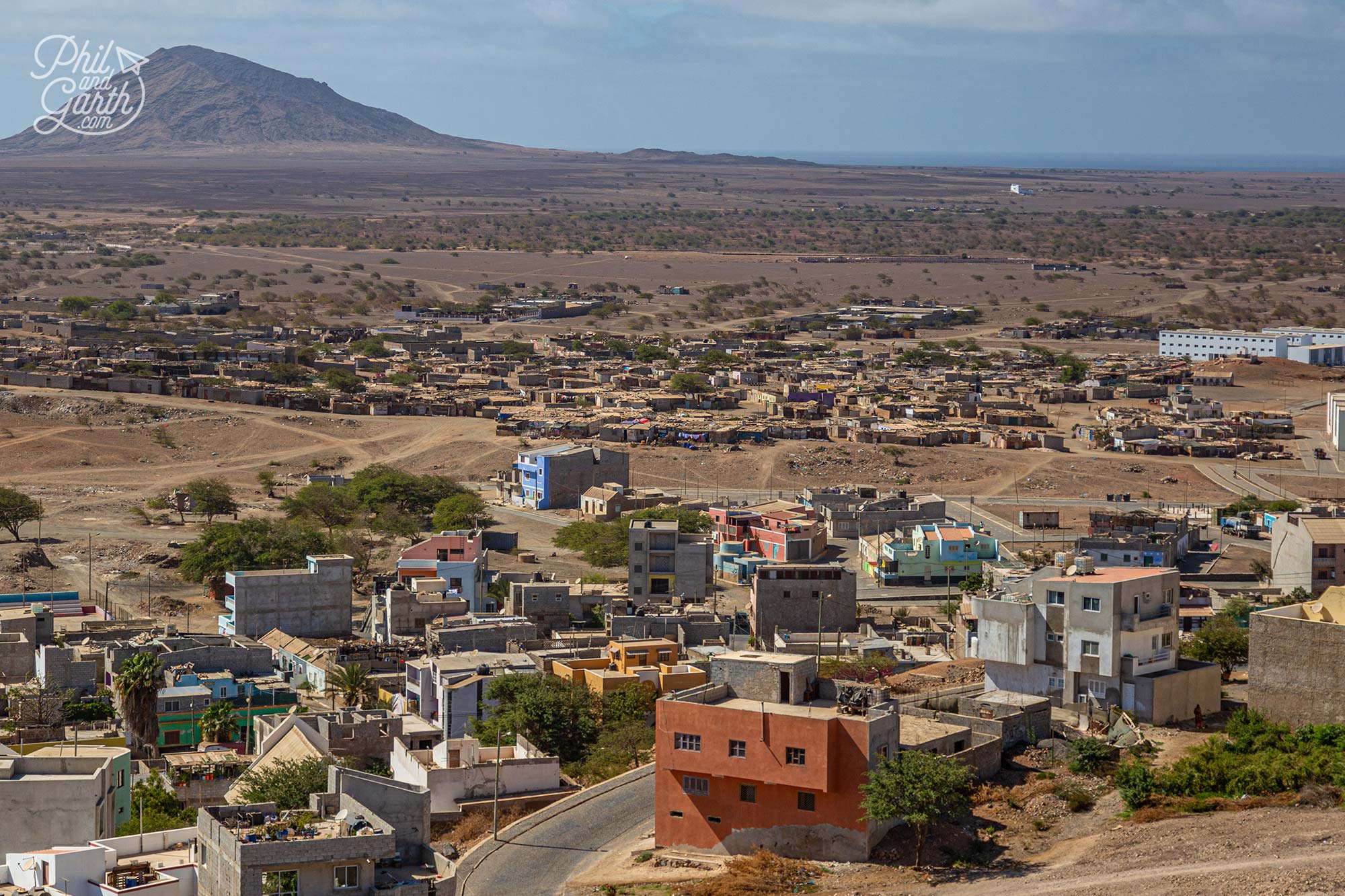
You’ll also see the divide between rich and poor, with large shanty towns outside Espargos
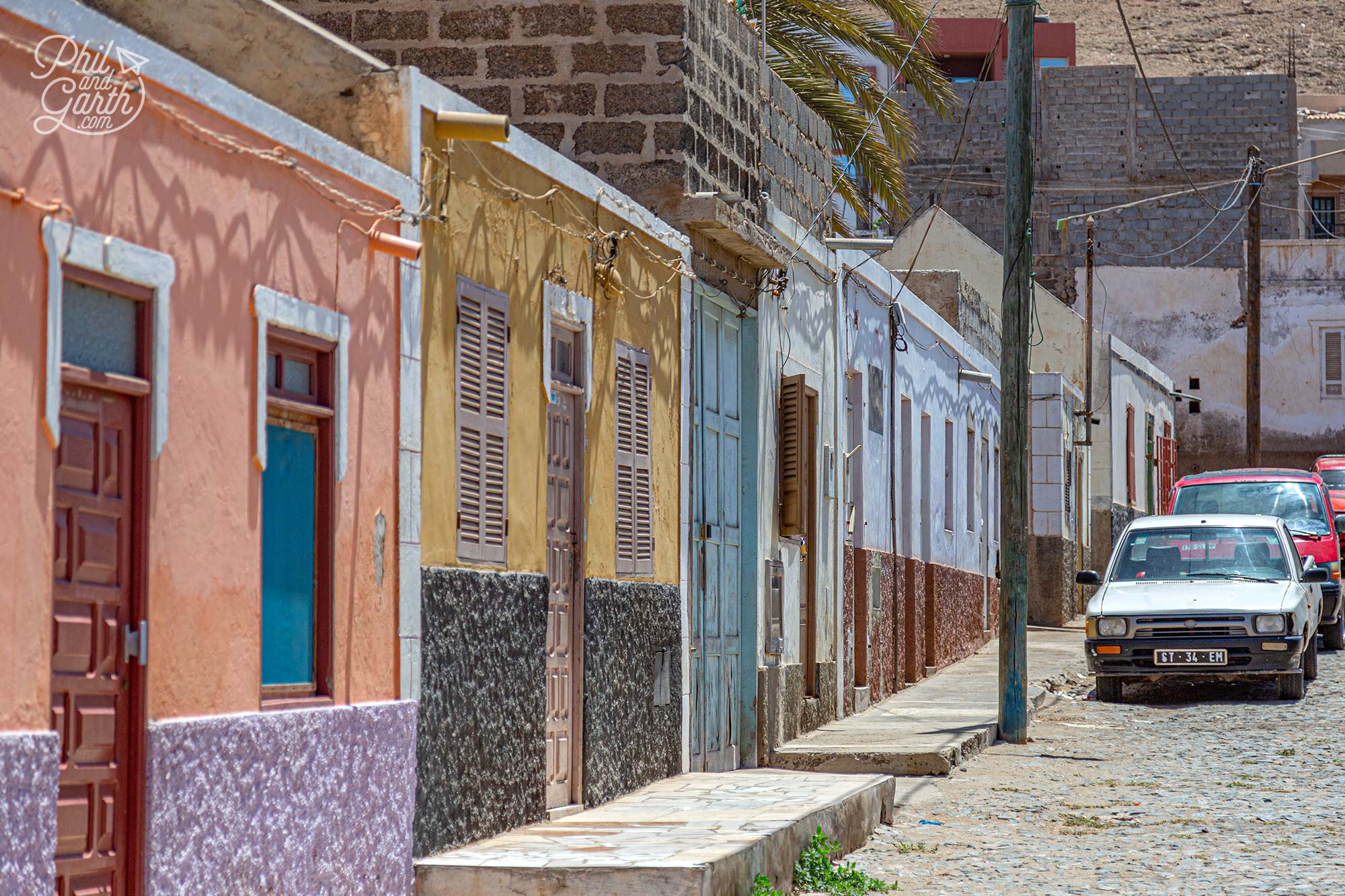
A colourful street in Espargos
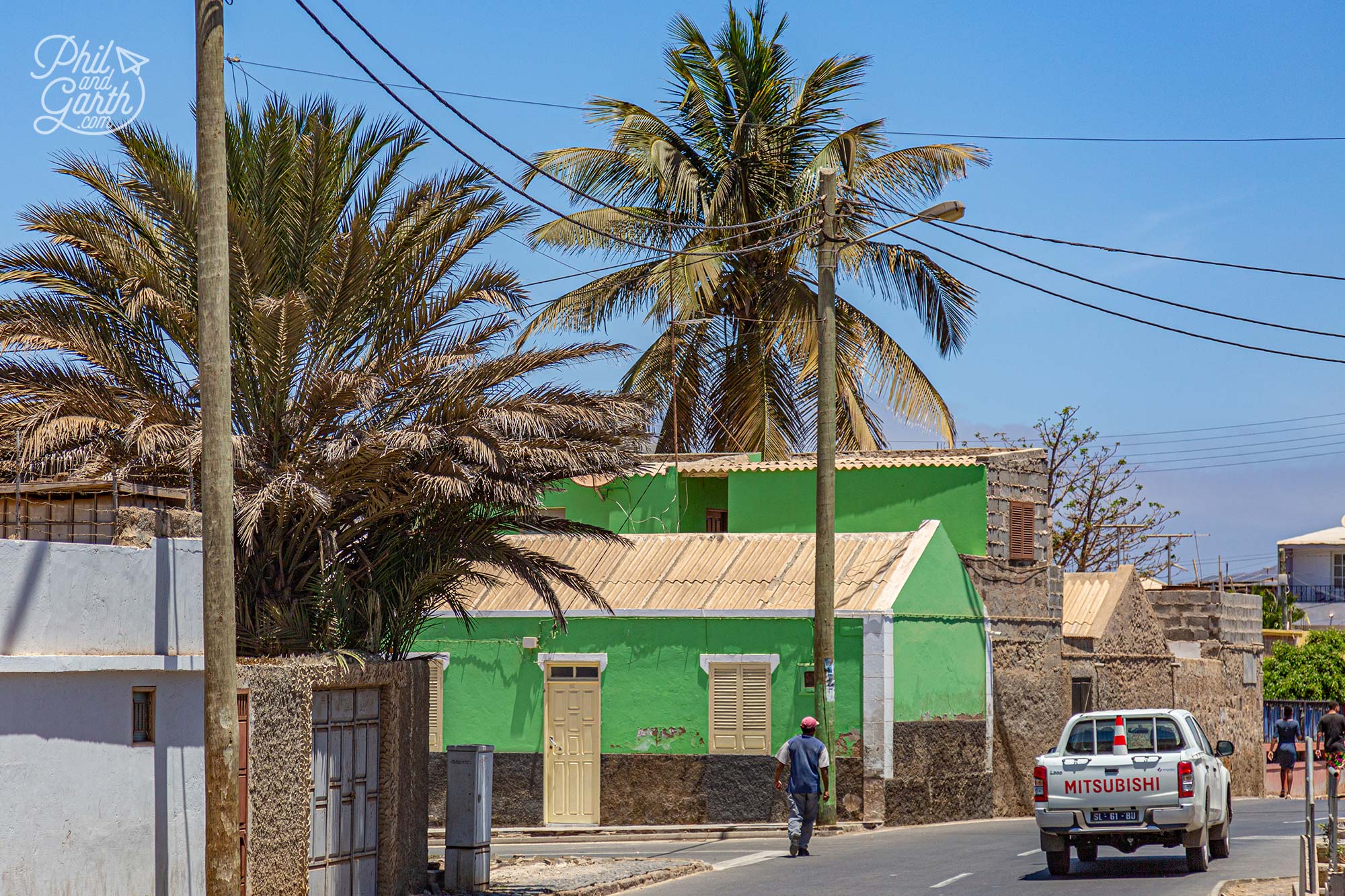
The sunny streets of Espargos
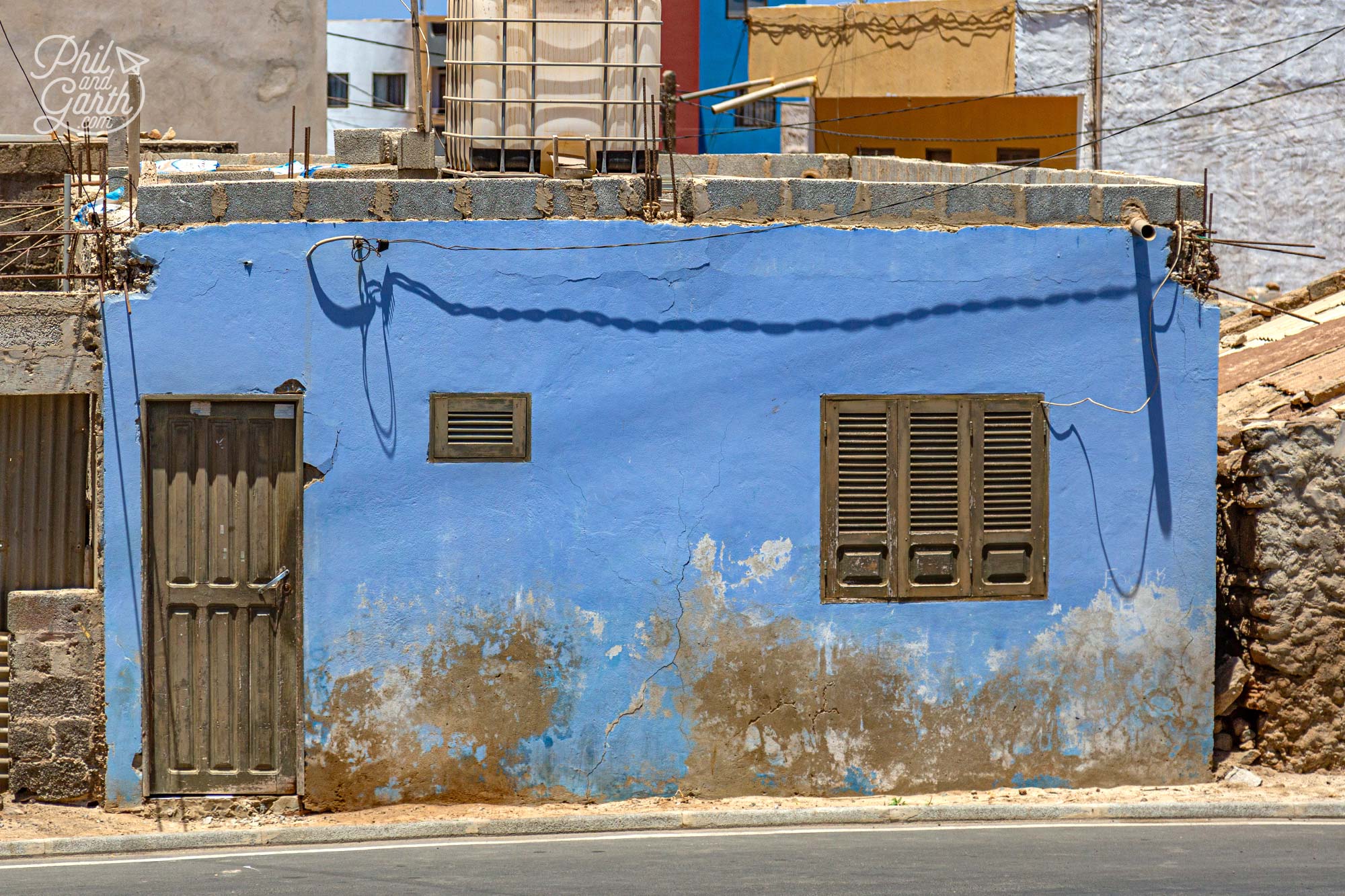
People paint and build their homes floor by floor
As we drive out of the city to our next stop, Garth spotted more Cape Verde street here. Like the mural of Cape Verdean women by the artist Adi Neves.
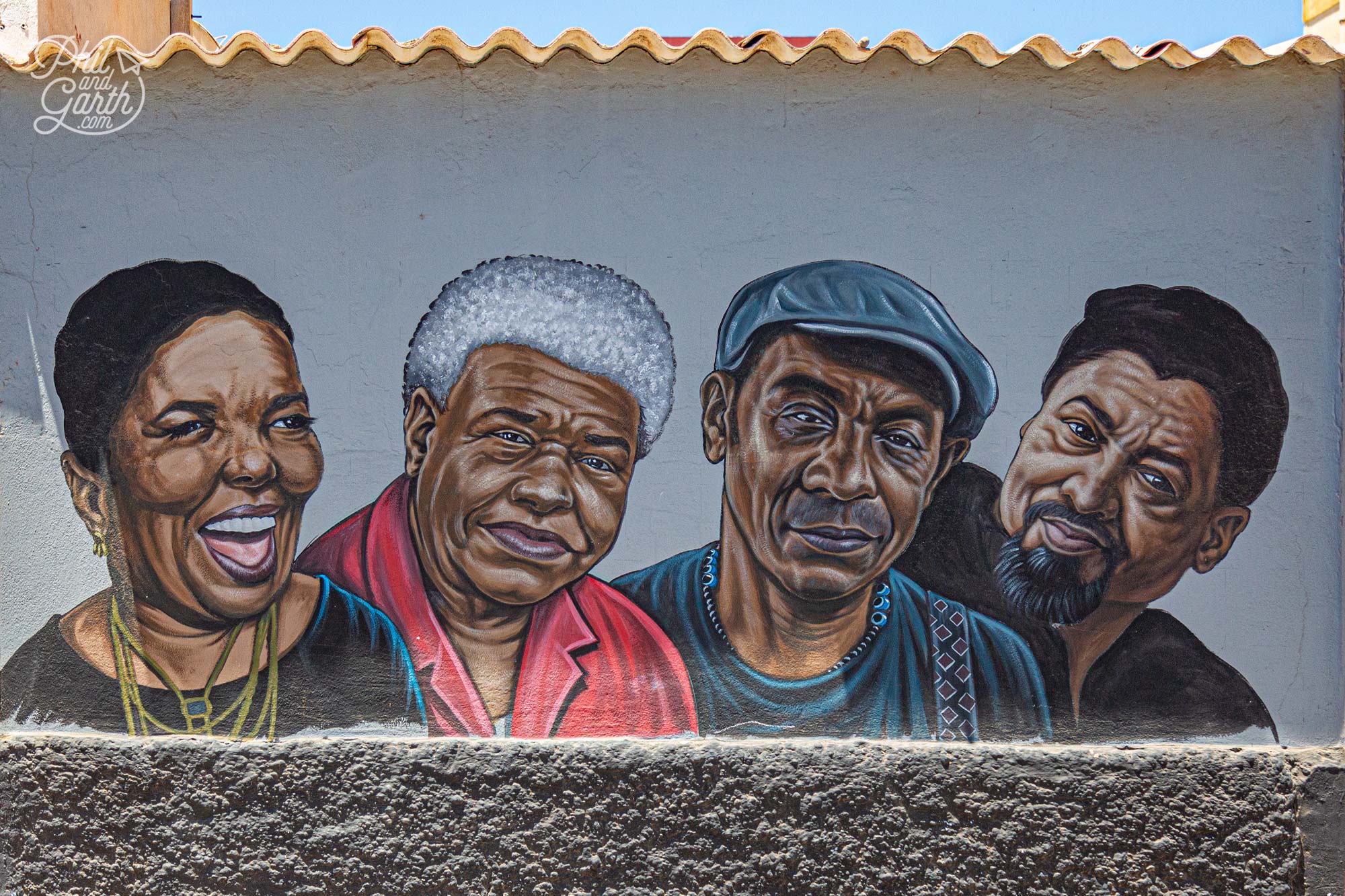
Love this illustrative style
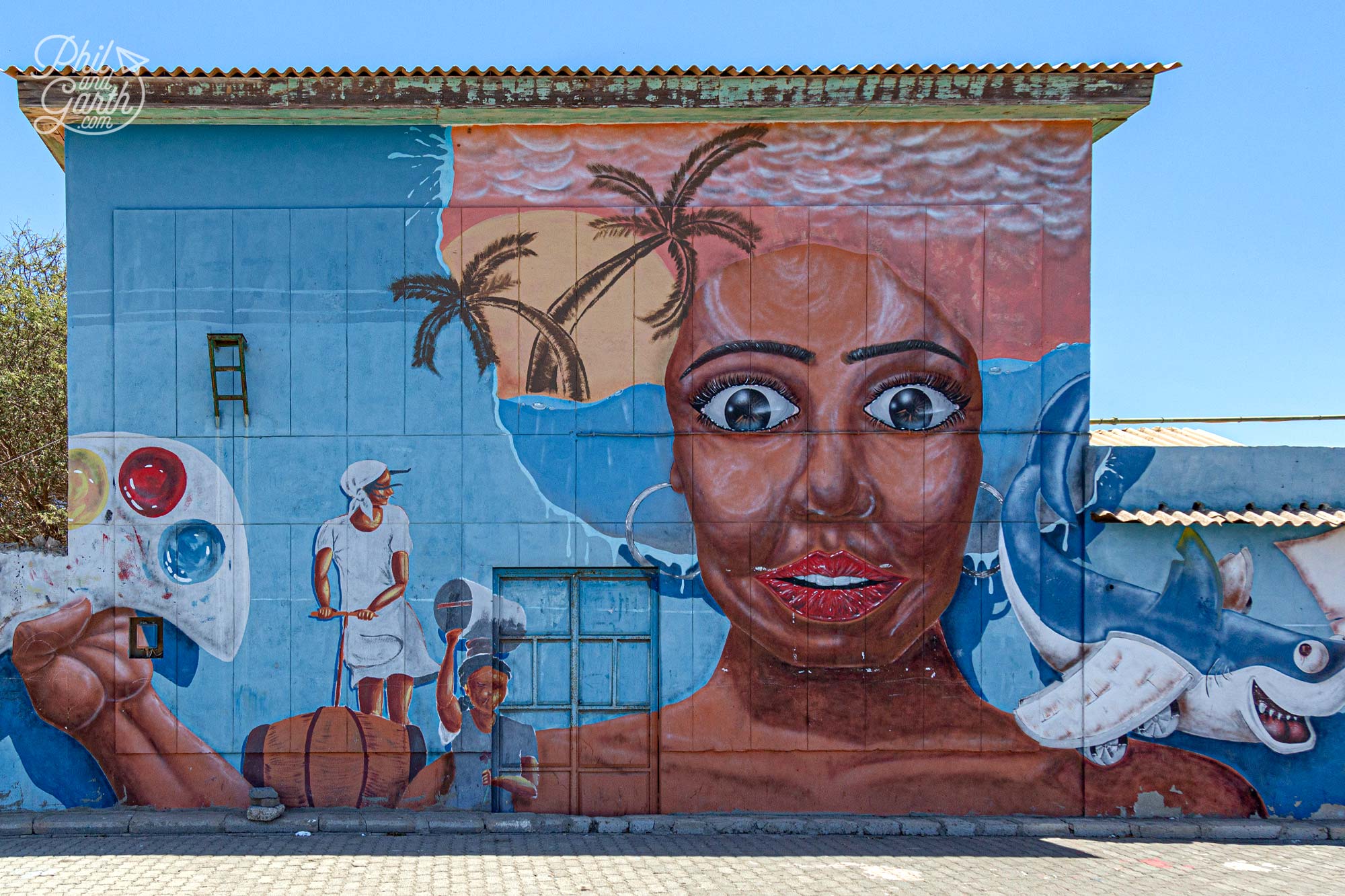
Espargos street art
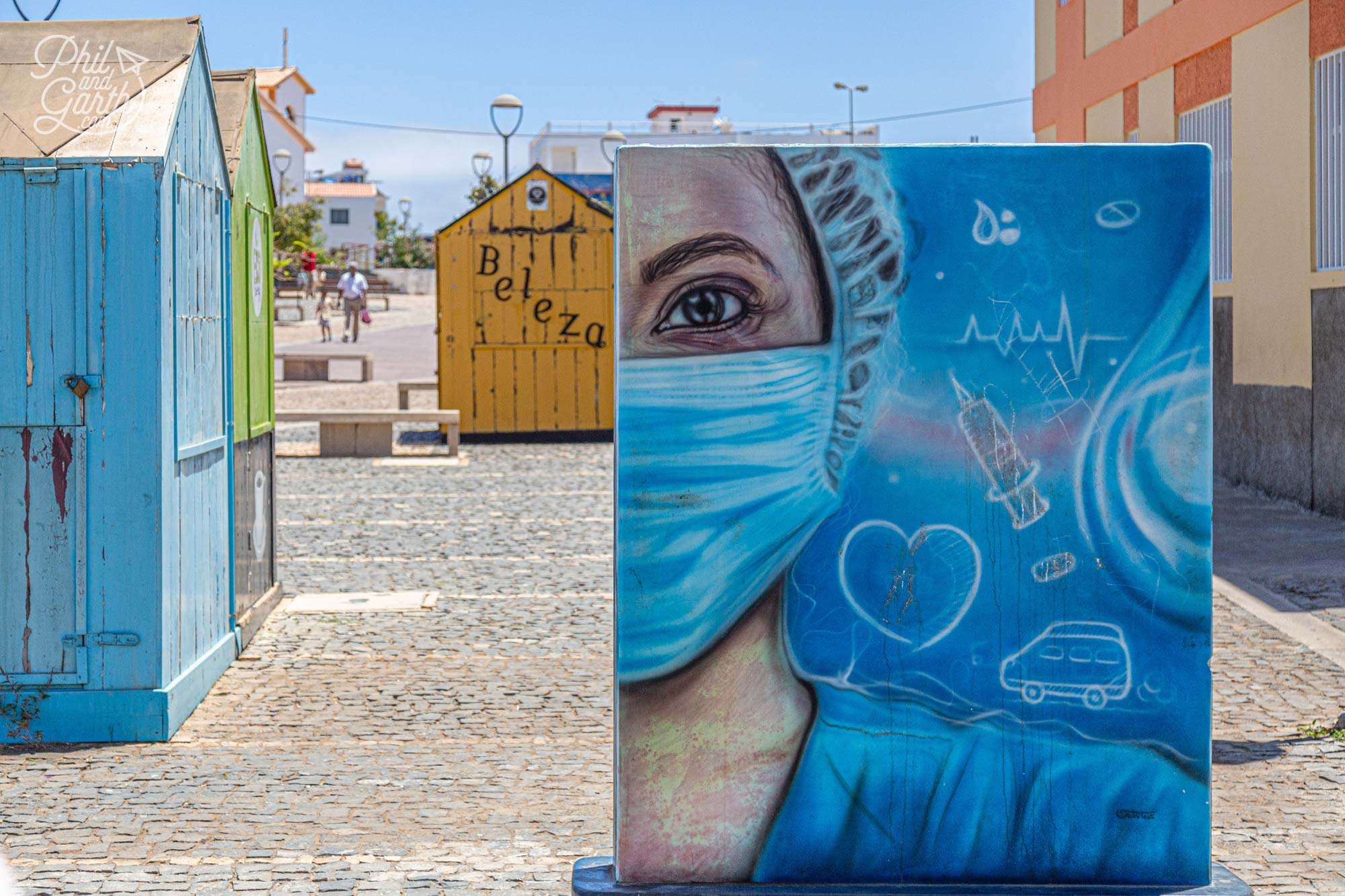
So much street art in Espargos
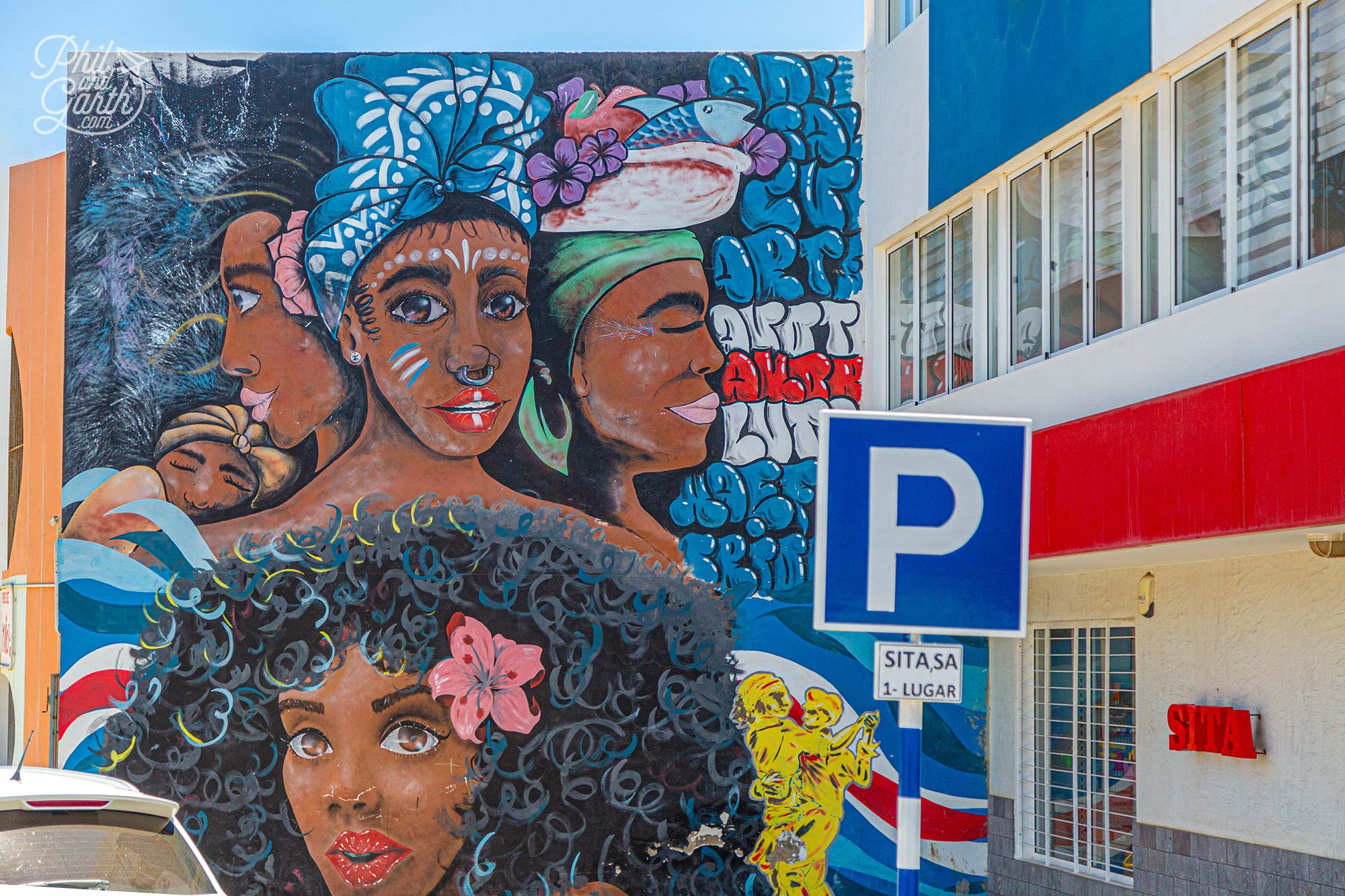
Mural of Cape Verdean women by the artist Adi Neves
9. Shark Bay
Our 9th stop was our first ‘experience’ to witness sharks swimming around our legs. Yes! sharks, however, these are baby lemon sharks that only swim in warm shallow water whilst looking for fish to eat.
Garth loved this experience, Phil got a bit freaked out (you know he doesn’t like fish in his personal space!) but took some photos from afar.
We started by hiring some rubber croc shoes and a guide for 3 Euro each. You really need the Crocs shoes as sea floor is coral and rocky. Change into some swim shorts as you’ll go wading up to thigh level. Our guide took us out and had a bag of fish guts which he used to attract the baby sharks.
After a couple of attempts looking and walking through the sea for the sharks, we soon found lots of baby sharks and fish. Garth had about 5 sharks swimming through his legs and brushing up against his legs. The feeling was a bit like a cat. They are not dangerous to humans and don’t bite. 🦈 We highly recommend the experience!
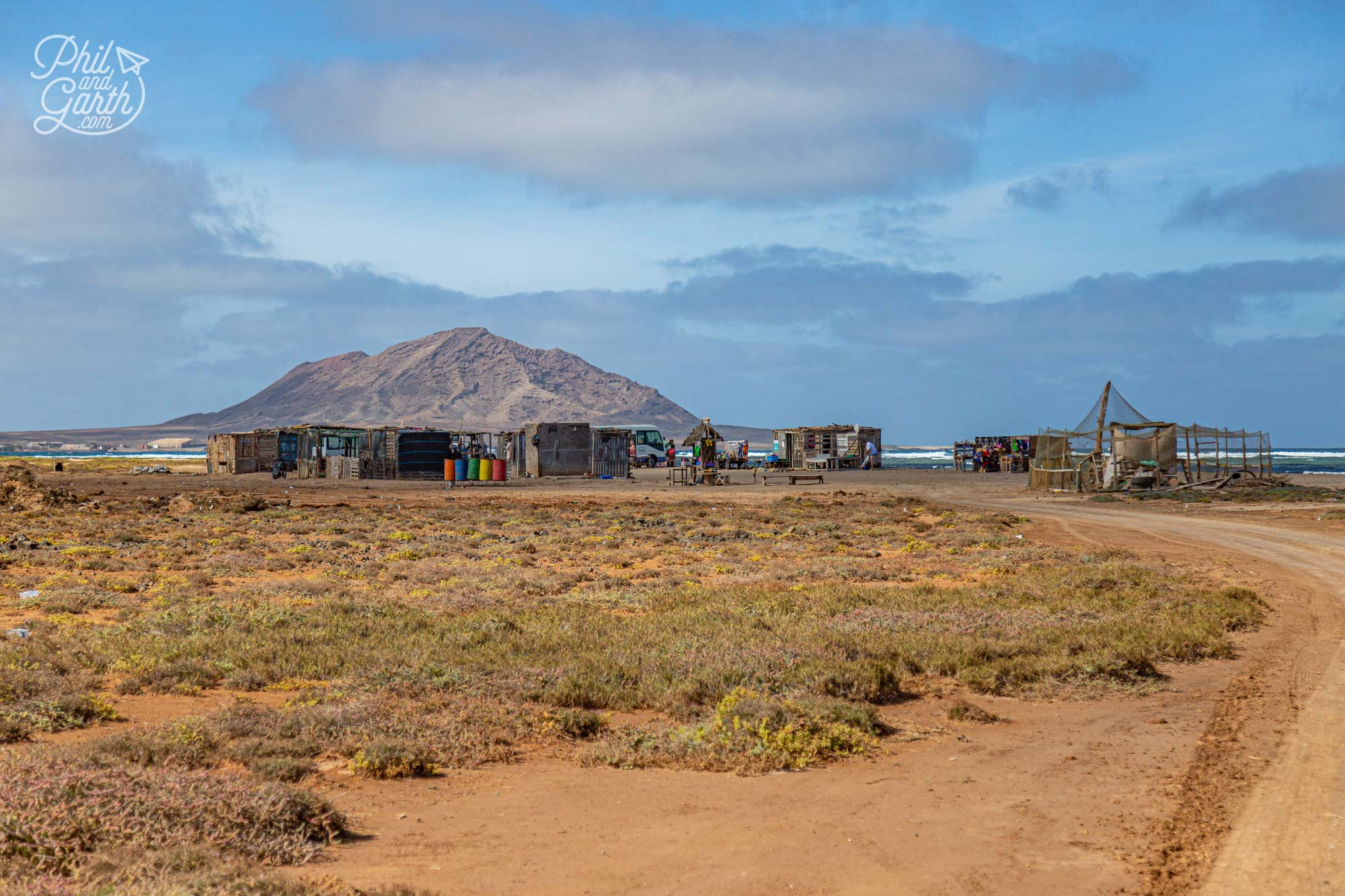
Shark Bay is basic, don’t expect any facilities here
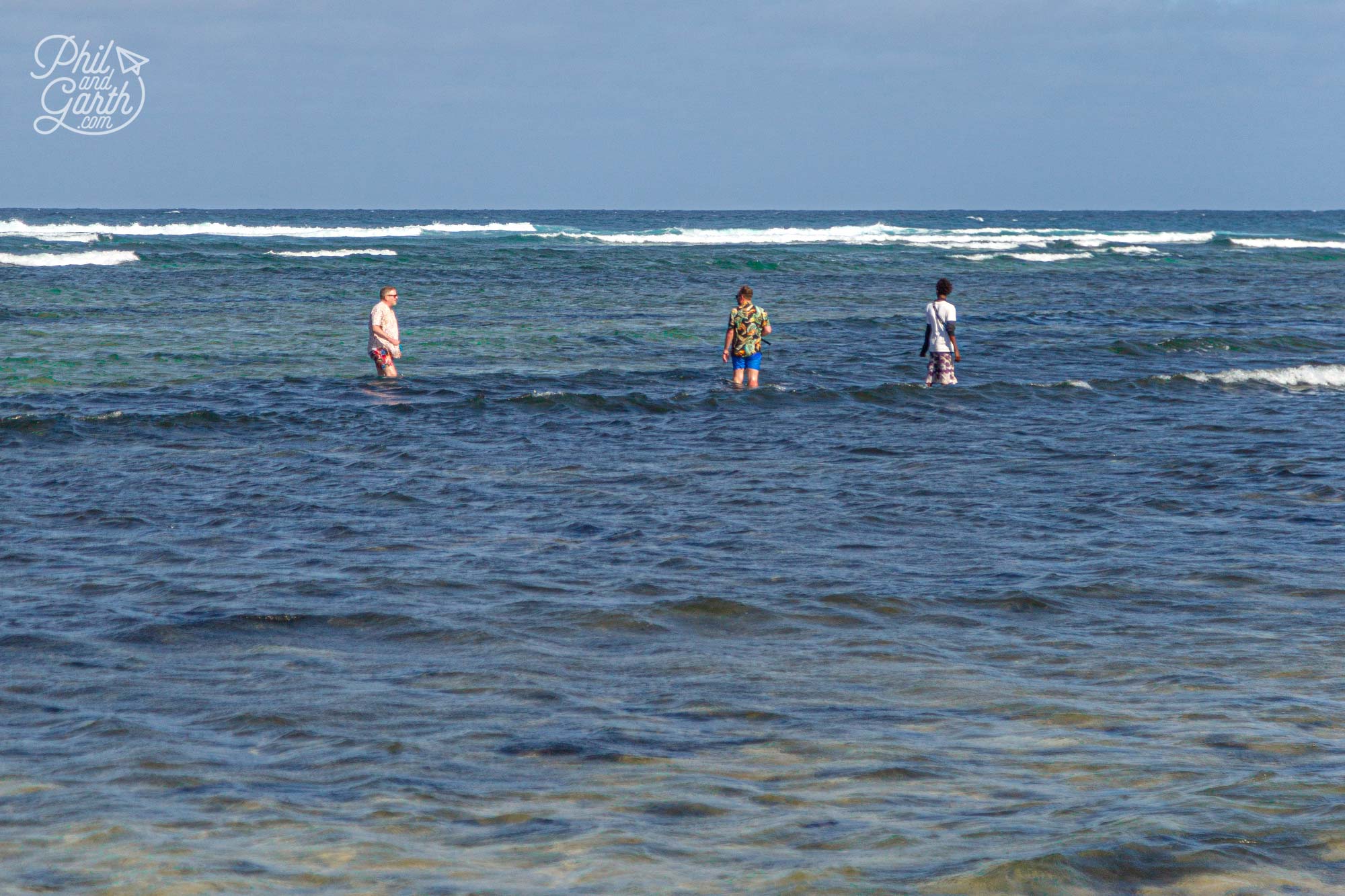
Searching for baby sharks with our guide
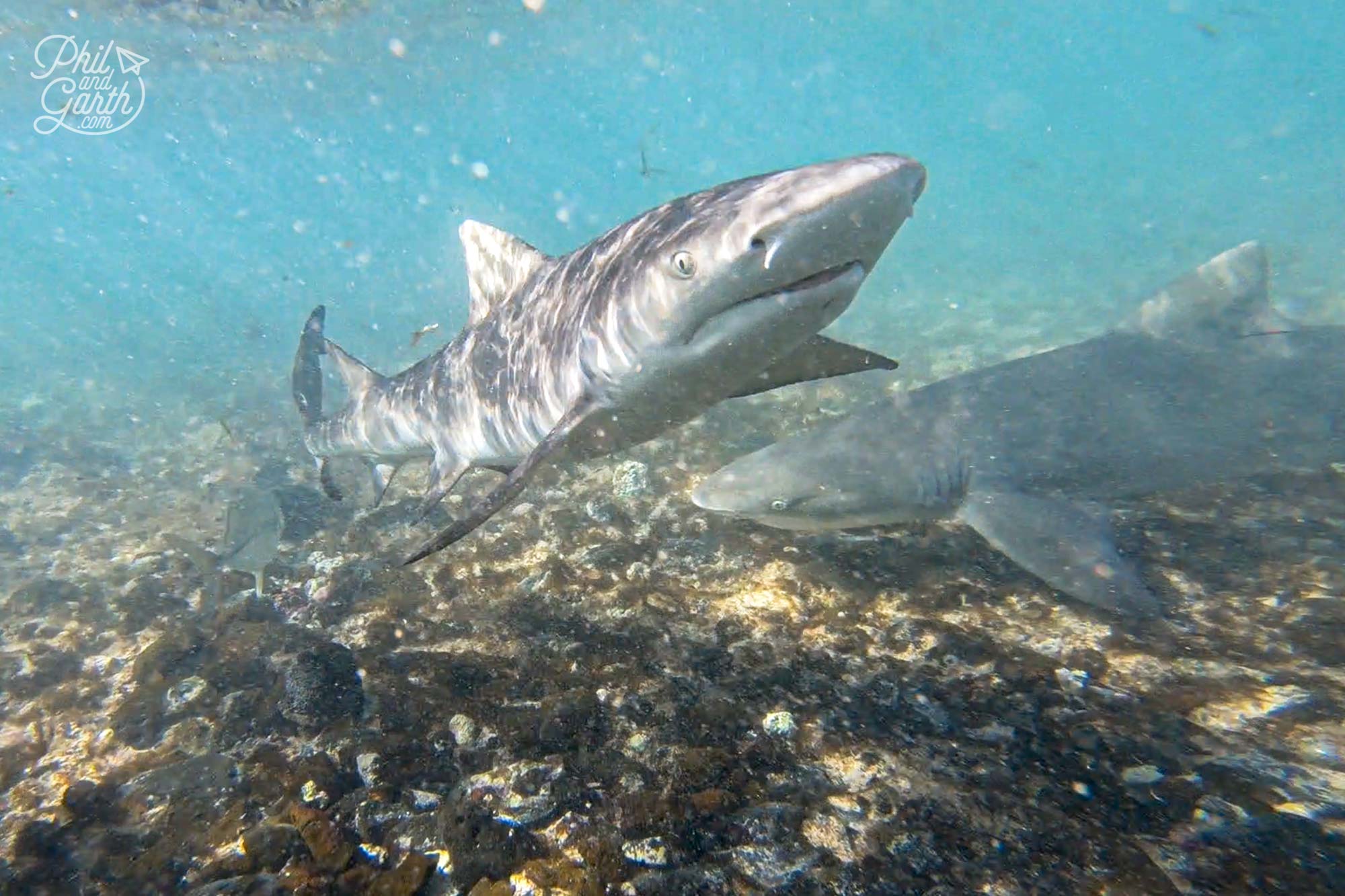
Baby lemon sharks in the Atlantic Ocean
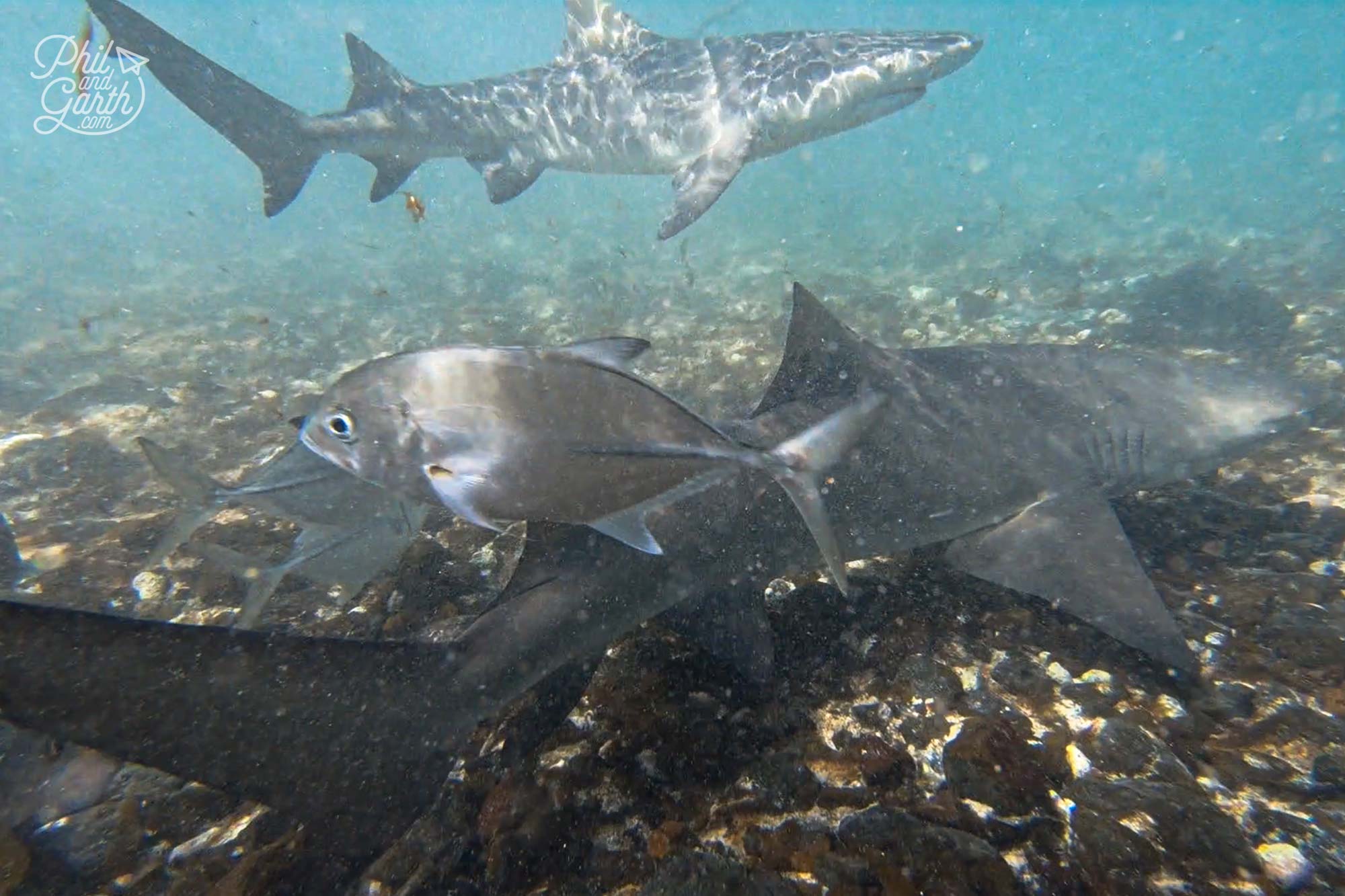
So many fish and baby lemon sharks!
10. Salinas de Pedra de Lume – Salt Mine
Our 10th and final stop on our Sal private island tour is a good one. Another experience – this time floating in the Salinas de Pedra de Lume – an old salt mine, now a floating spa experience.
It’s an ancient volcanic crater where you’ll find the island’s former huge salt mine. It began in 1833 but by 1985 salt production ended. You can still see the old cable car structures that were used to transport the salt. The site was bought by an Italian company in the late 1990s and turned into a spa experience.
We arrived here at 5pm, not long before closing time, but it’s the perfect time to be away from the crowds and fierce desert heat.
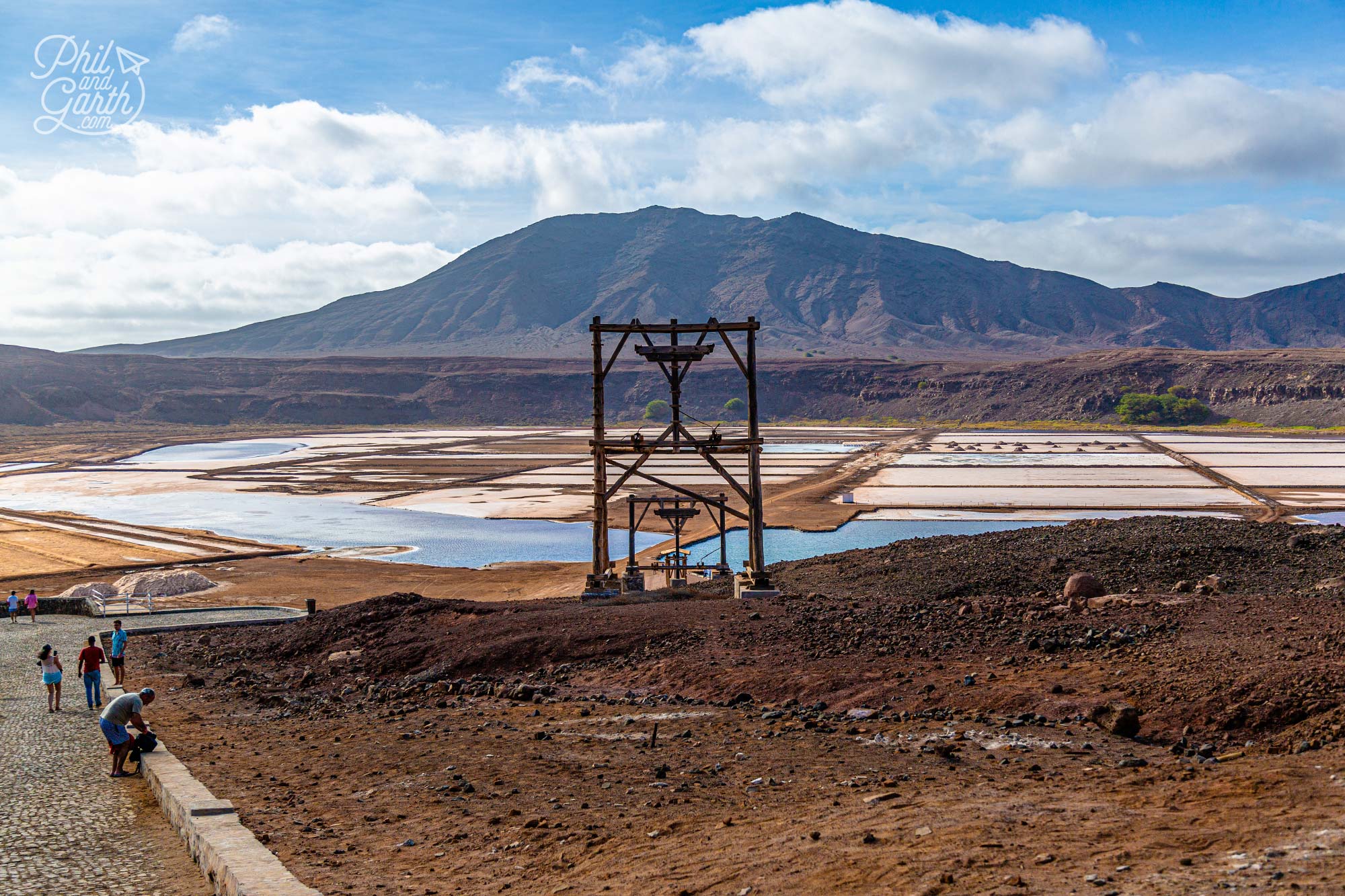
The salt lake is the lowest point of all the Cape Verde islands
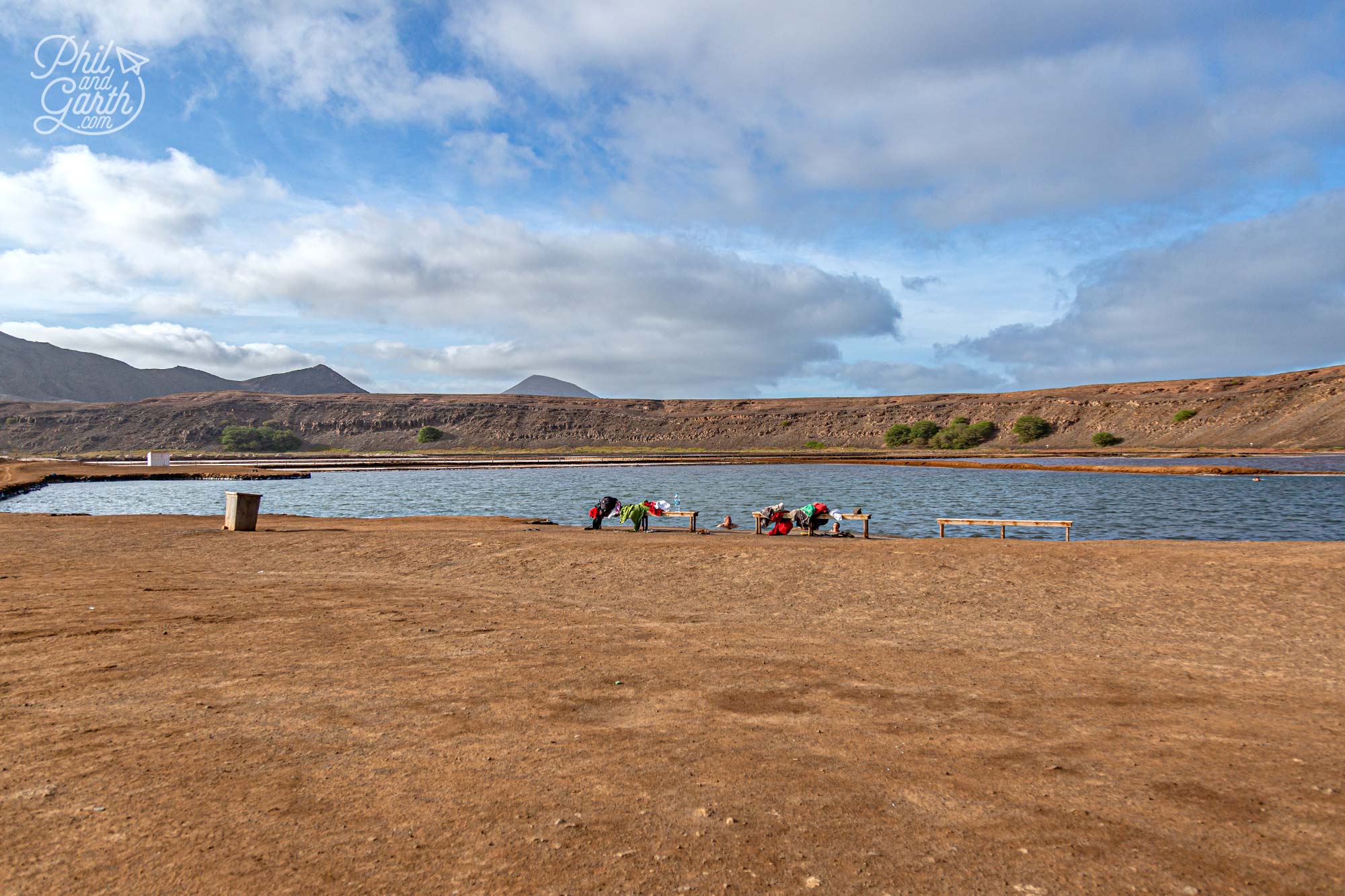
The salt water lake is free for locals to visit
After a quick change in the onsite changing rooms, we made our way to the water’s edge. You basically wade in until waist height and slowly fall backwards. Suddenly you will be floating with absolutely no effort. The saltwater has incredible density – 27 times saltier than the Atlantic Ocean which means the salinity is higher than that of floating in the Dead Sea. The high magnesium-rich content is said to be great for your skin leaving you 10 years younger than when you entered. The salt is also an excellent natural scrub, leaving your skin feeling super-smooth.
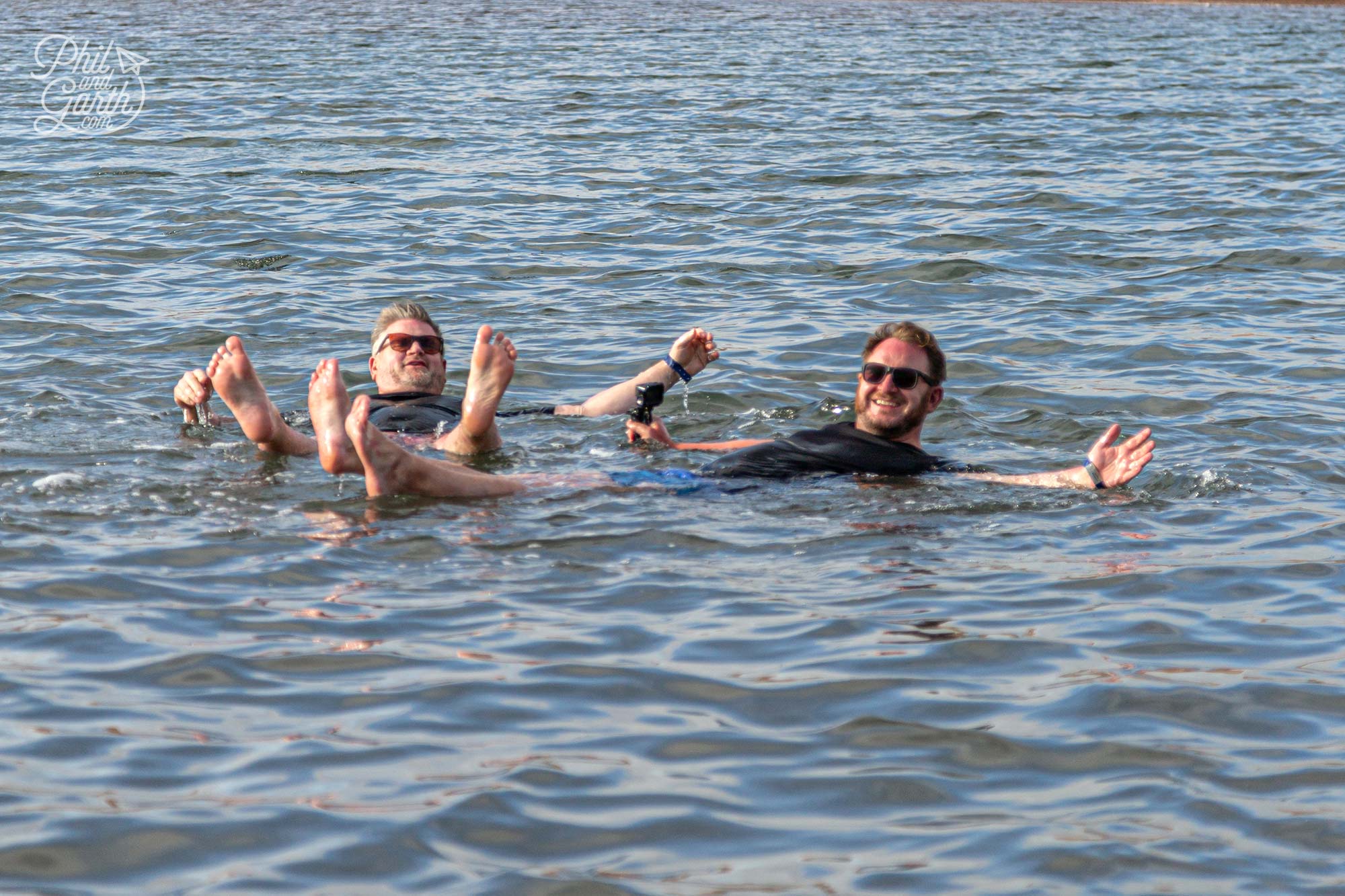
Floating in water 27 times saltier than the Atlantic Ocean
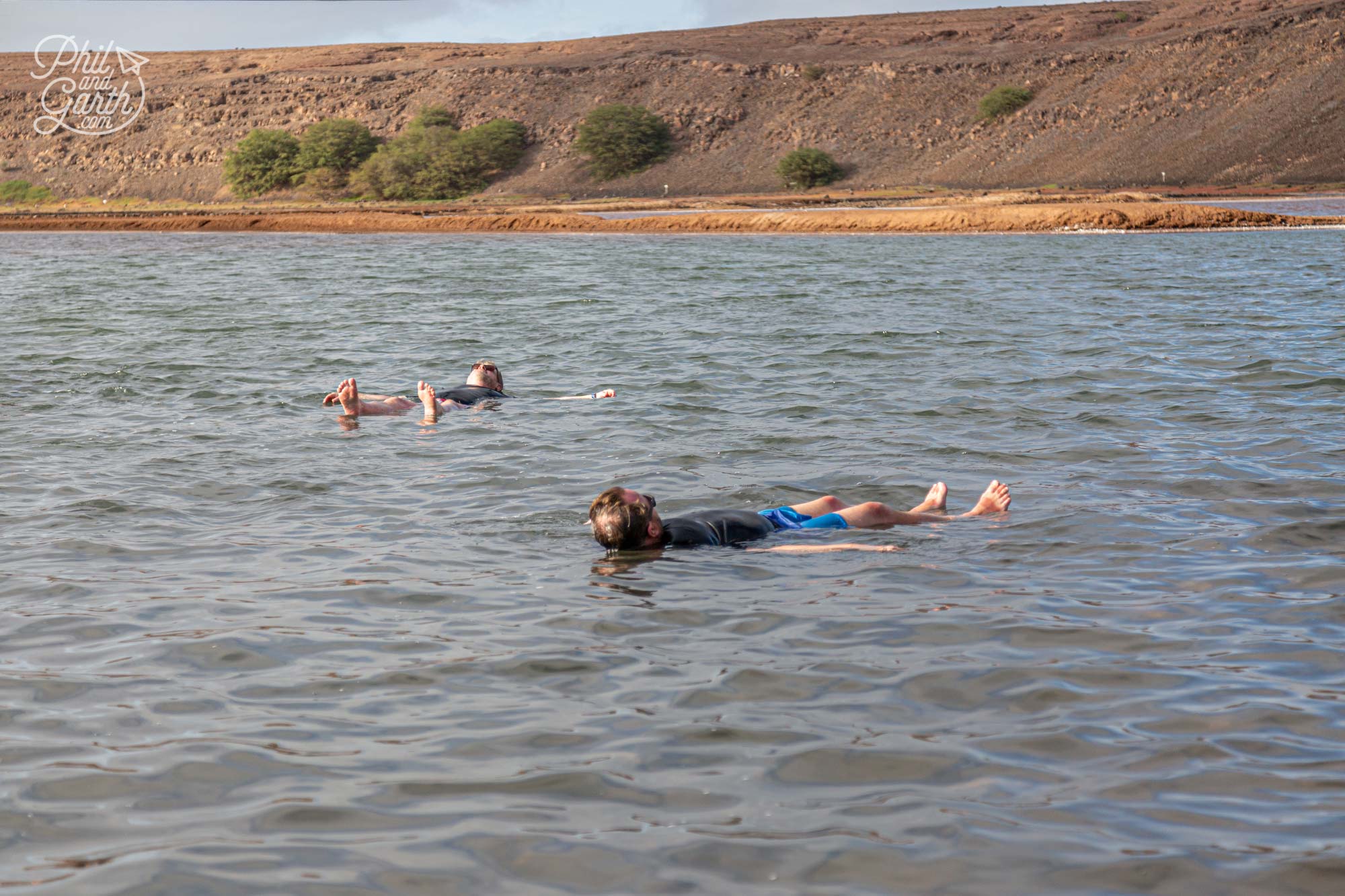
The high concentration of salt is said to be good for muscles and the skin
It’s a very weird experience as it’s almost impossible to swim as your bum gets pushed up out of the water and you are aligned all wrong. It’s also really difficult to stand up as the salt keeps pushing your legs up again! However all great fun, we spent a total of 20 minutes relaxing – you basically need to just float, don’t move and enjoy the sensation.
If you want to, you can also cover yourself in mud from the banks for extra ‘spa like experience’ we didn’t as Kendall said the mud smells really bad! 😆
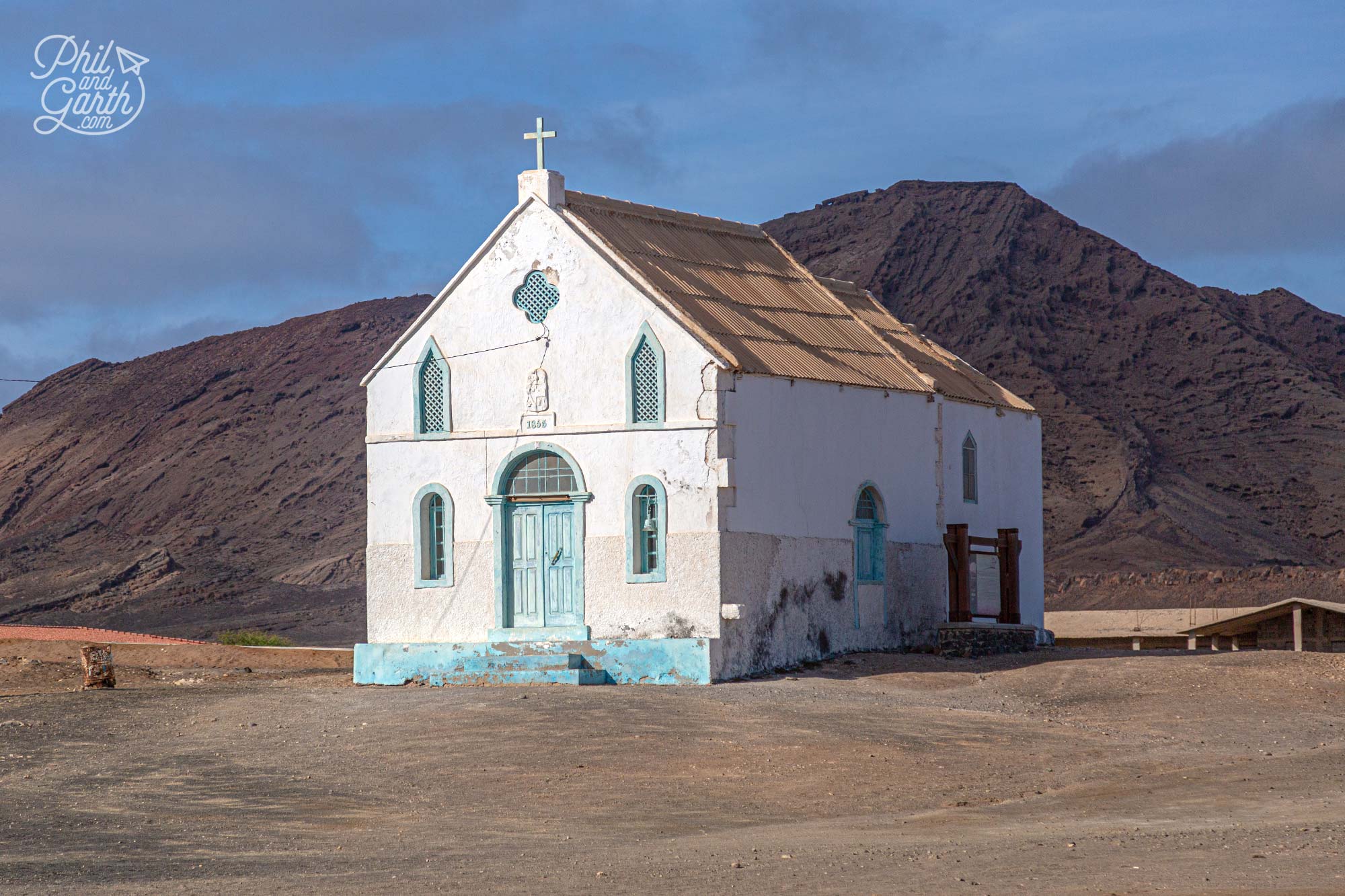
See the isolated church – Lady of Compassion as you drive in or out of the Salinas
Sal Practical information and Travel Advice
Phil and Garth’s Sal, Cape Verde Travel Tips:
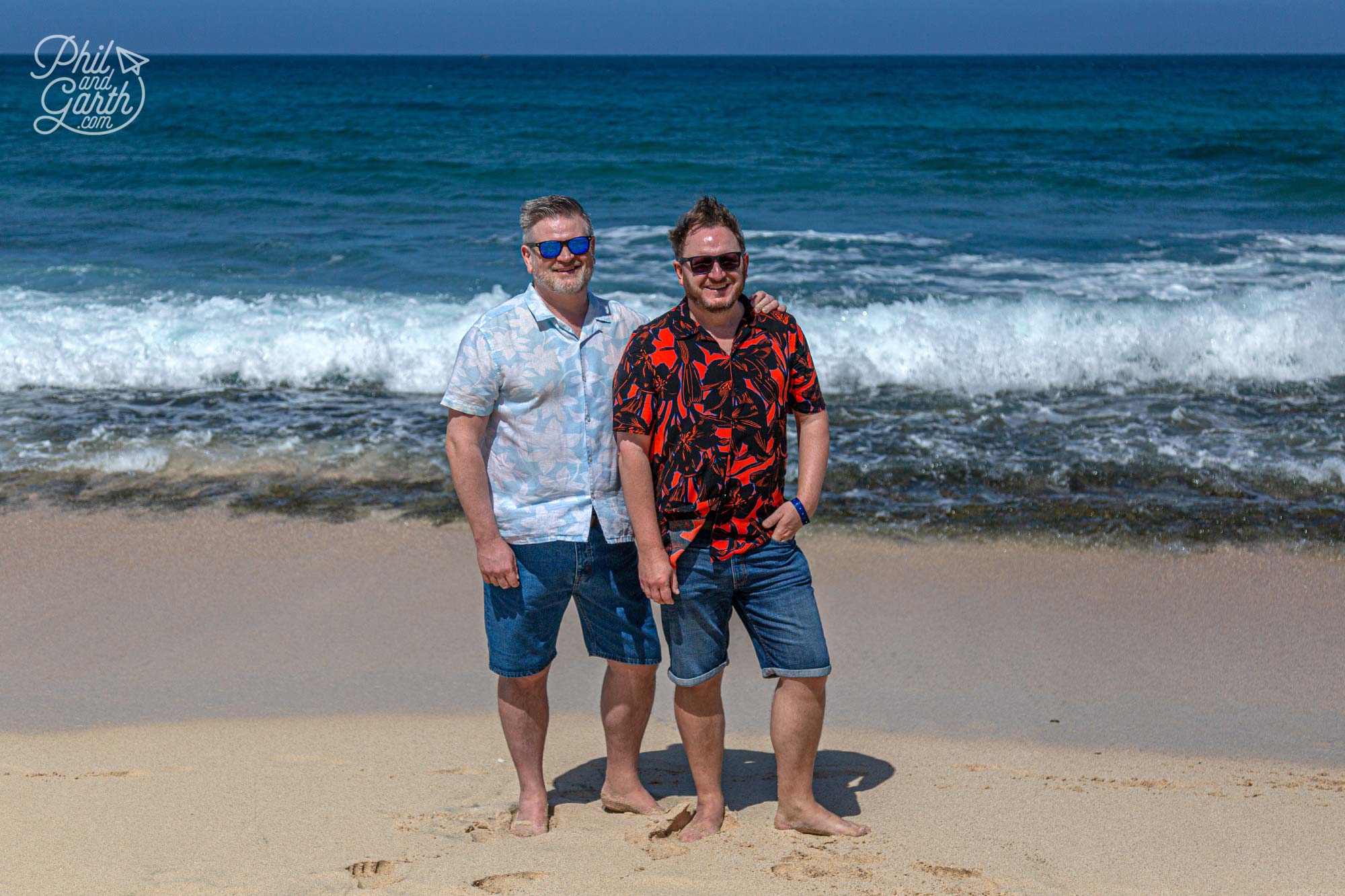
Phil and Garth’s Top 5 Sal, Cape Verde Tips
- Tip #1: A lot of the private tour is off-road so can be quite bumpy along plenty of dirt tracks. Even on the main roads, there are potholes everywhere.
- Tip #2: The wind makes you feel cool, and it can be easy to forget to apply lots of sunscreen or drink lots of water.
- Tip #3: Cape Verde is close to the equator, so avoid being out in the sun between noon – 3pm.
- Tip #4 Bring with you crocs or jelly shoes if you have a pair for the snorkelling beach.
- Tip #5: Sit on the right-hand side of the plane facing the cockpit for the best view of Sal as you come into land.
Sal, Cape Verde FAQs
- When is the best time to visit Cape Verde? November to May – the dry season. Temperatures are warm and skies sunny.
- When is high and low season in Sal? High season runs from September to March. Sal’s low season is from April to August.
- What is the windiest month on Sal? January to May, however you’ll find the wind dies down in the evenings. You might also get Sahara Sands storms from March to June.
- When is the wettest month in Cape Verde? August is the wettest month.
- When can I see turtles on Sal? July to October is turtle breeding time. You’ll see endangered loggerhead turtles on the beach laying their eggs. August is the best month.
- Can you swim at Sal’s beaches? Yes, just look for the coloured flags. Red means no swimming, yellow means take care and green means it’s safe.
- Does the sea in Cape Verde have sharks? Yes, tiger sharks are the main predator. You might also see baby lemon sharks don’t bite and are friendly (see above).
- What is the the Cape Verde currency? The local currency is Cape Verde Escudo (CVE). Most places will accept Euros. It’s best to exchange some Euros at the airport on arrival.
- Is Cape Verde in Europe? No, Cape Verde is an African country.
- Can you drink the water in Cape Verde? No. You must drink bottled water.
- What is the local drink on Sal? Grogue (or Grog) is a strong rum produced from sugar cane.
- What is the local signature dish of Cape Verde? Cachupa is a stew made from sweet potato, corn, lentils, beans with fish or meat.
- Is Cabo Verde the same as Cape Verde? Yes – The country’s official name is Cabo Verde, Cape Verde is the English name.
- What electrical plugs are used in Cape Verde? Standard 2-pin European plug (C&F) Voltage is 220V.
- What language do people speak in Cape Verde? Portuguese and Creole.
- Is Sal, Cape Verde safe for LGBT+ visitors? Yes, Cape Verde is only one of the few African countries that treats people equally and even holds its own Pride event.
- How safe is Sal, Cape Verde? It’s a safe destination for tourists. Crime rates are low. Follow local advice for swimming in the sea because of strong currents and tides.
- What is the international code for the airport Sal Cape Verde? Amílcar Cabral International Airport. Country code SID.
- What is the population of Sal? 40,000 people
- What is Sal’s hidden gem? Pedra de Lume is Sal’s hidden gem beach.
- Do I need a visa for Cape Verde from Europe? No, not for less than 30 days. But you need to pay an airport tax on arrival or in advance online: https://www.ease.gov.cv
- Are there any health risks in Sal, Cape Verde? Mosquito-borne illnesses such as malaria and dengue fever are the biggest risk. Use insect repellent.
- What should I know about tipping in Sal, Cape Verde? Tipping is not obligatory but is appreciated for good service, typically around 5-10% of the bill in restaurants. It’s also customary to tip tour guides and drivers for excursions.
- What should I do in case of an emergency in Sal, Cape Verde? Dial 132 for police, 131 for medical emergencies, and 130 for the fire department.
How We Did It
We travelled at the beginning of April and booked a 4 night stay with TUI flying from Manchester staying at the Melia Llana – a 5 star adults only all-inclusive resort. We were pleasantly surprised after reading lots of negative comments on TripAdvisor. We thought it was more like a 4 star all inclusive resort by European standards, it’s not a Maldives 5 Star resort either. Nevertheless very good, with attentive friendly staff. Phil thought the all inclusive wine was acceptable, we enjoyed the Italian a la carte restaurant. A short taxi ride from the resort to Santa Maria will cost .
Our Sal Island private tour was amazing! We booked it in advance with Logan Tours and they pack a lot, I mean a lot into one day. So if you’re feeling adventurous and want to experience Sal’s culture, we’d recommend it. You’ll get lots of fascinating insights and local knowledge.
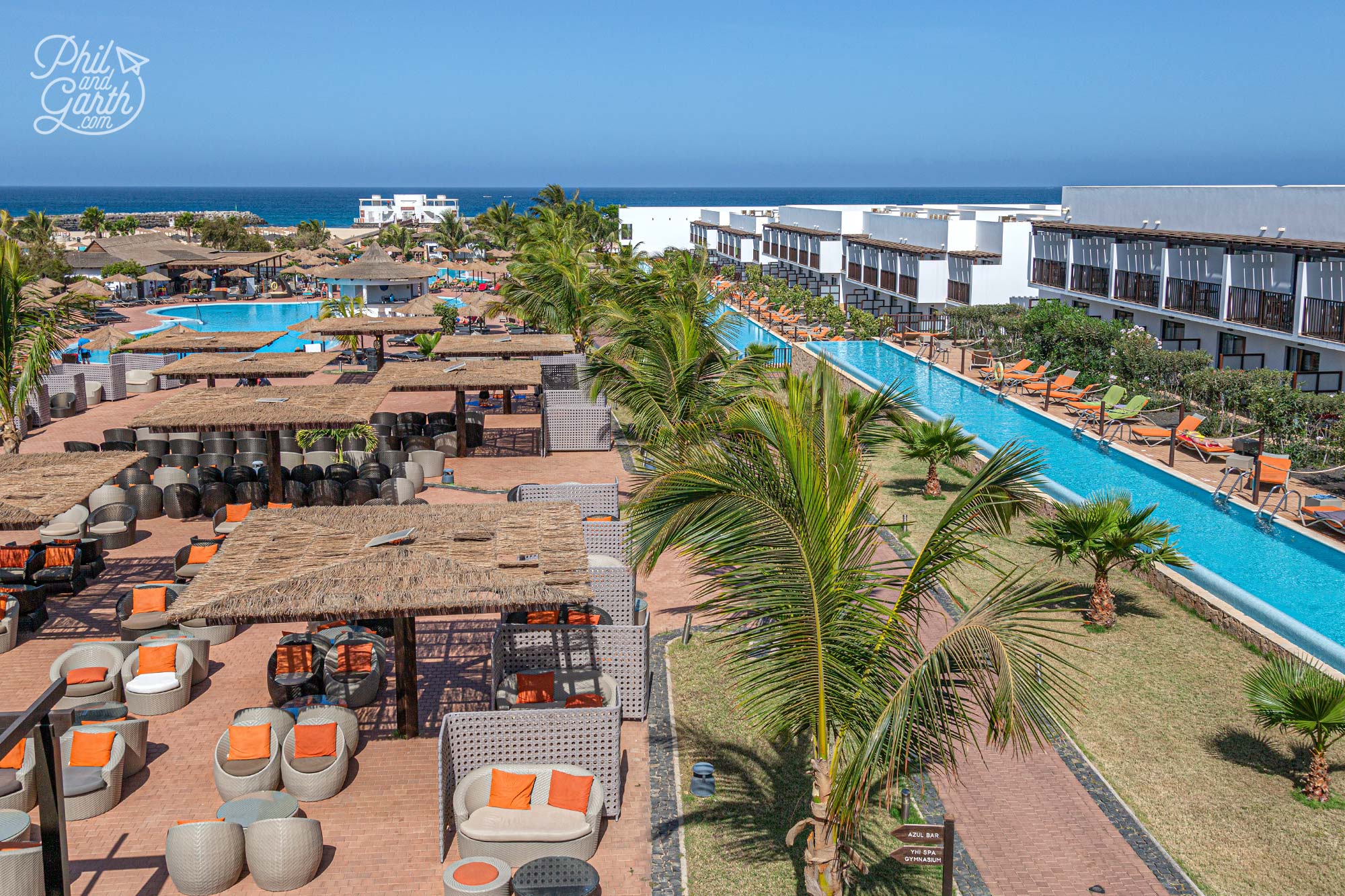
Melia Llana – an adults only resort
Pin our things to do on Sal, Cape Verde travel blog post for later…
Have you been to Sal, Cape Verde? Let us know your thoughts or other recommendations for things to do on Sal, Cape Verde in the comments below:


